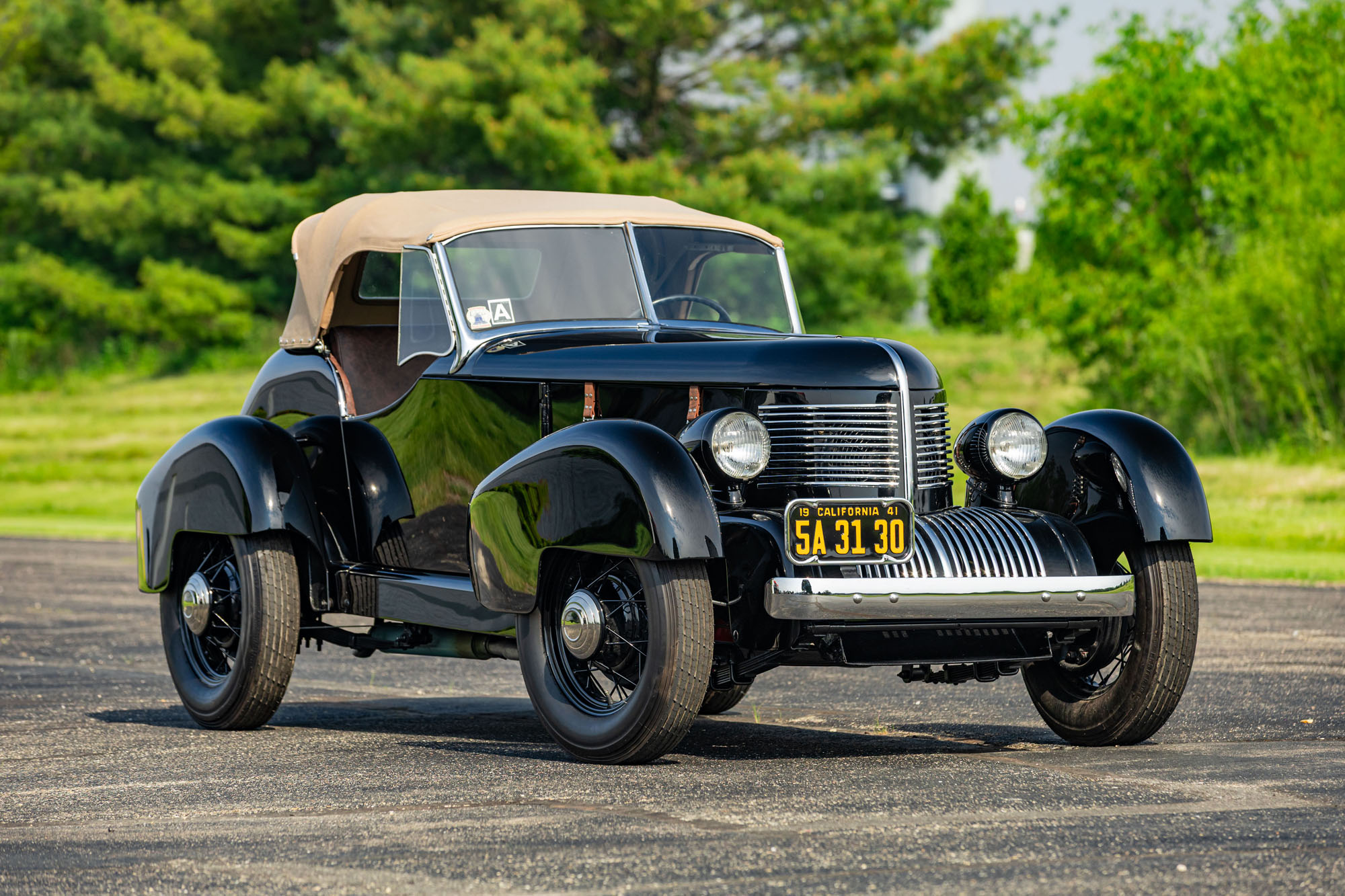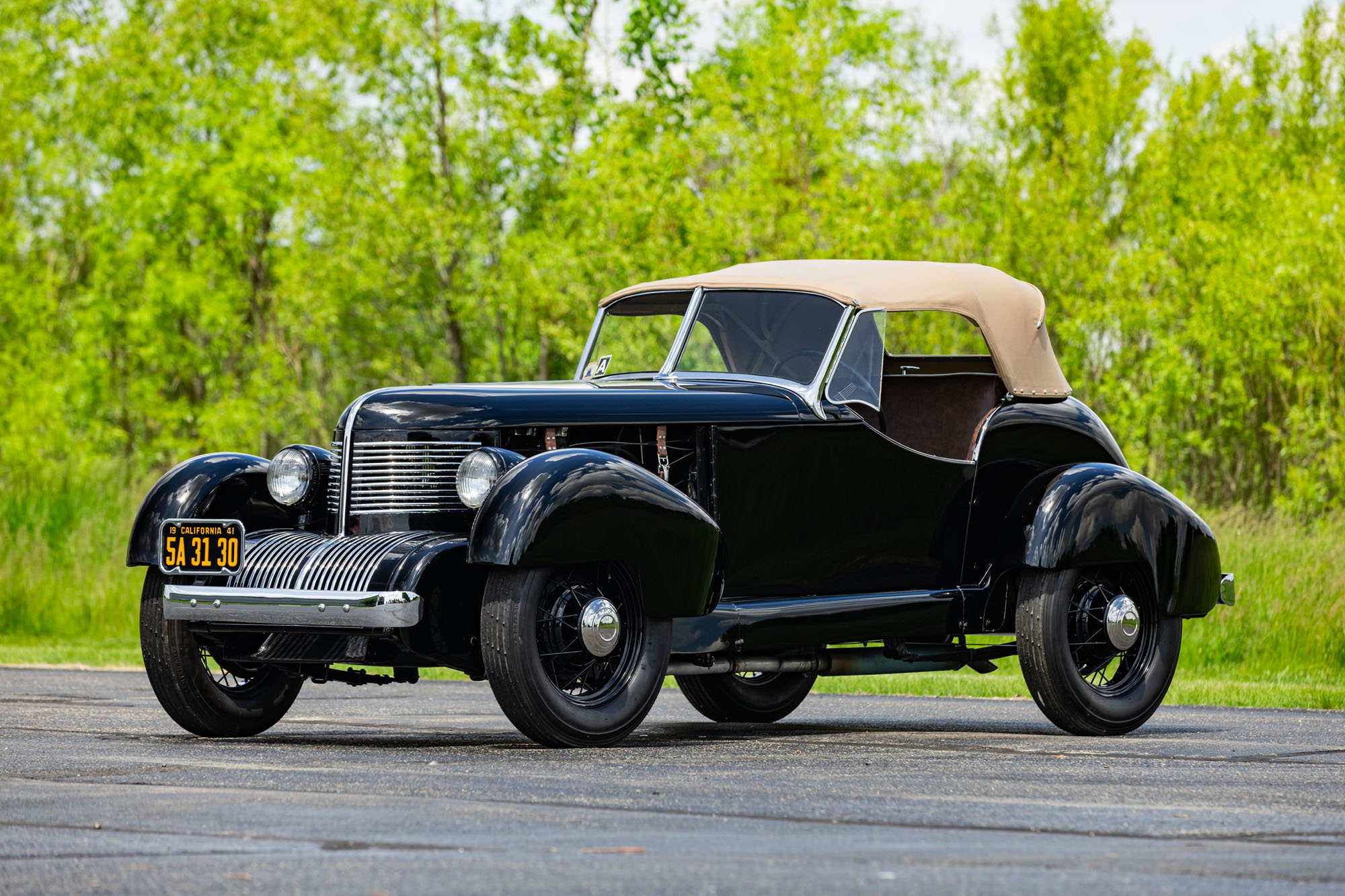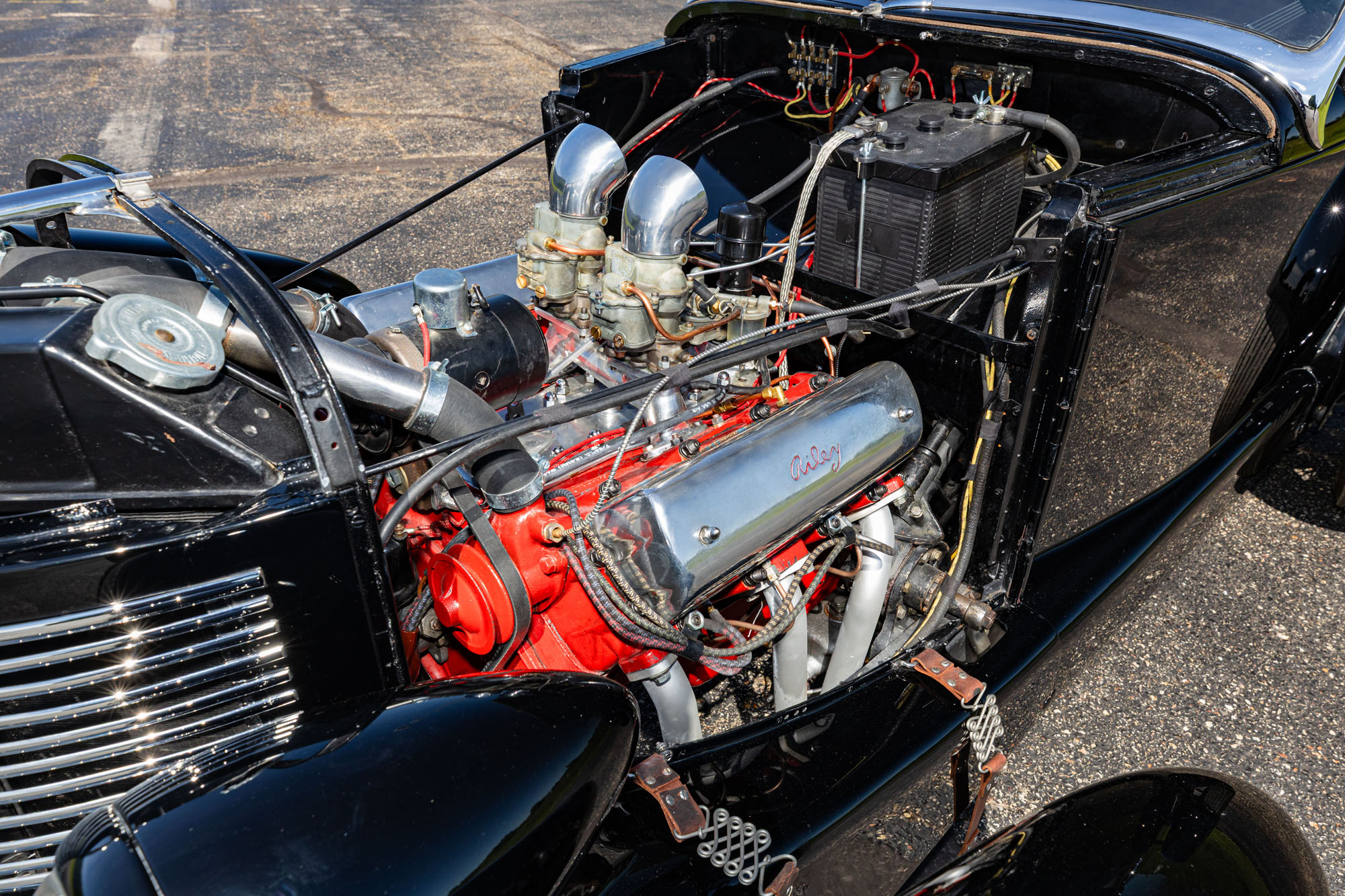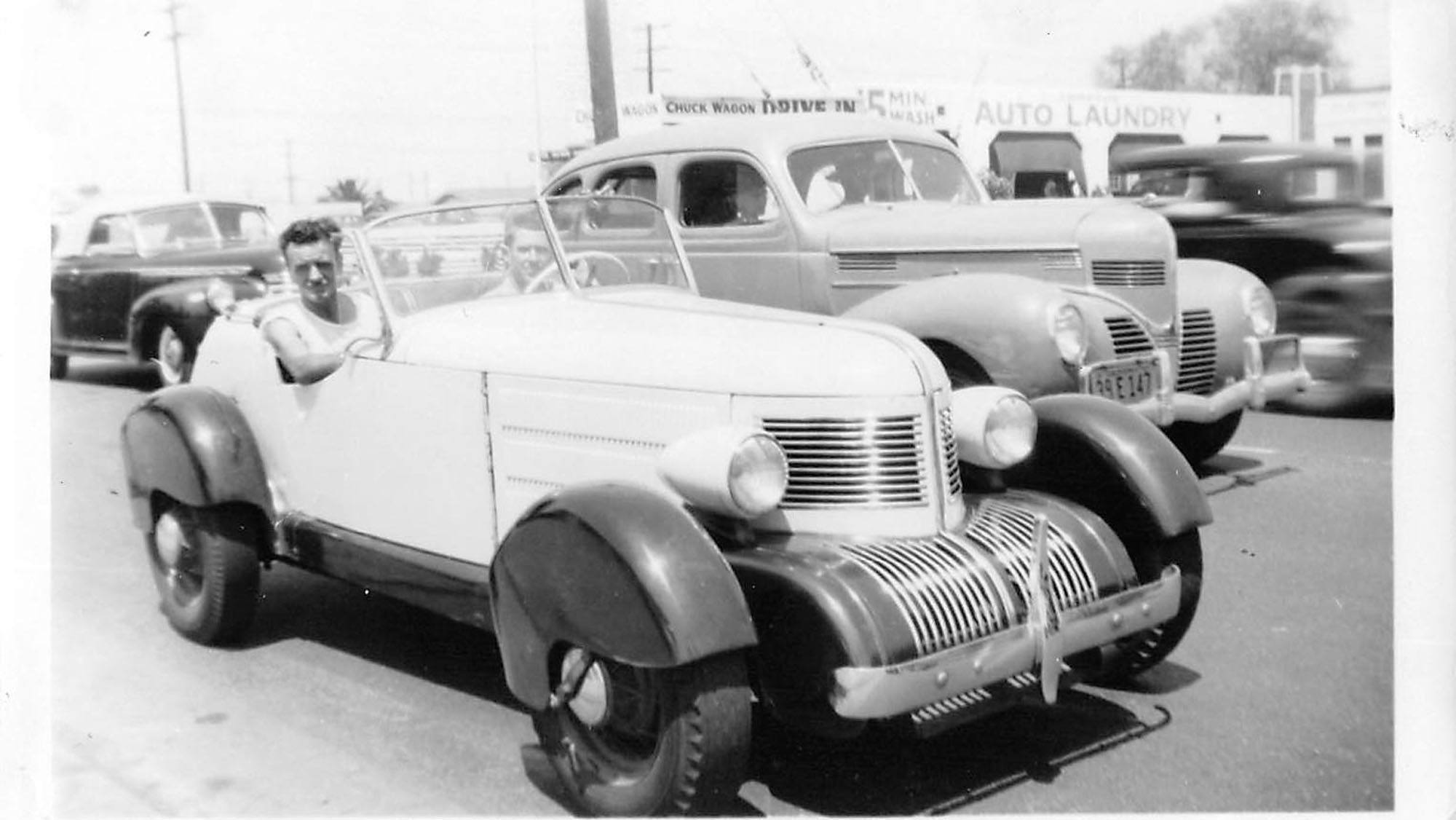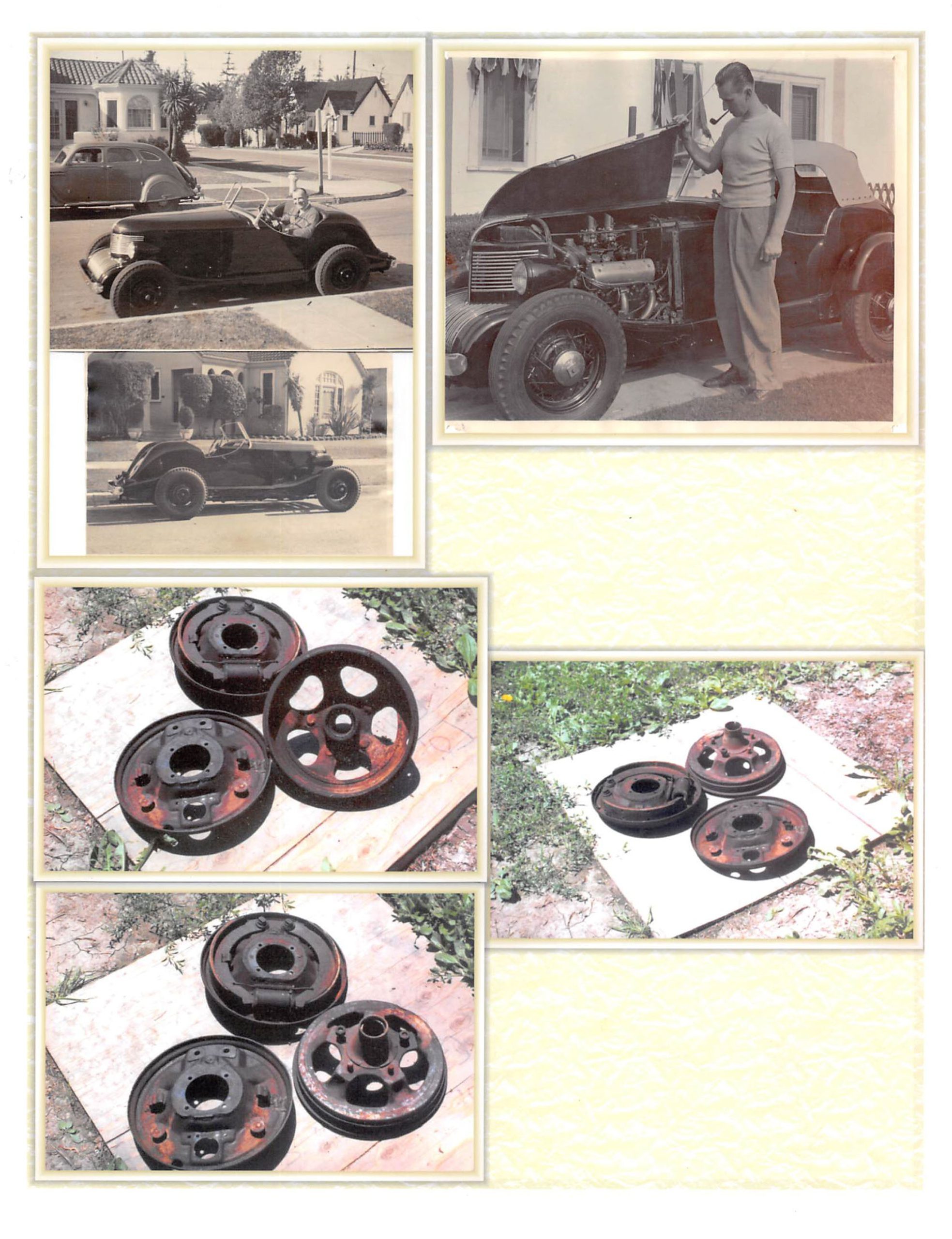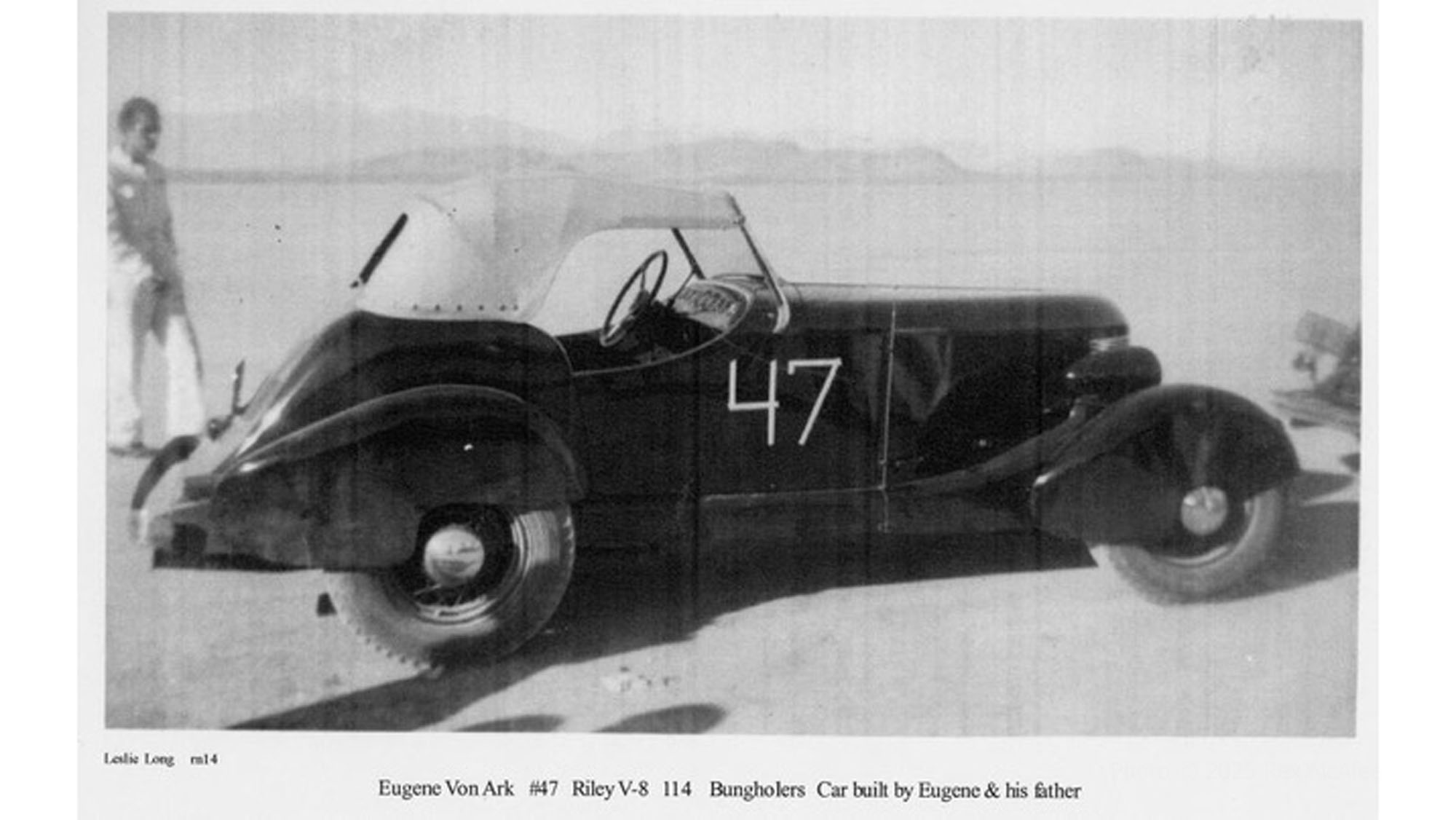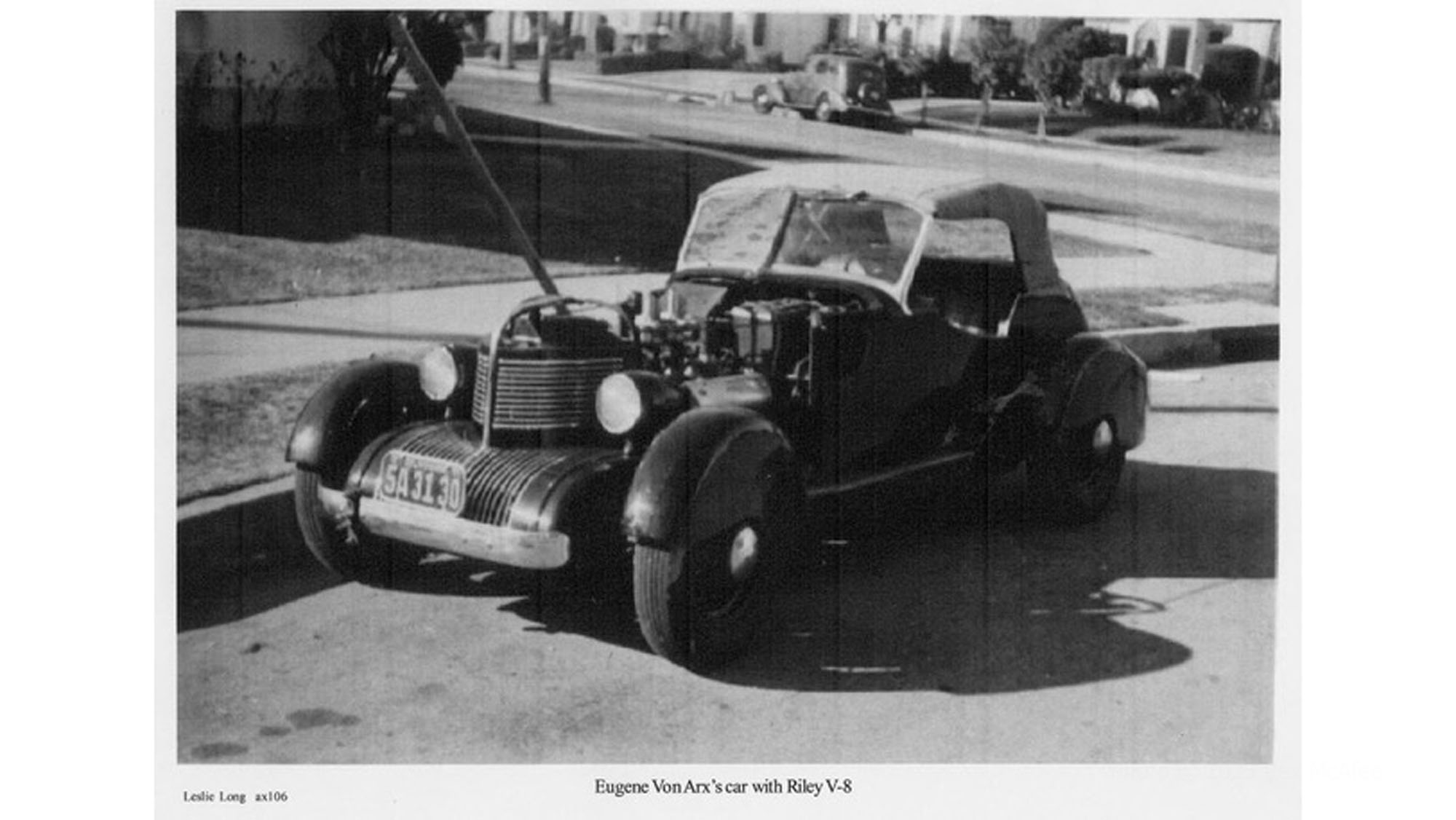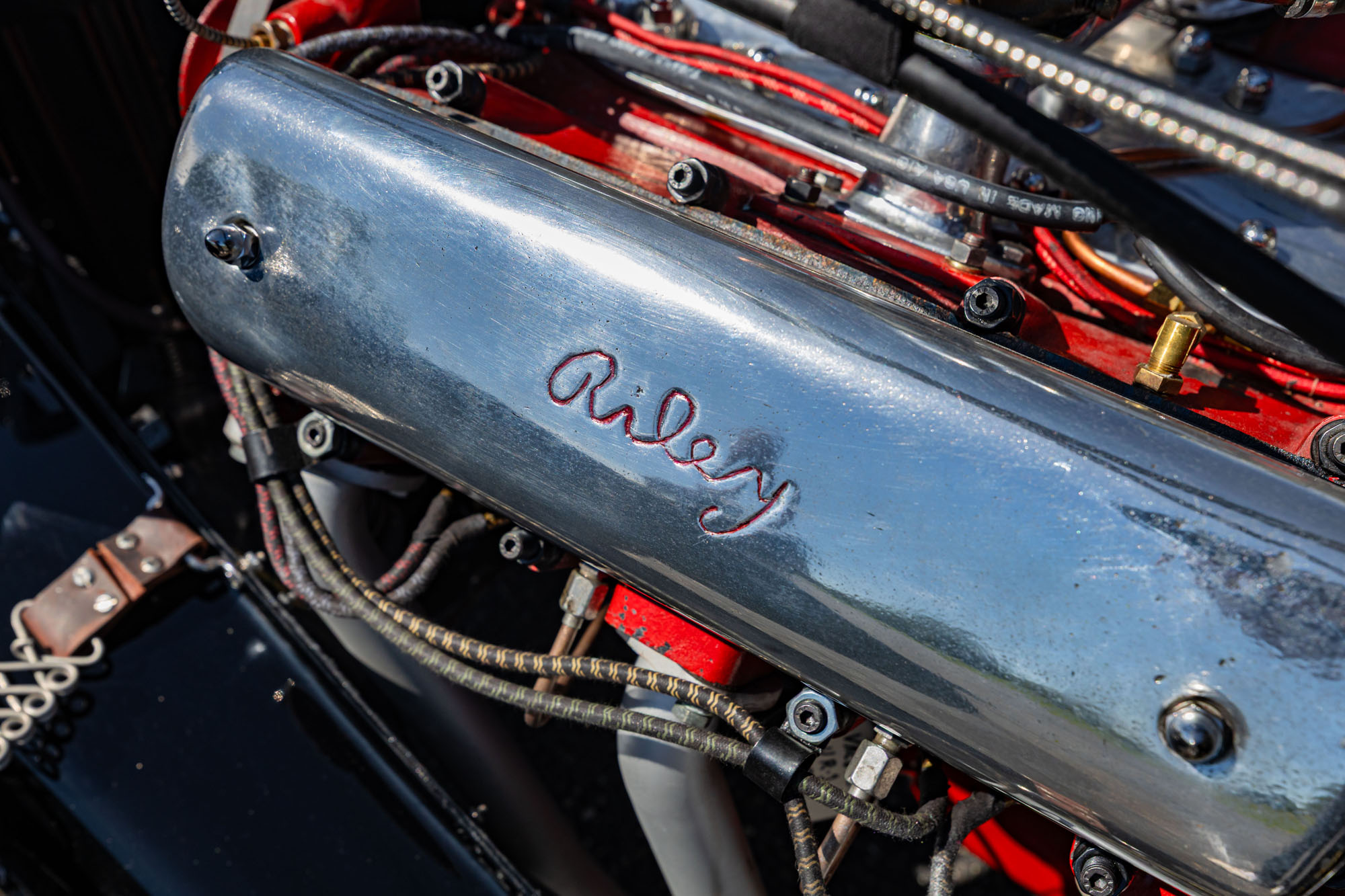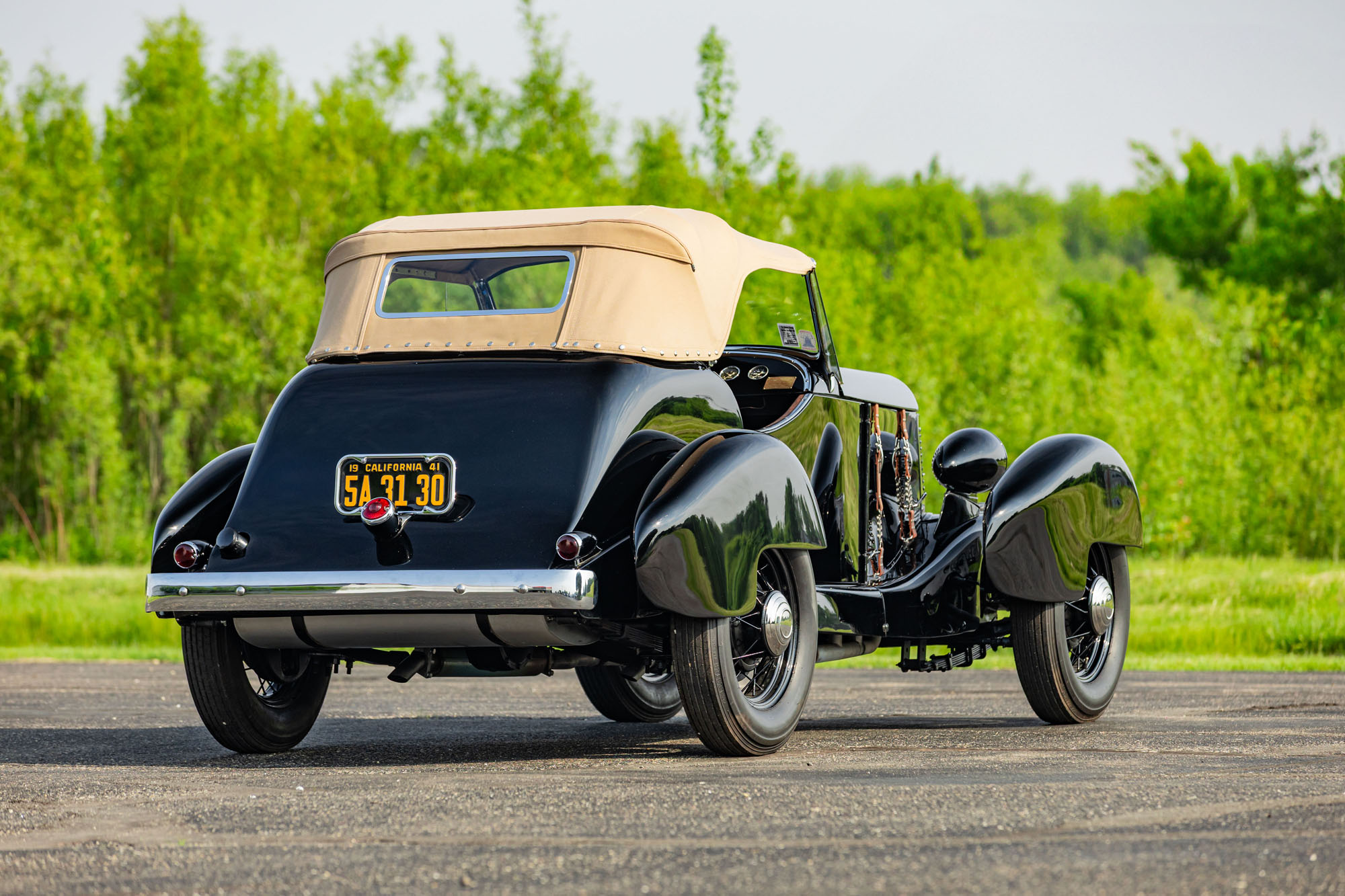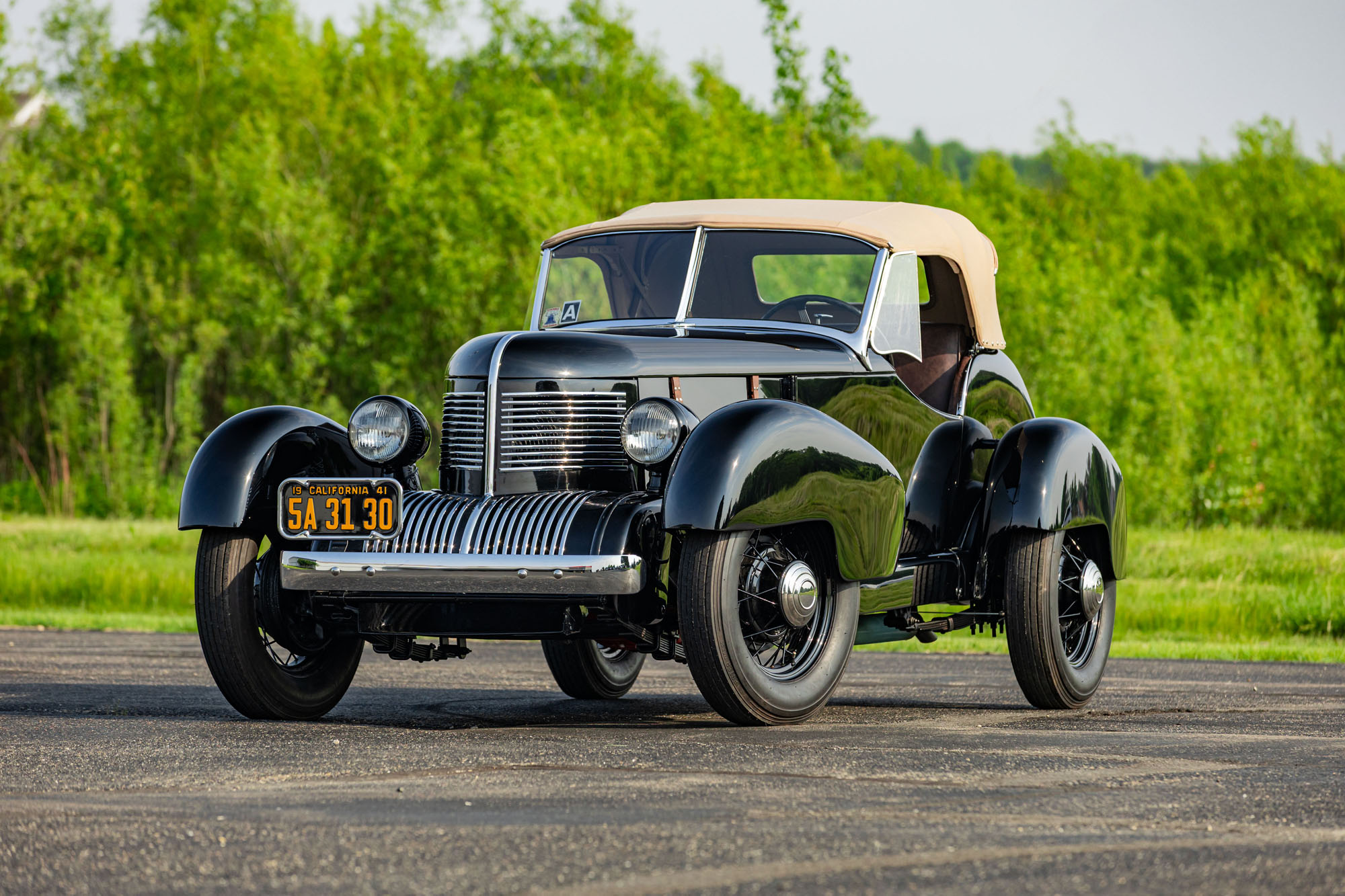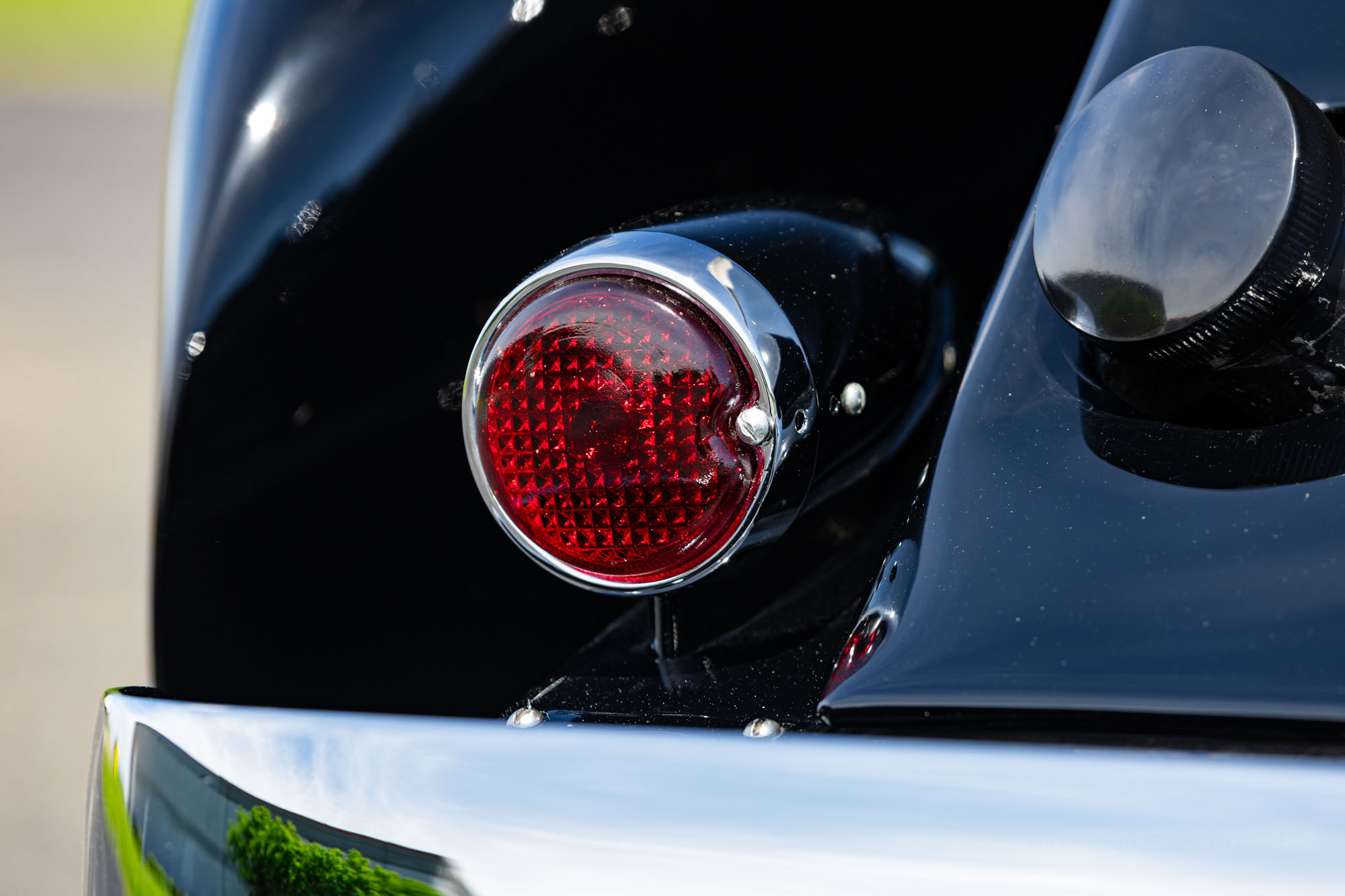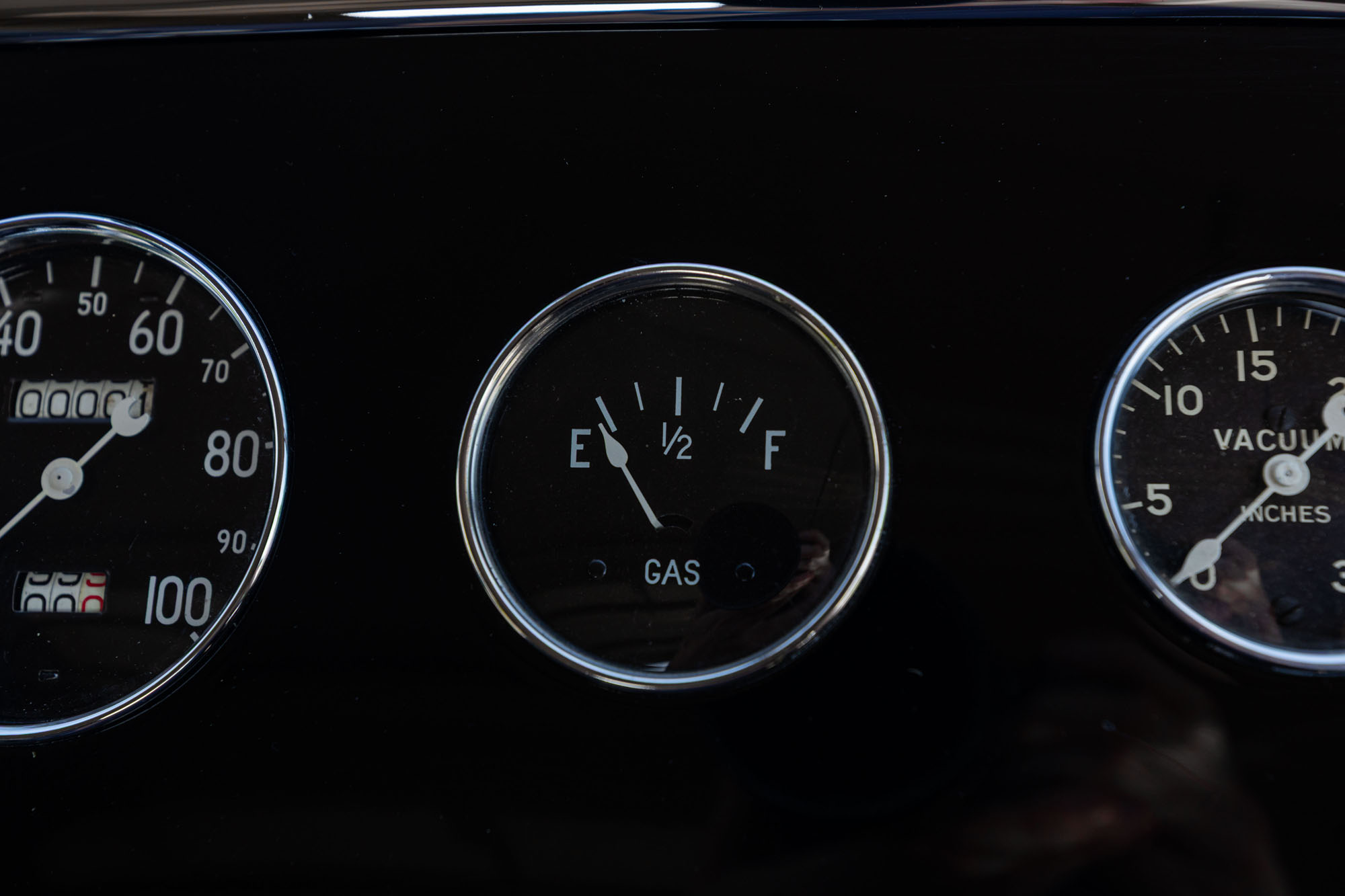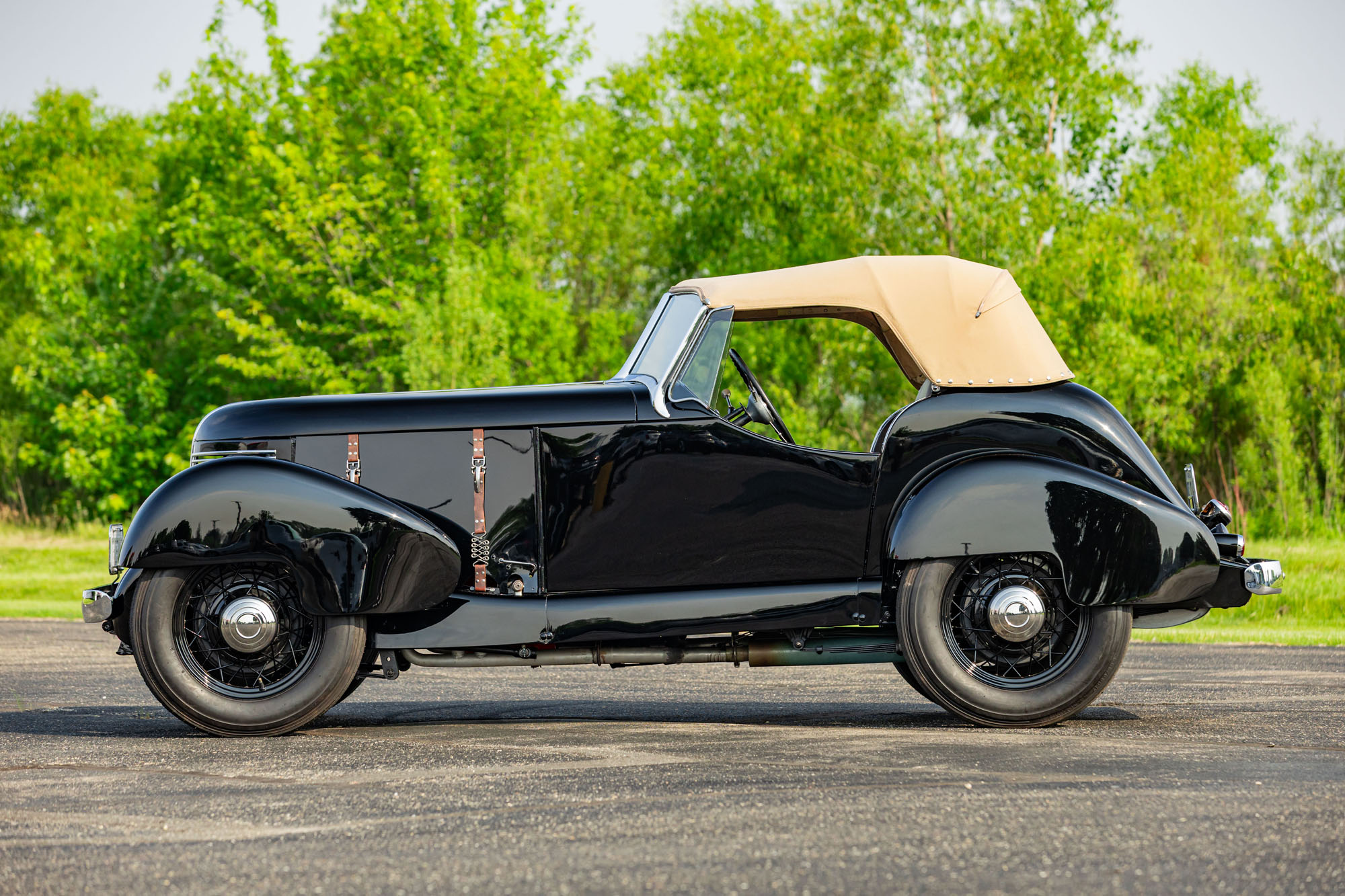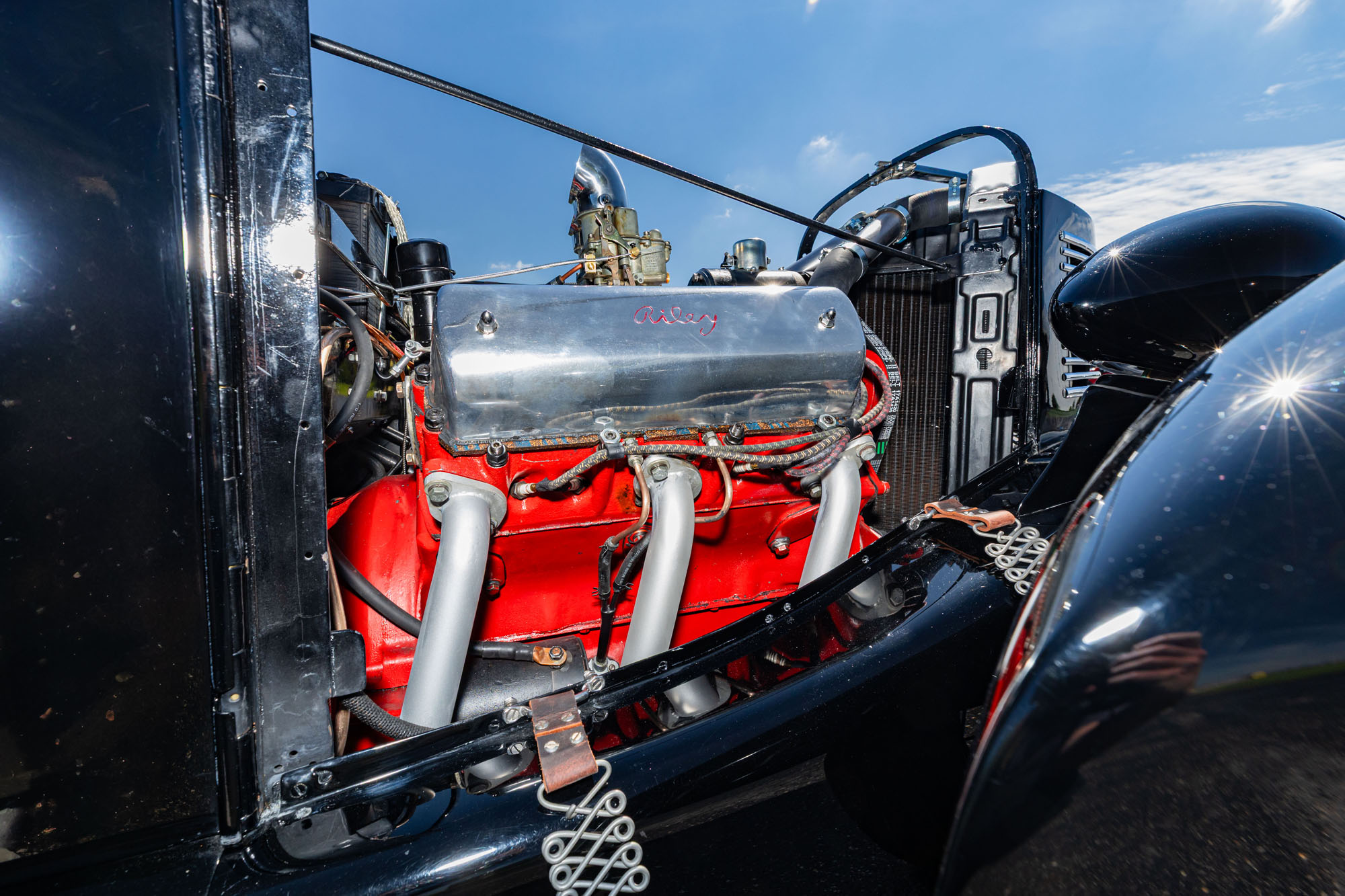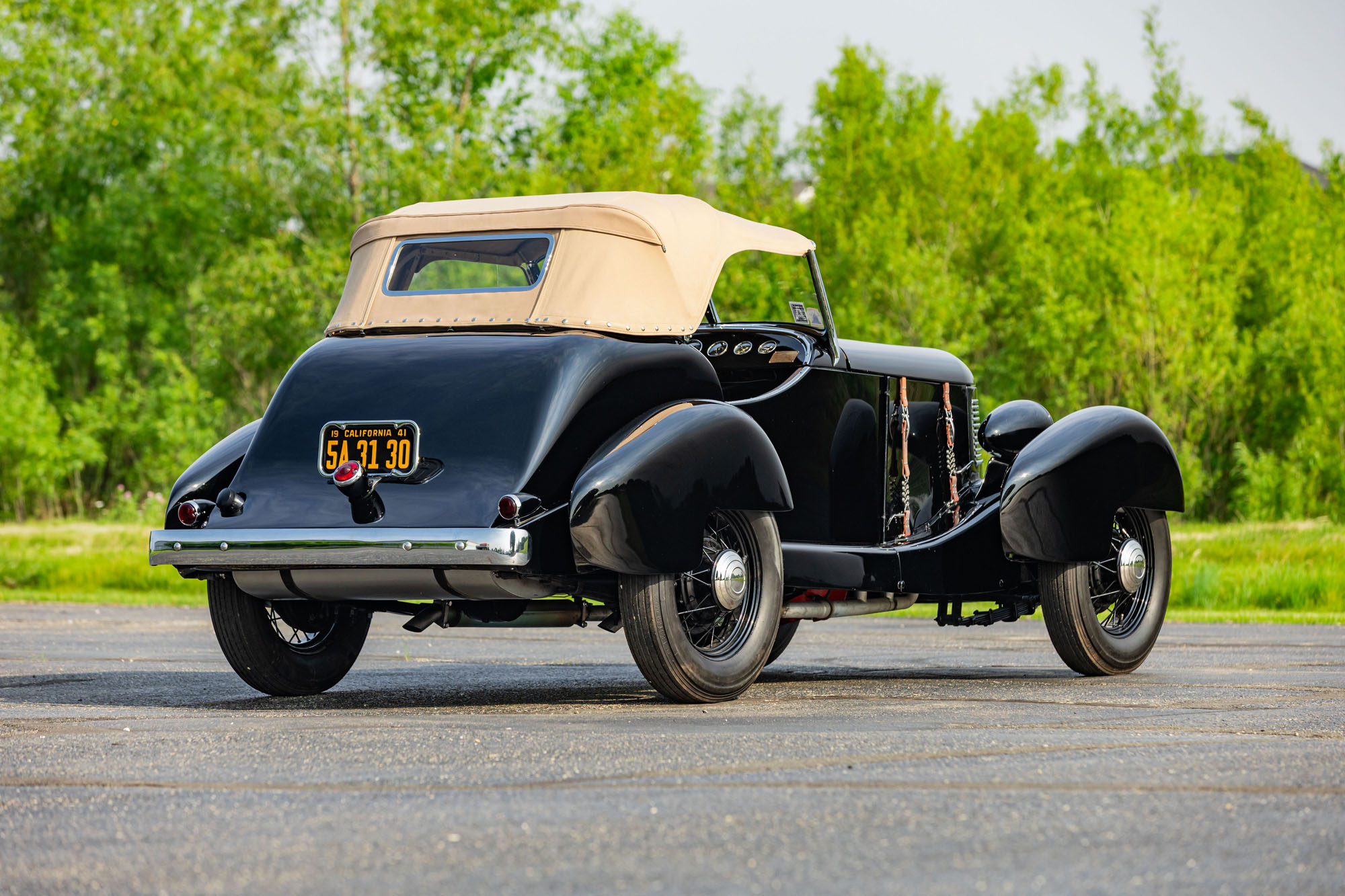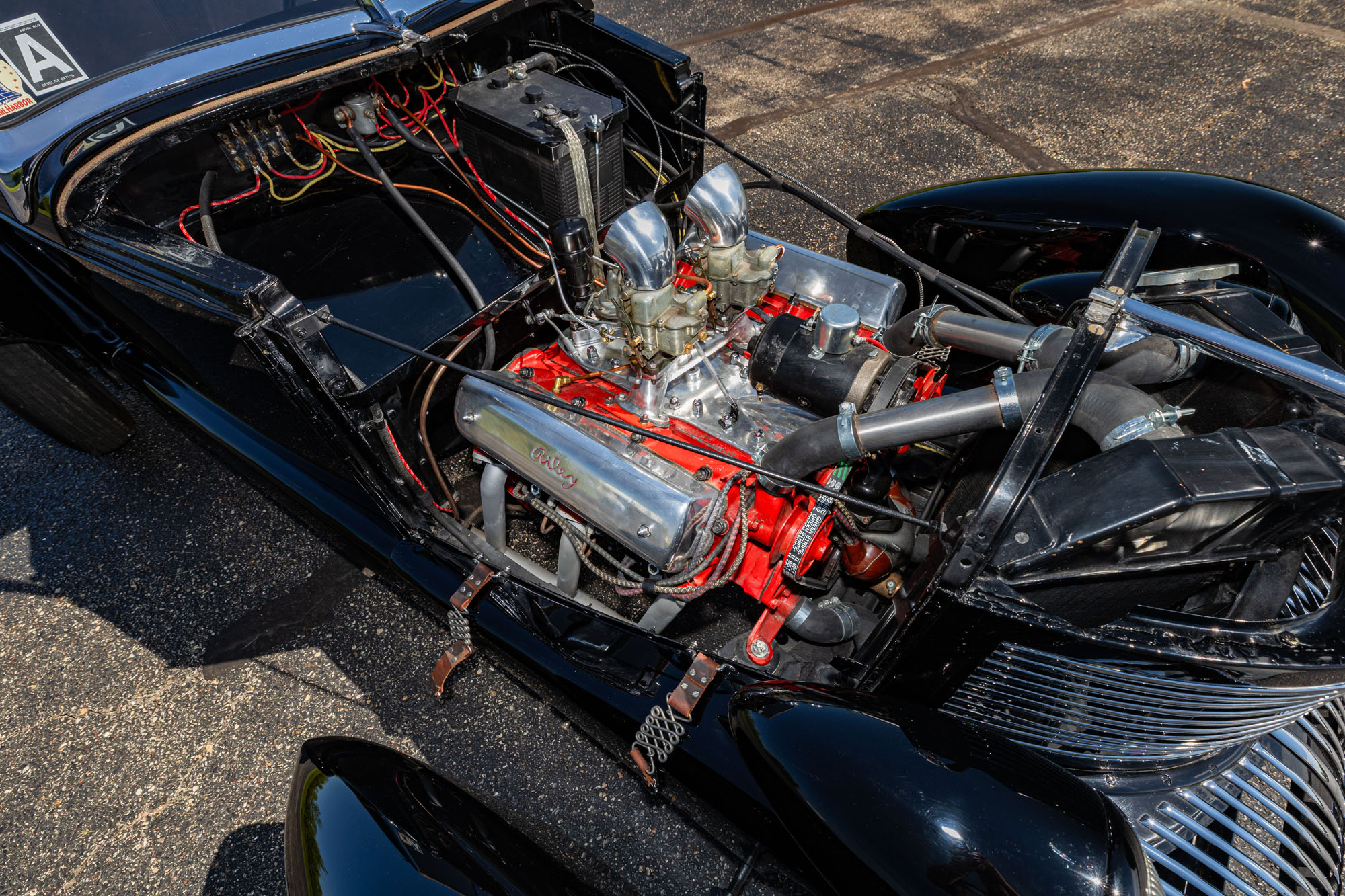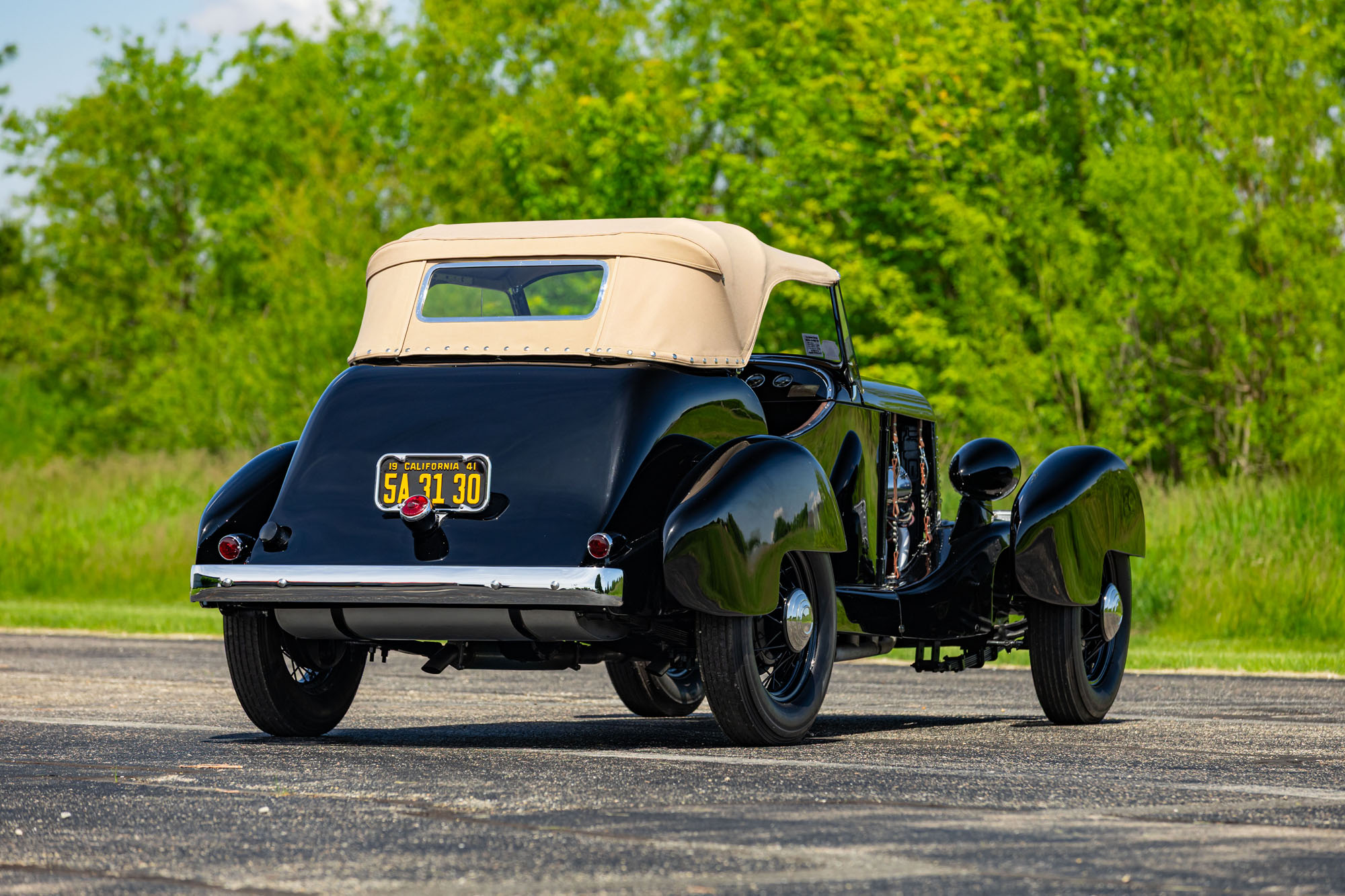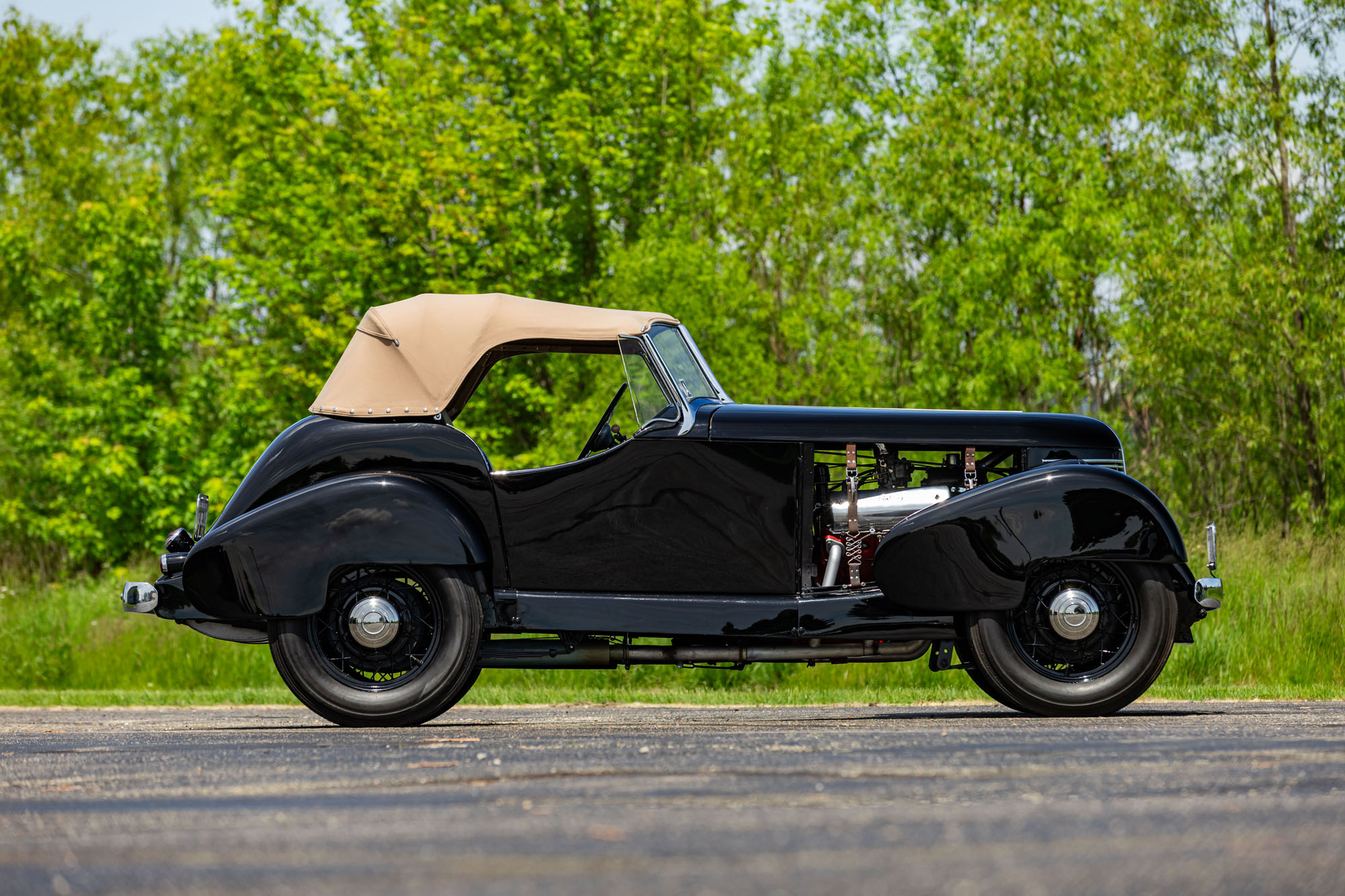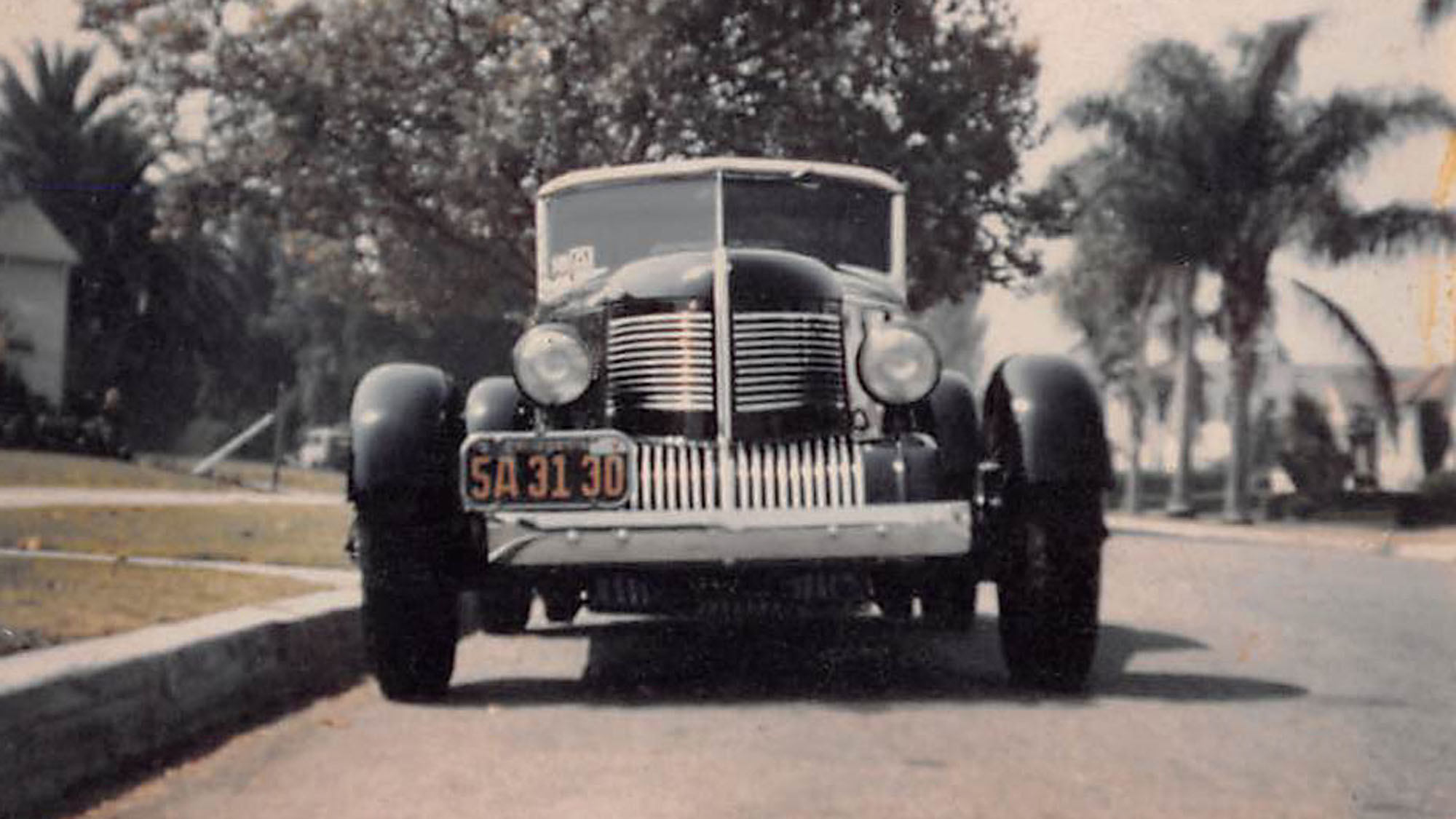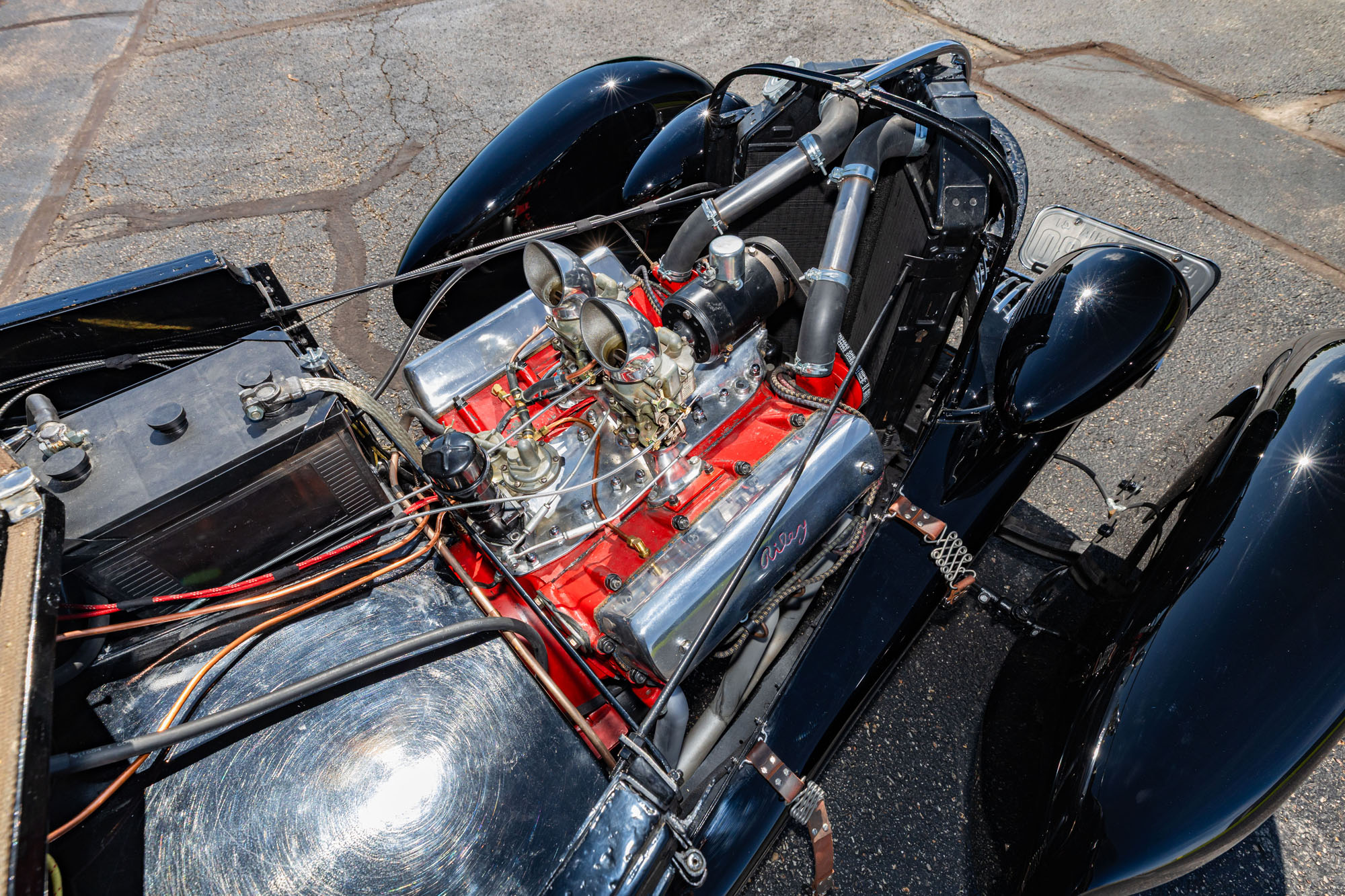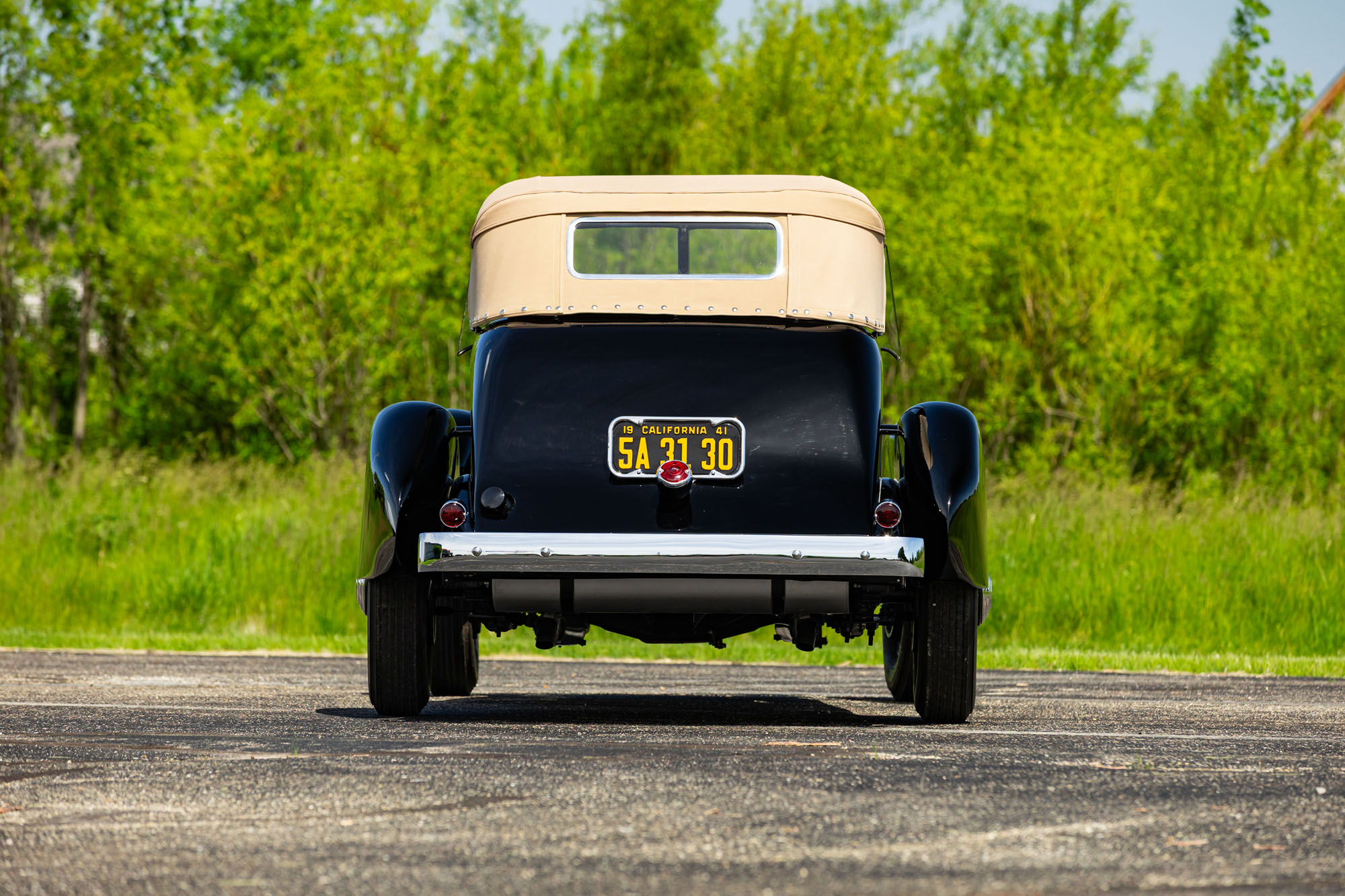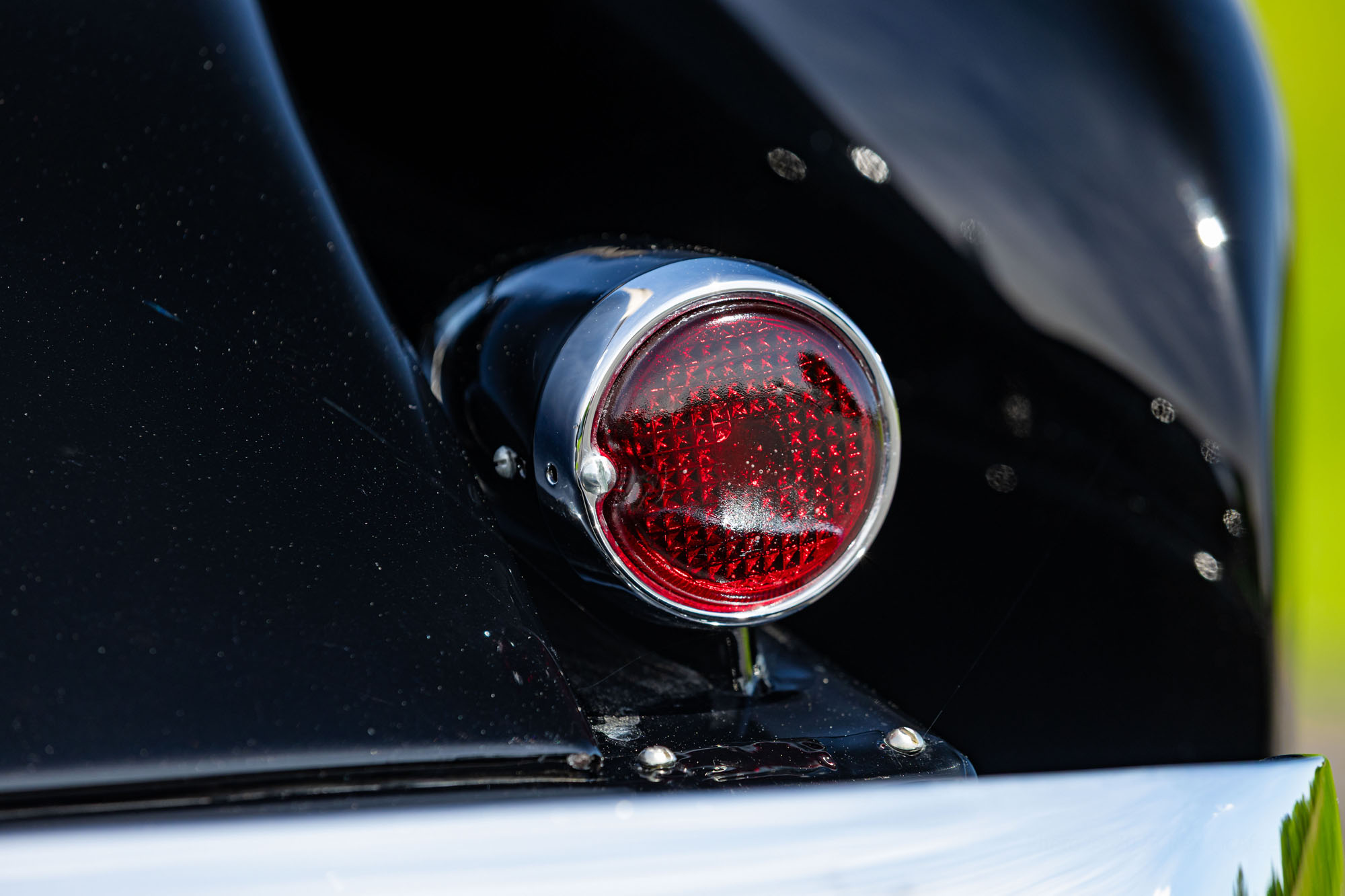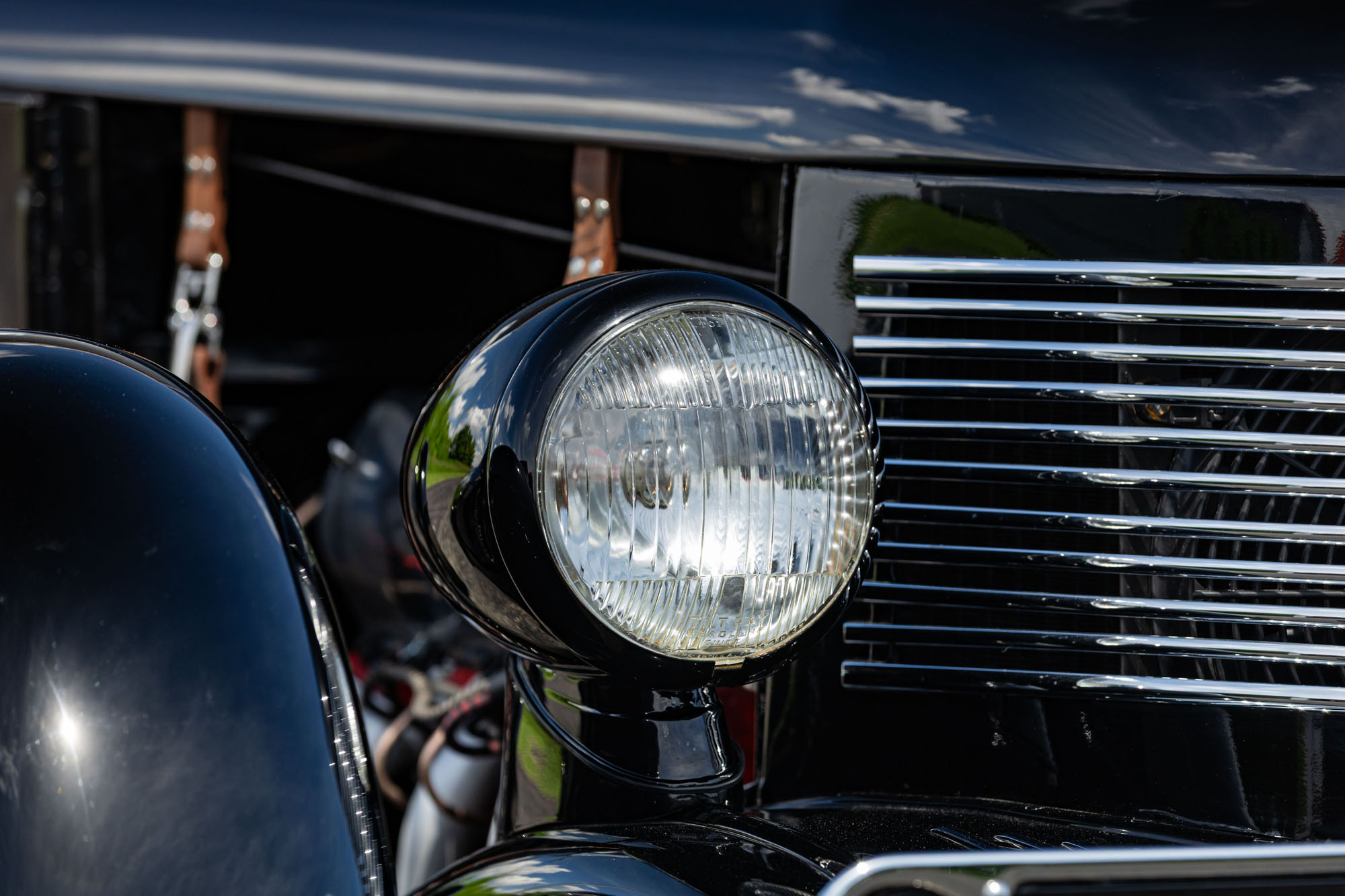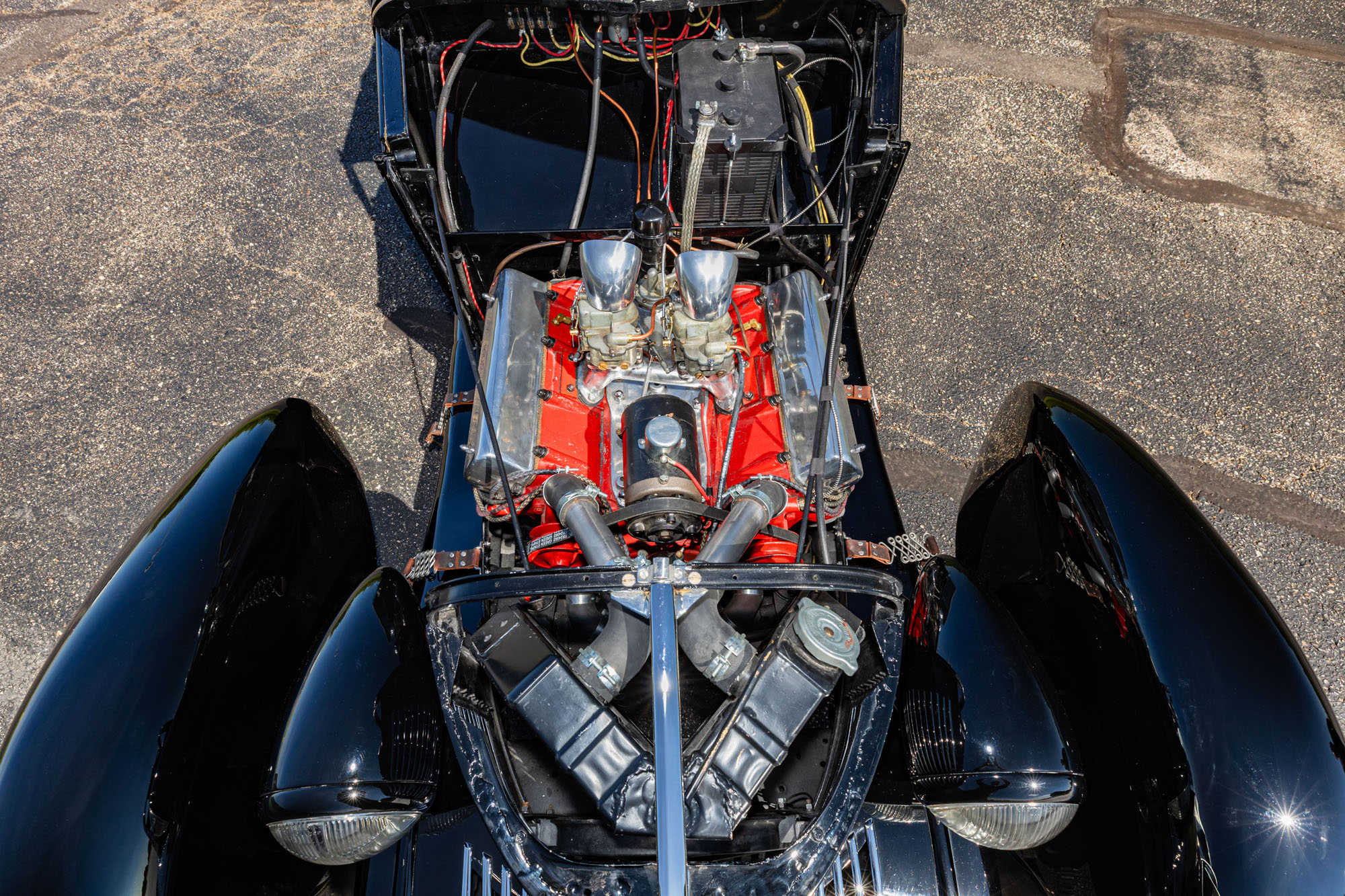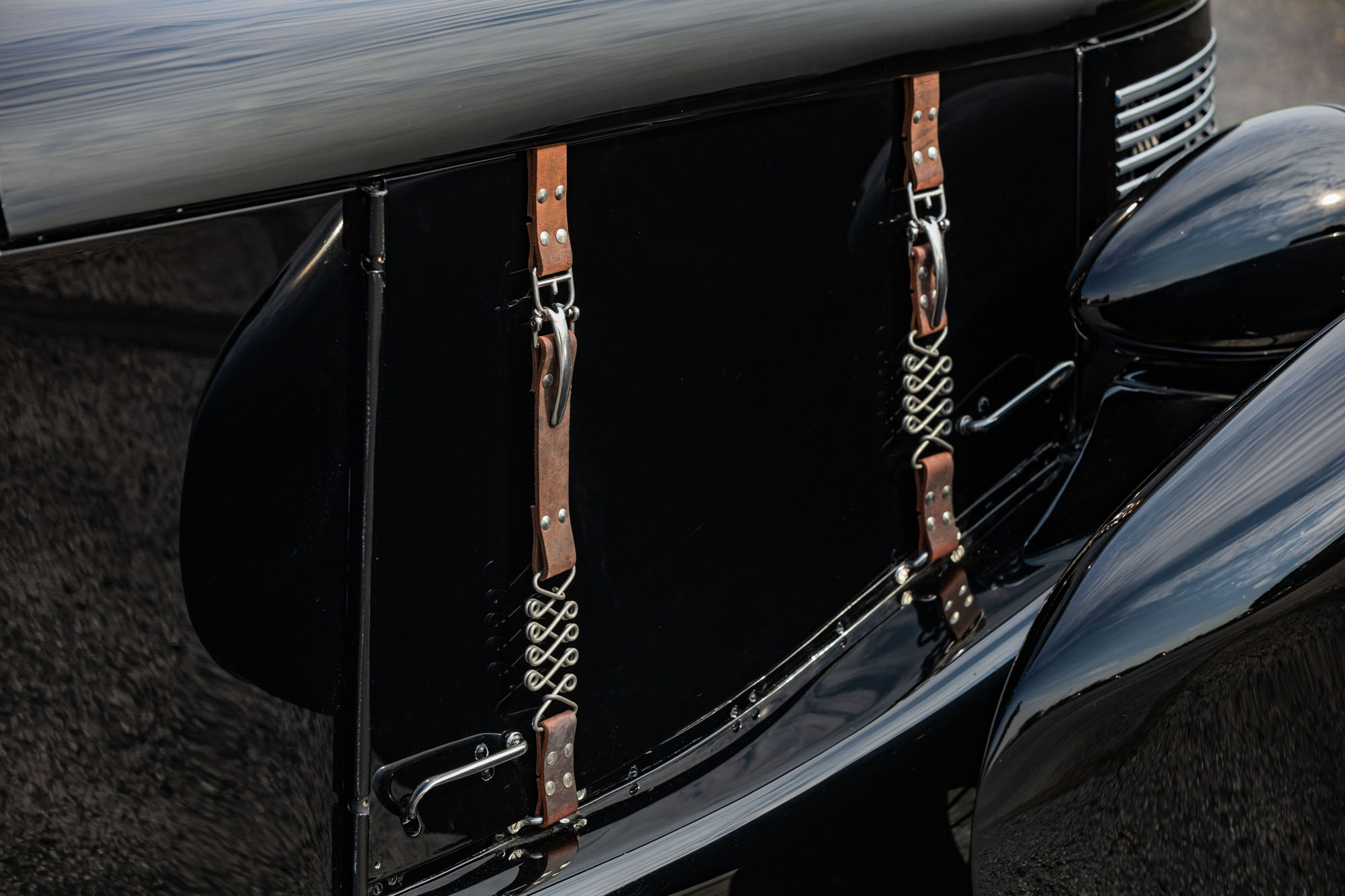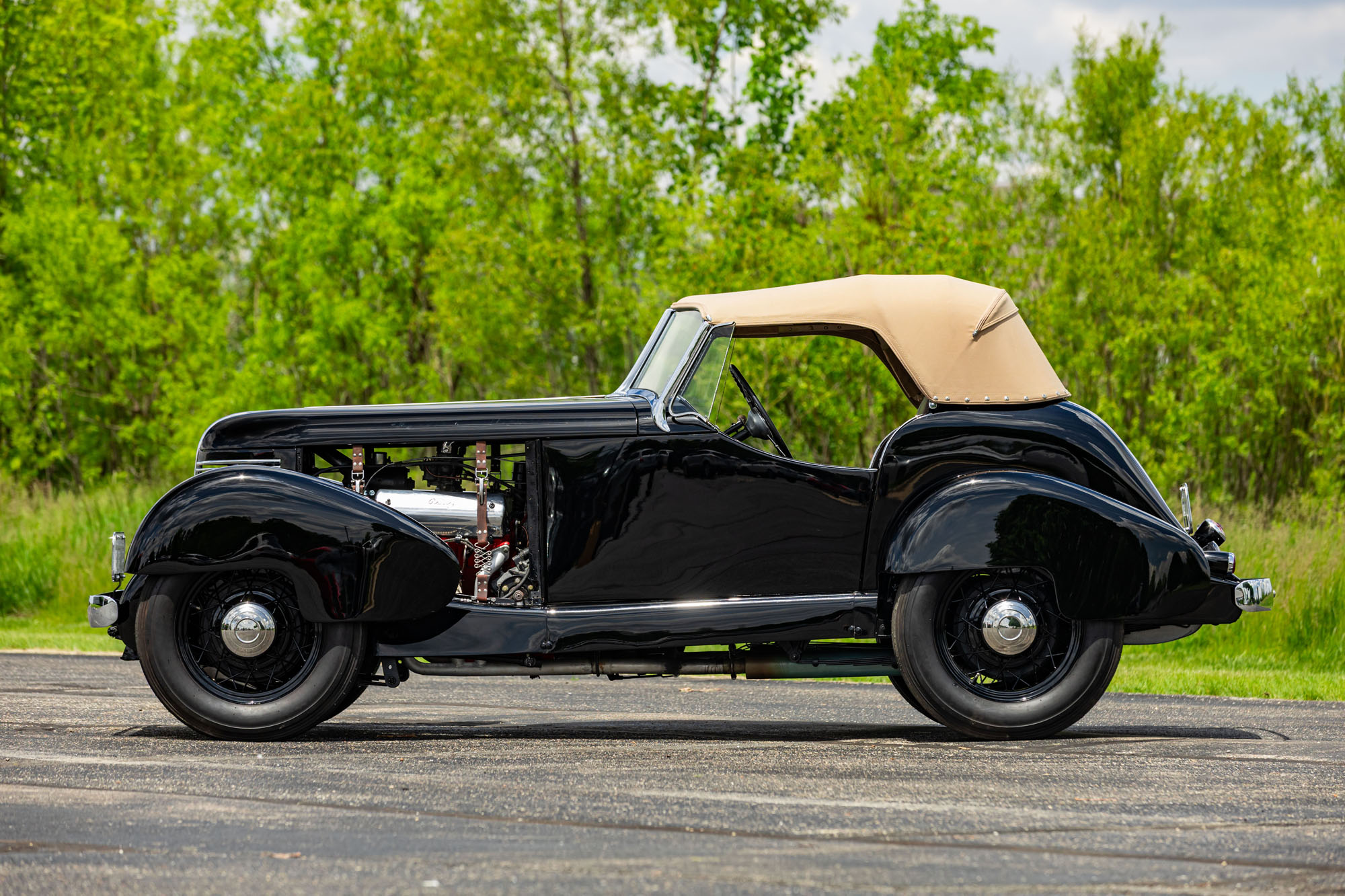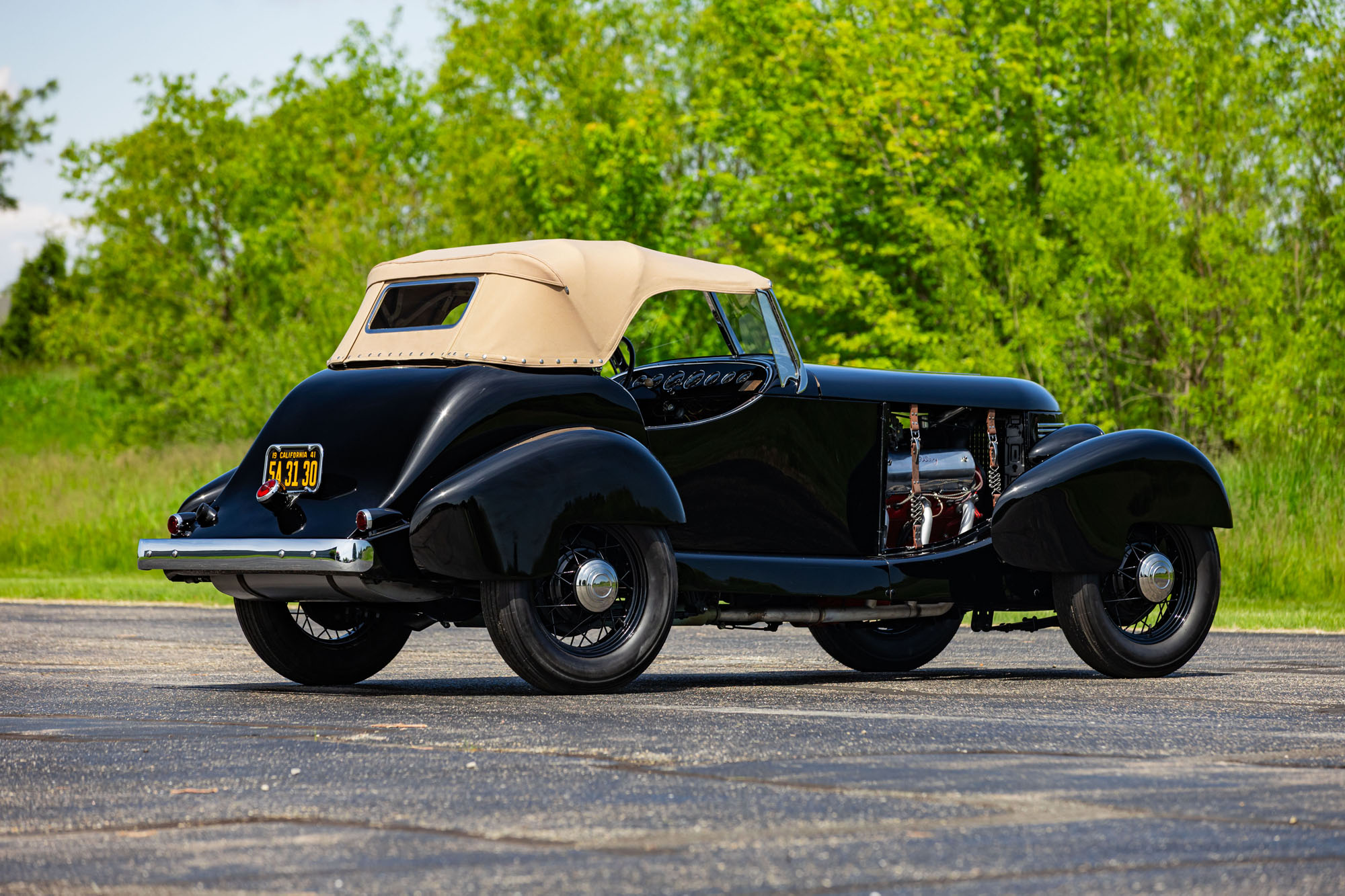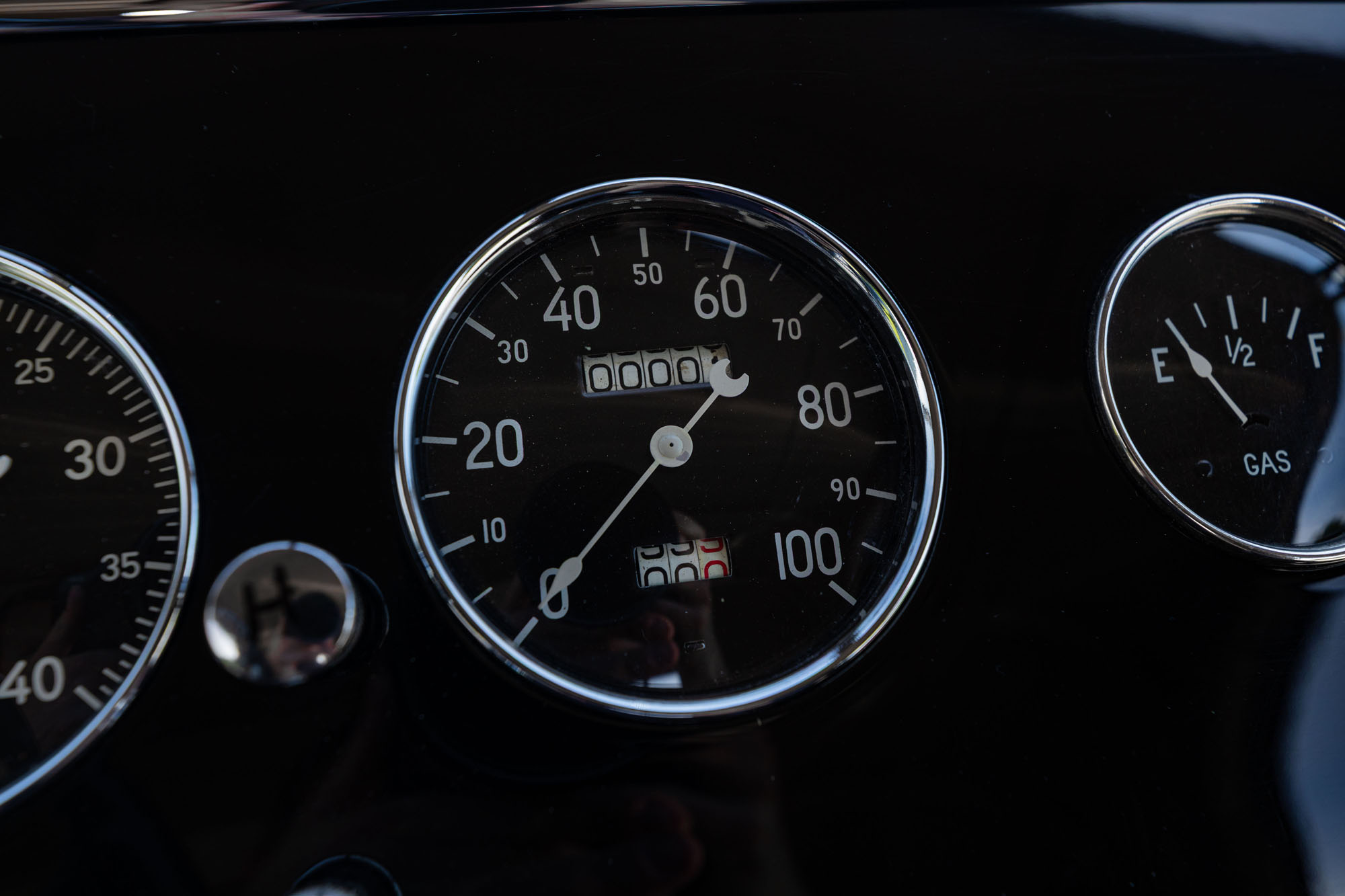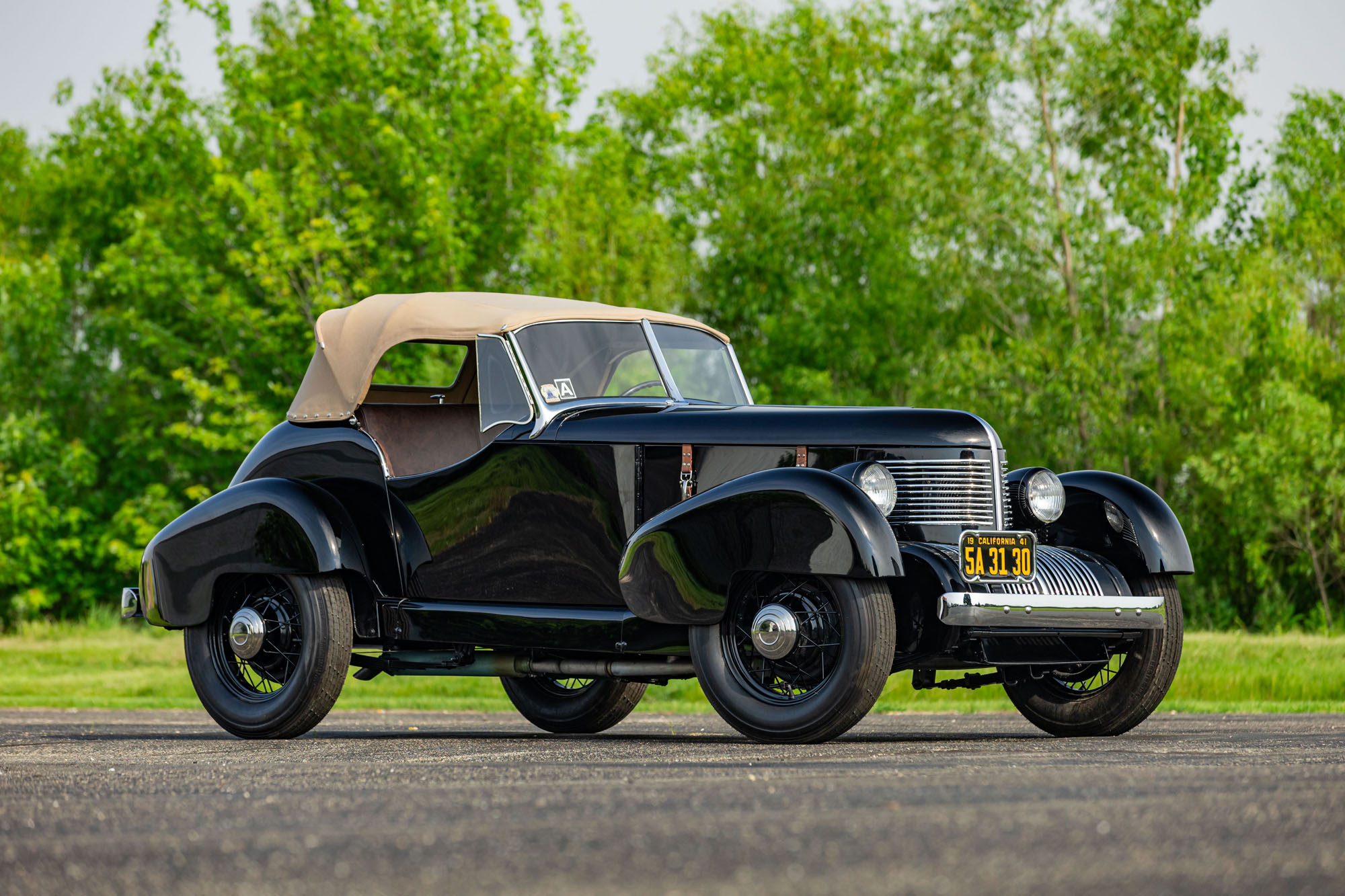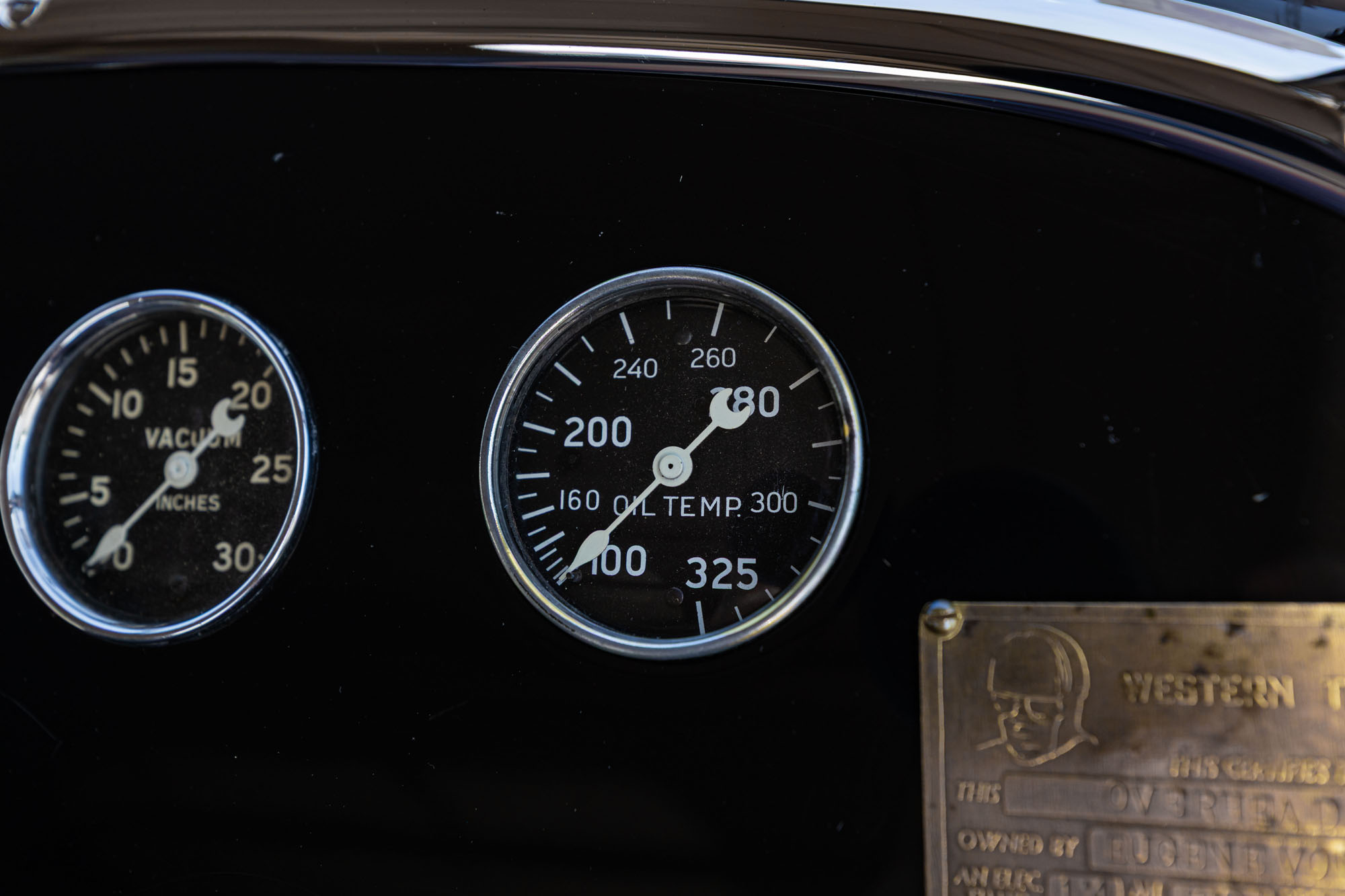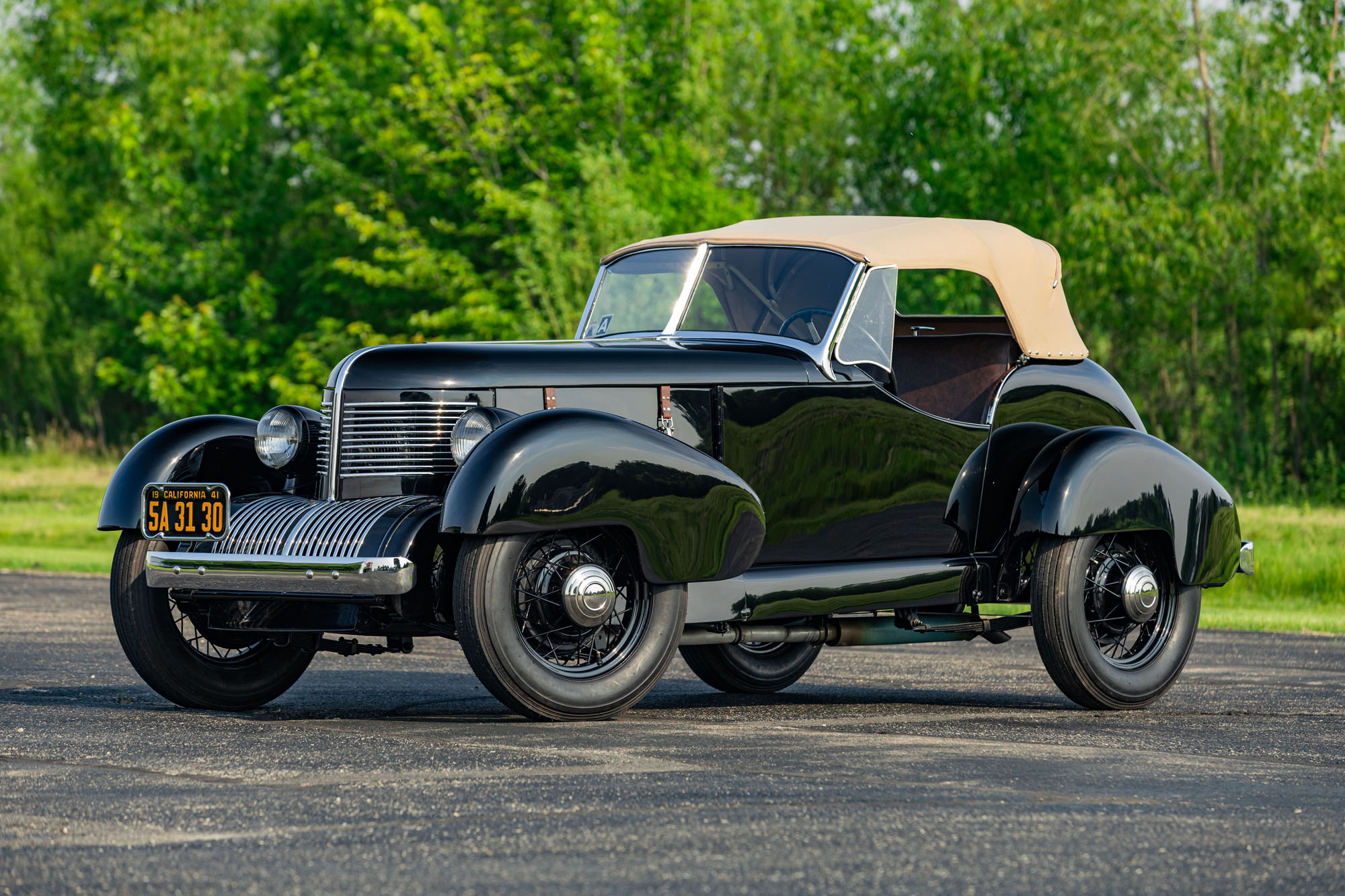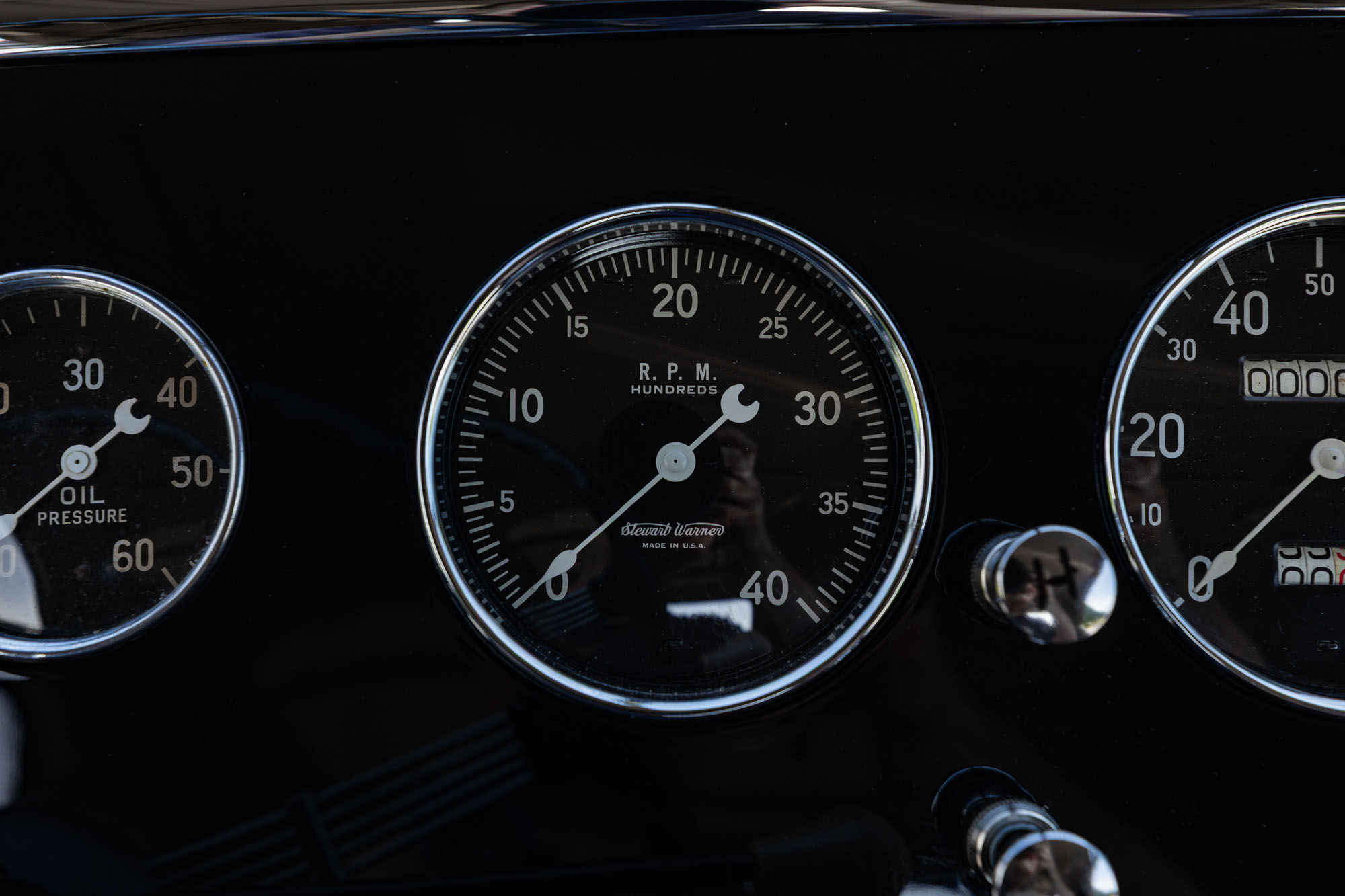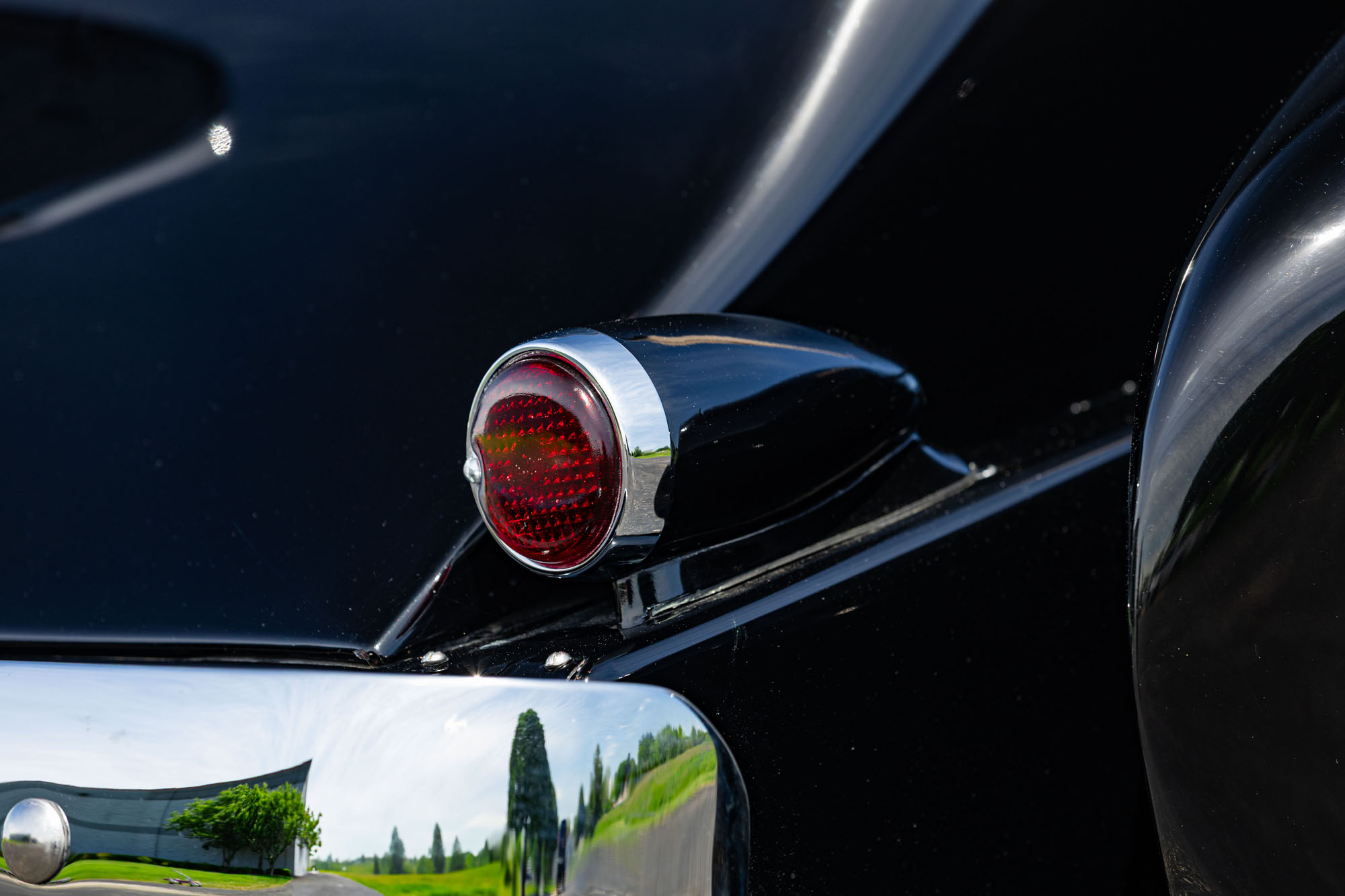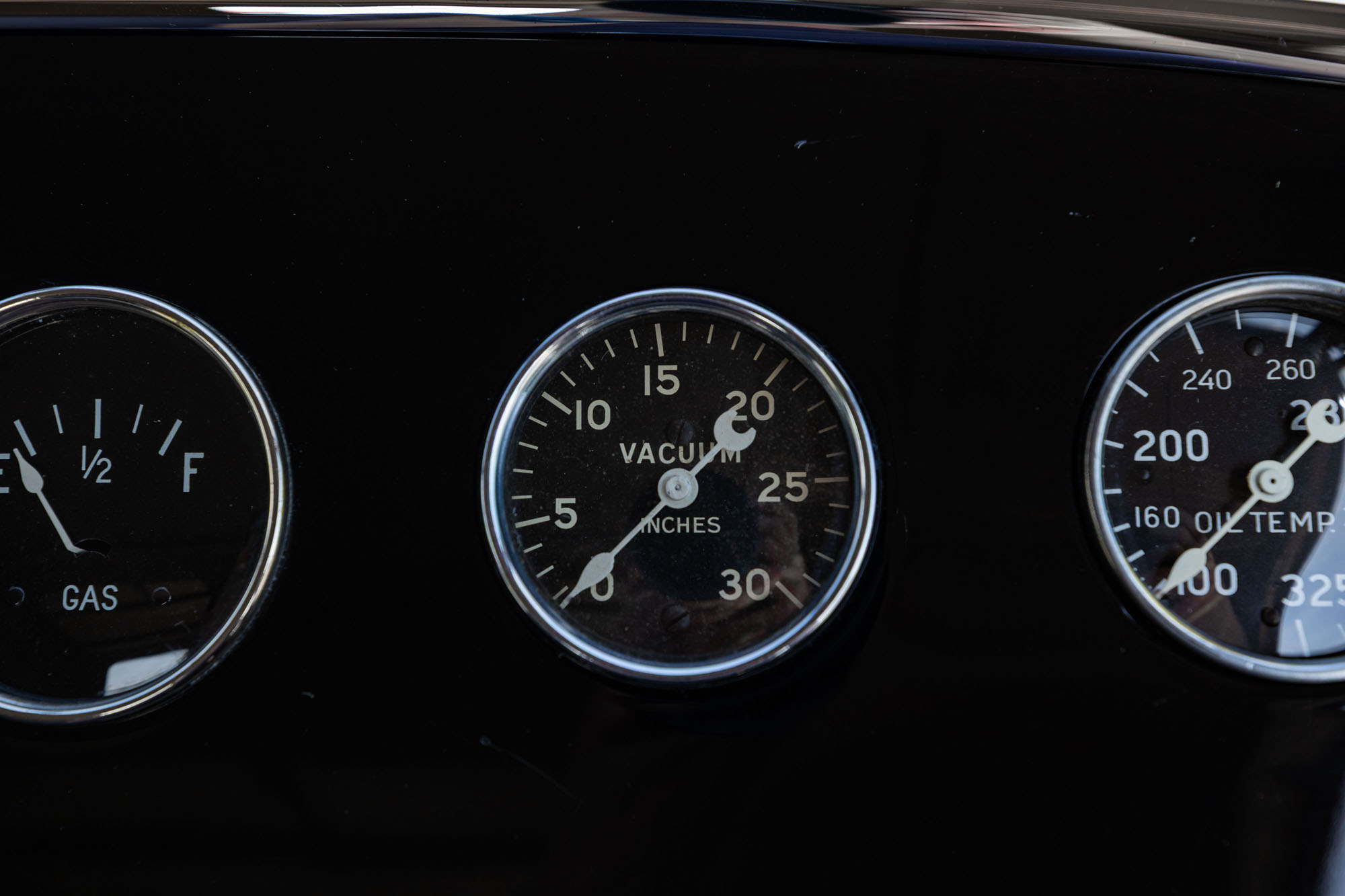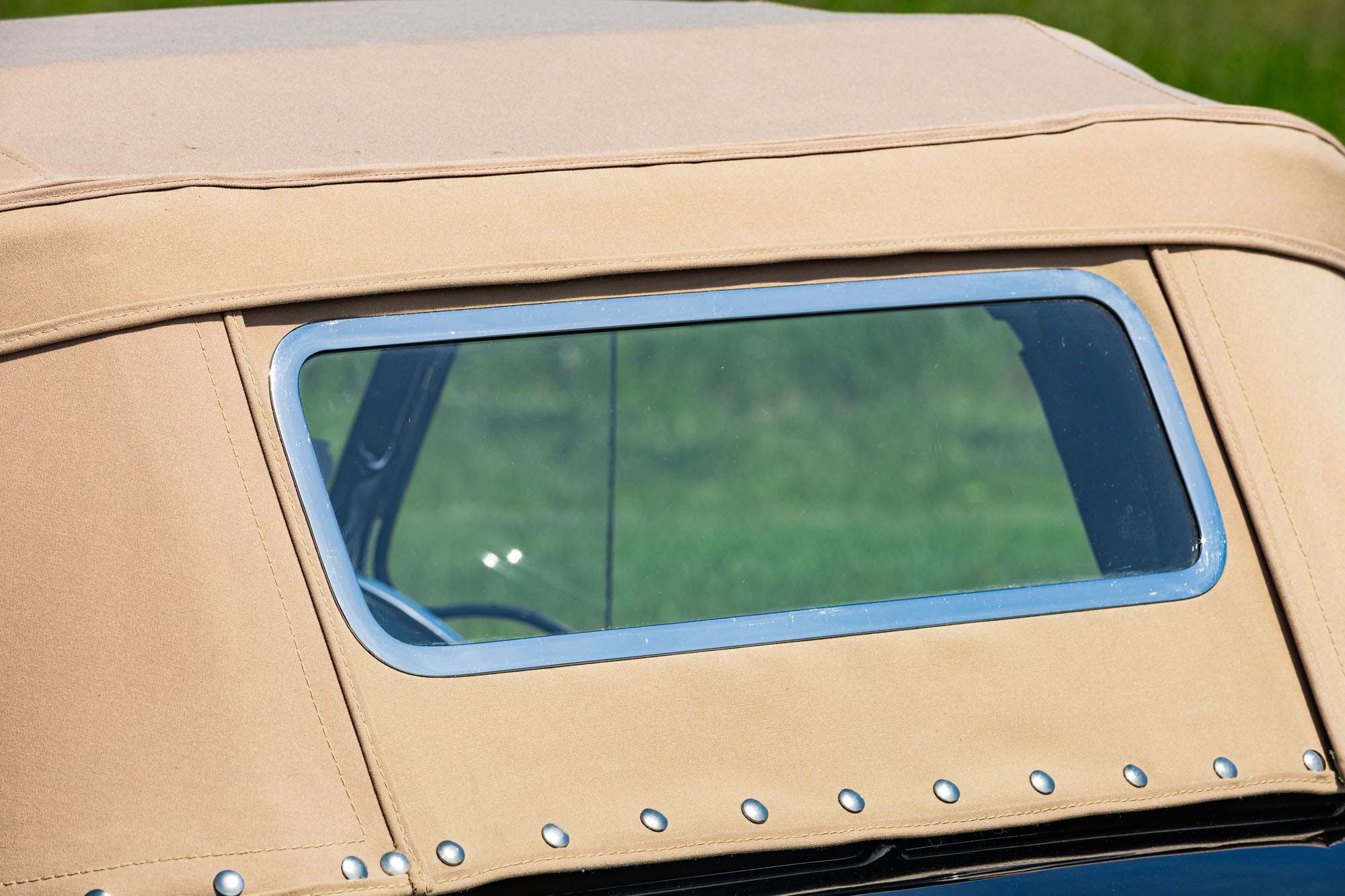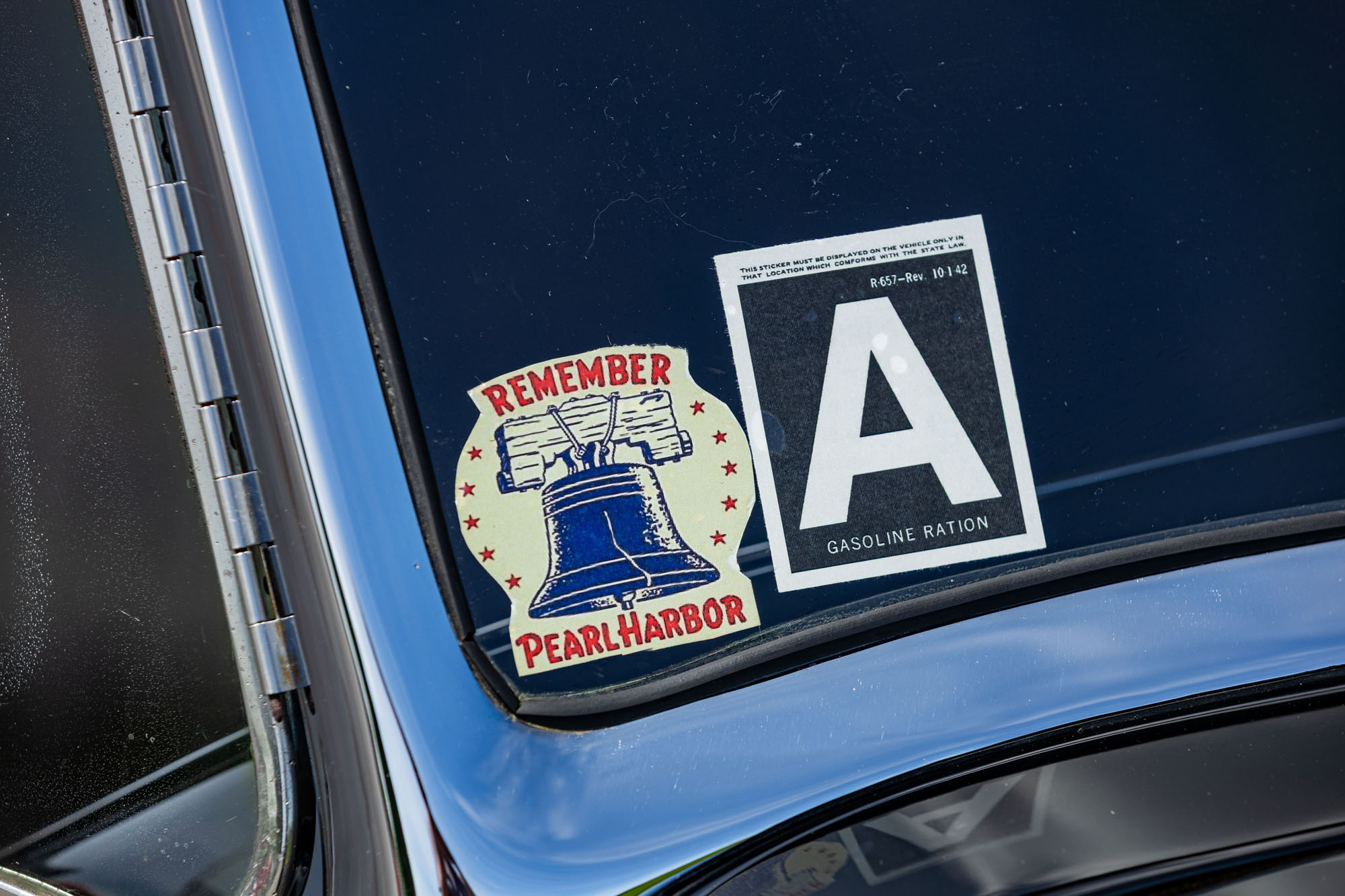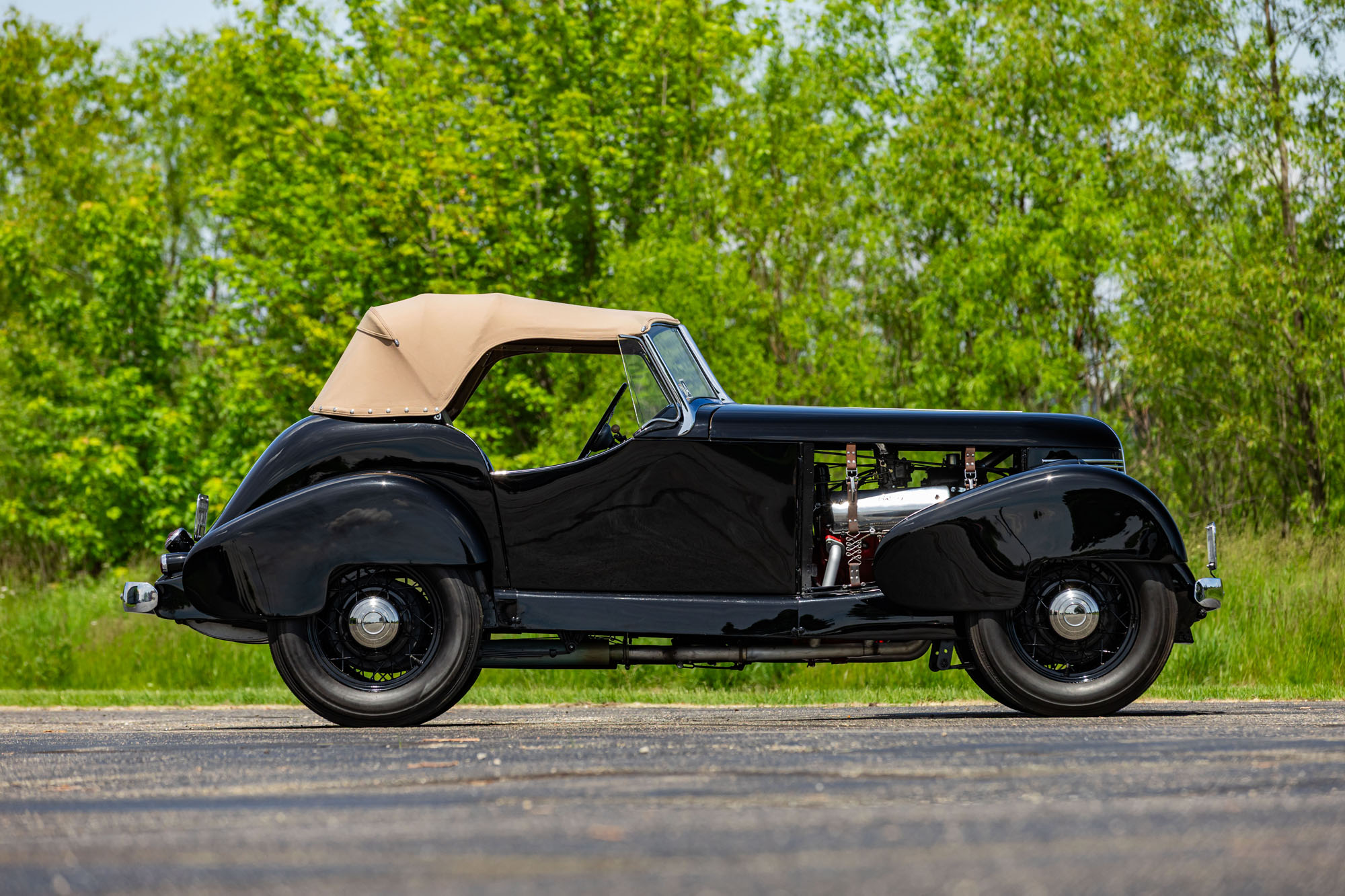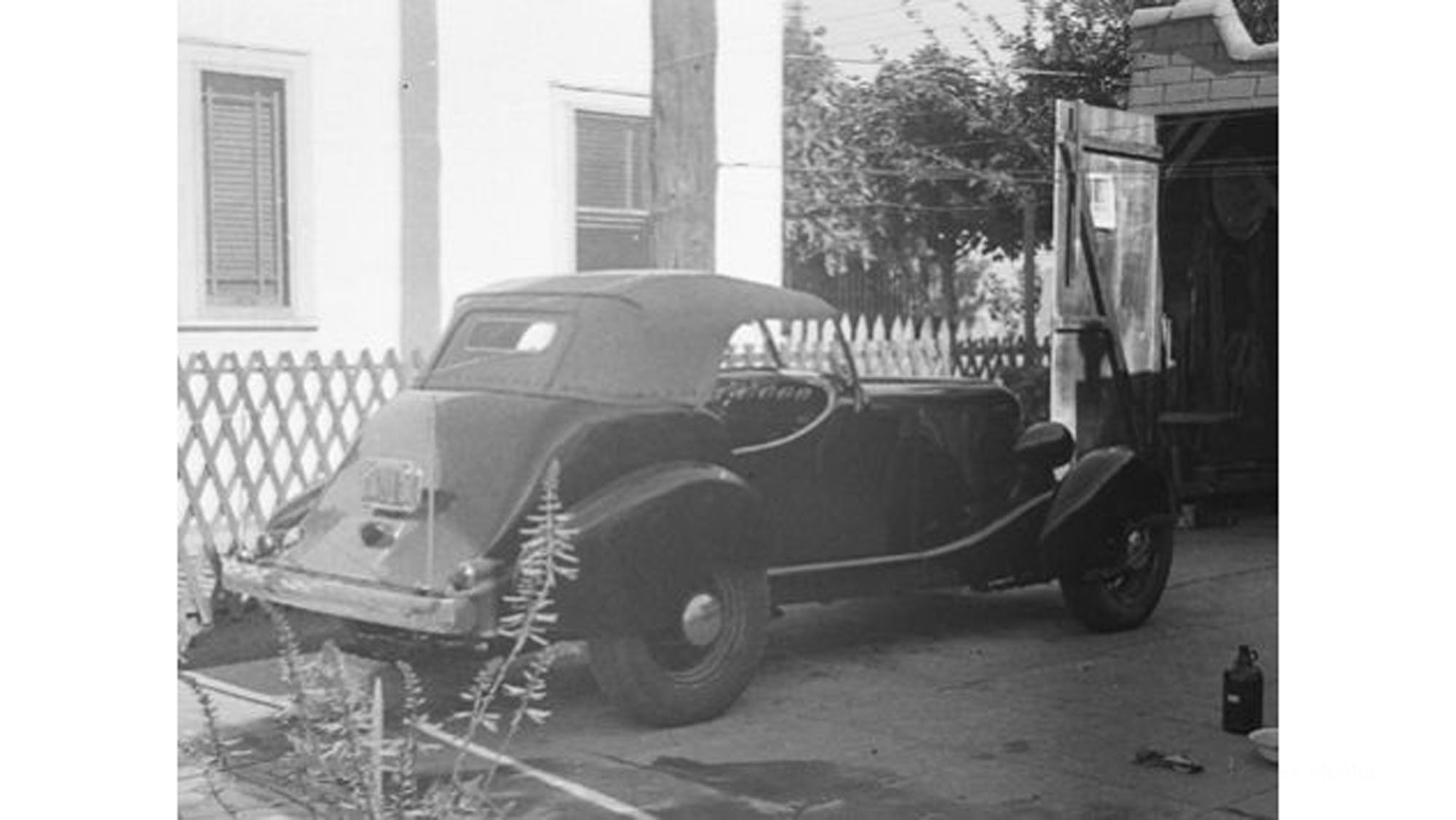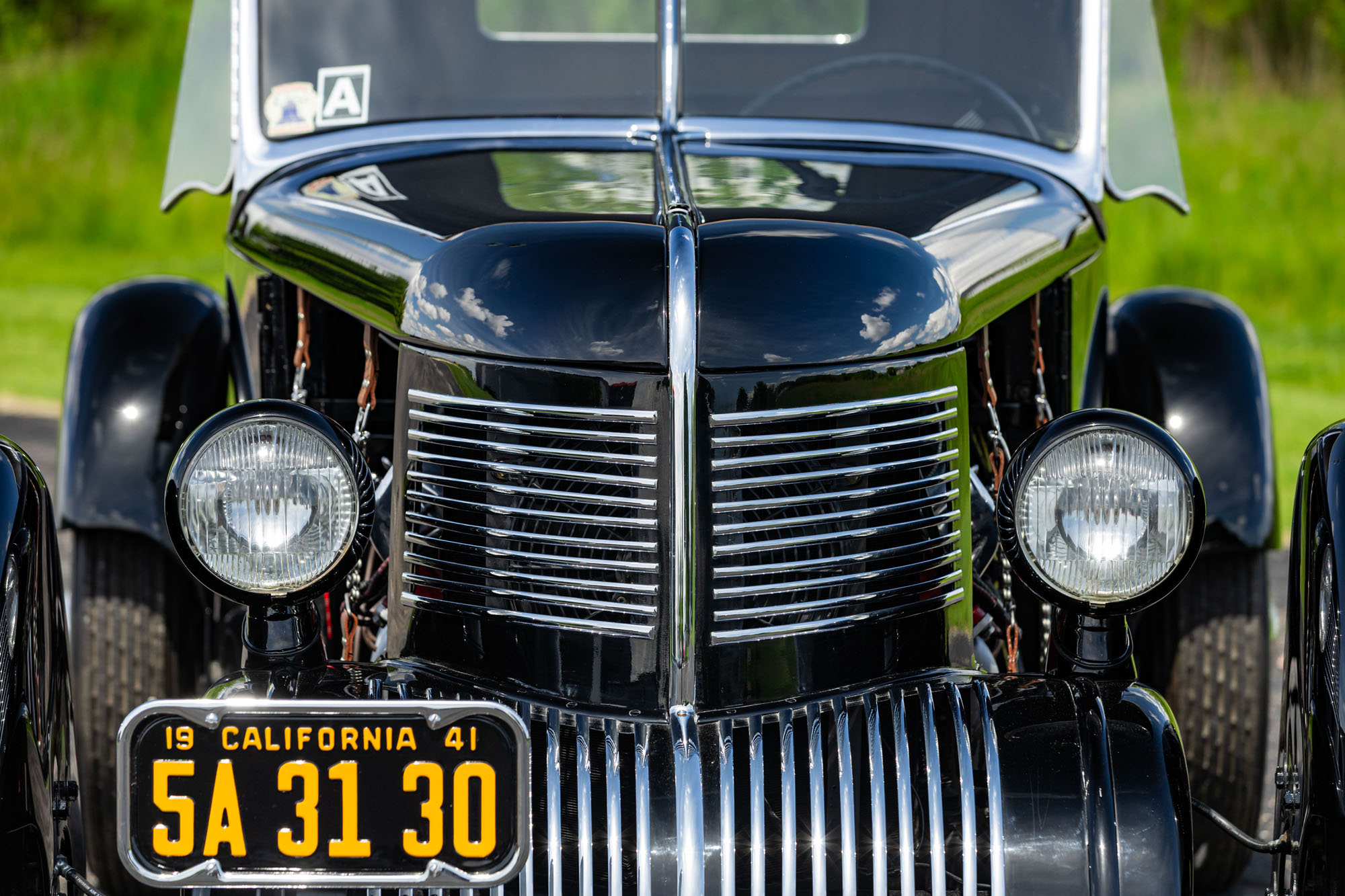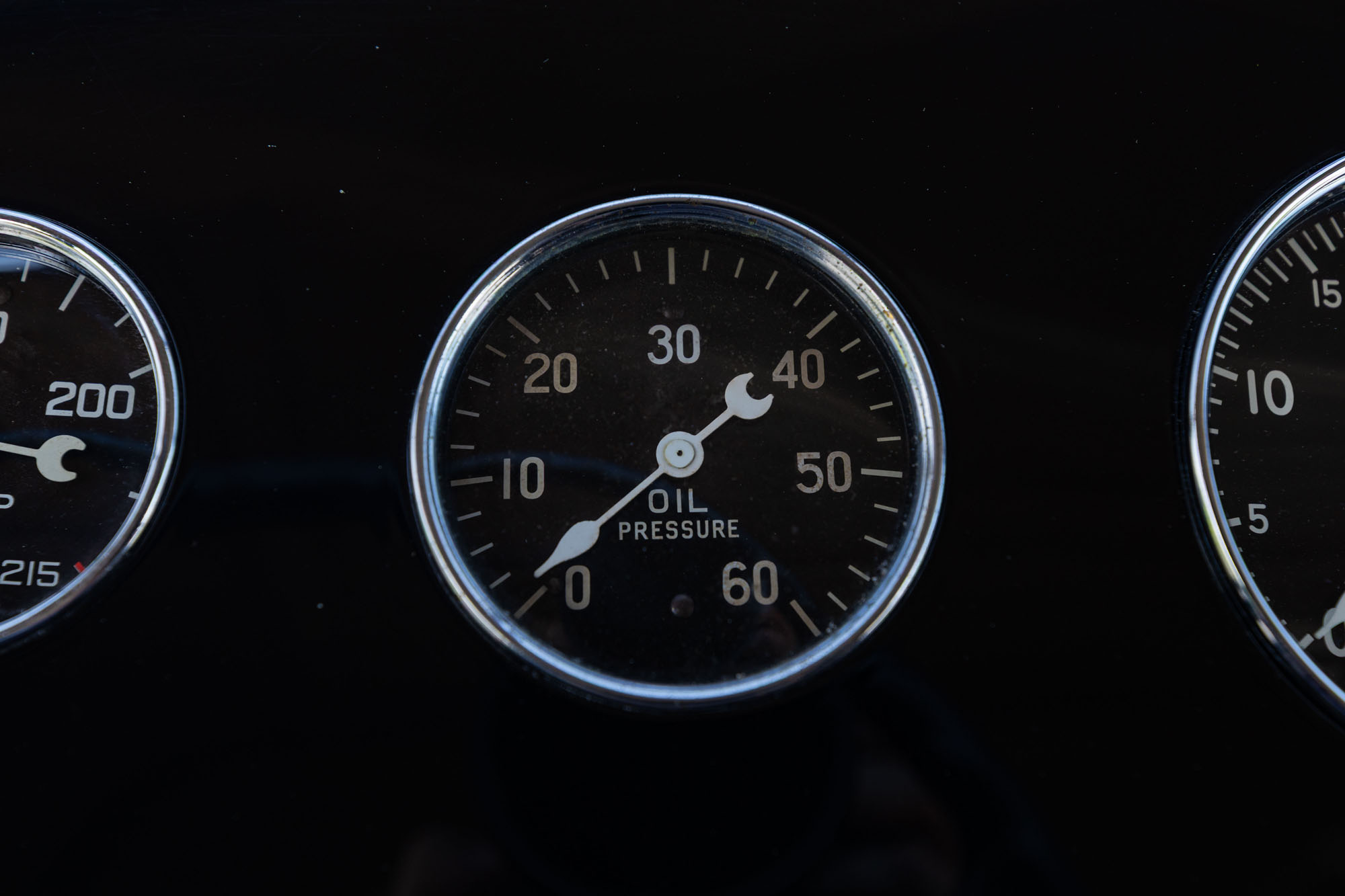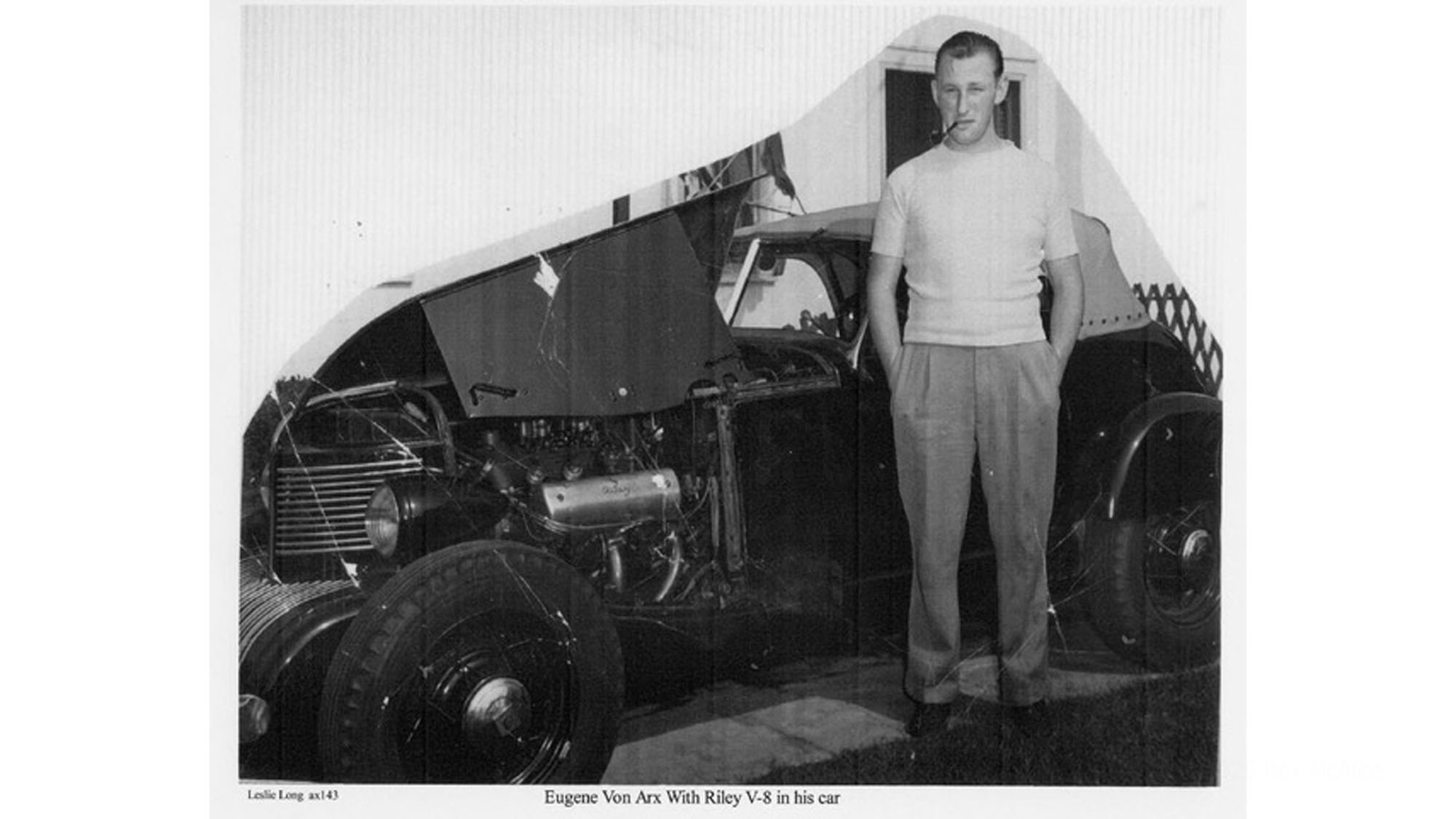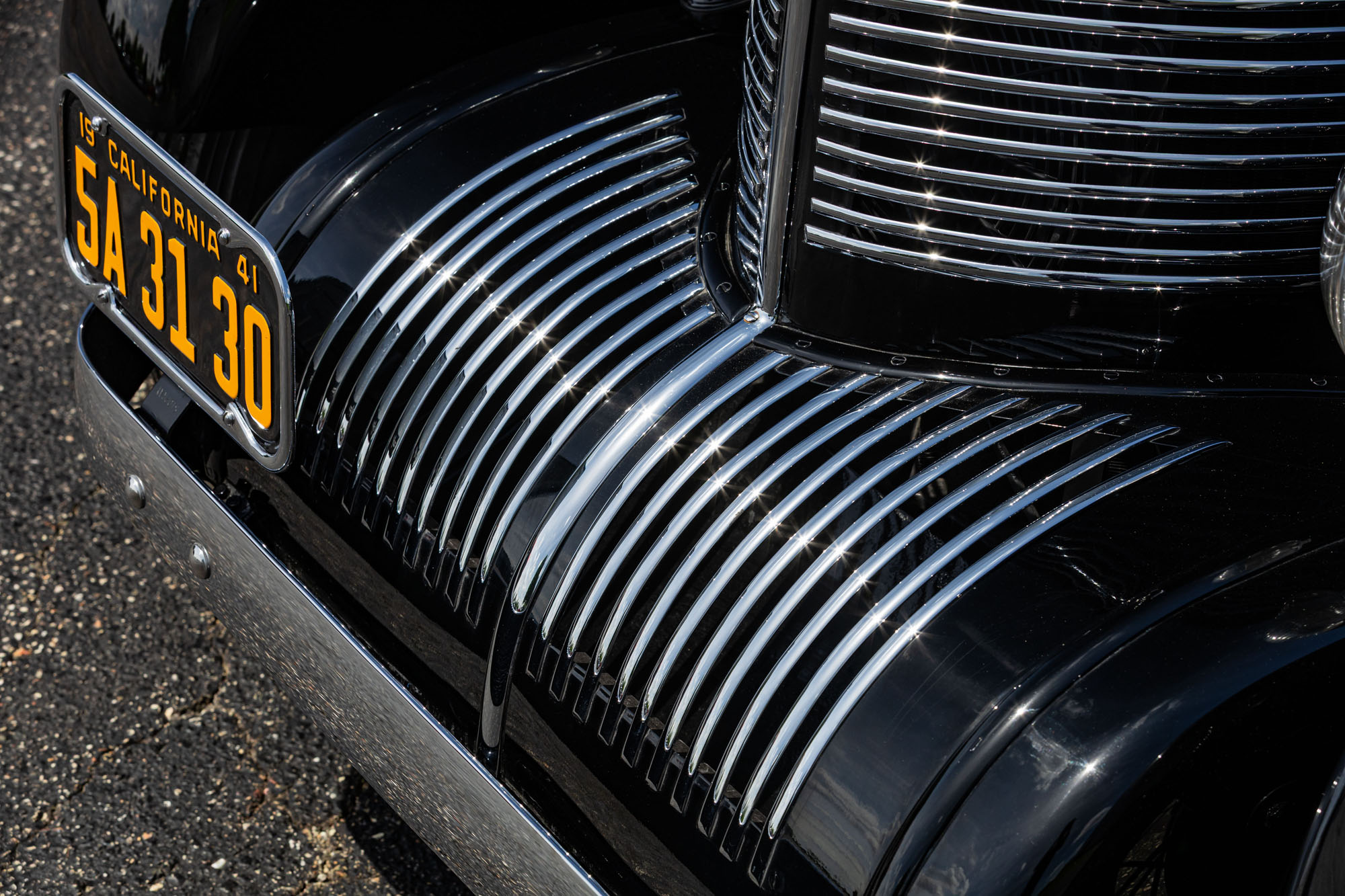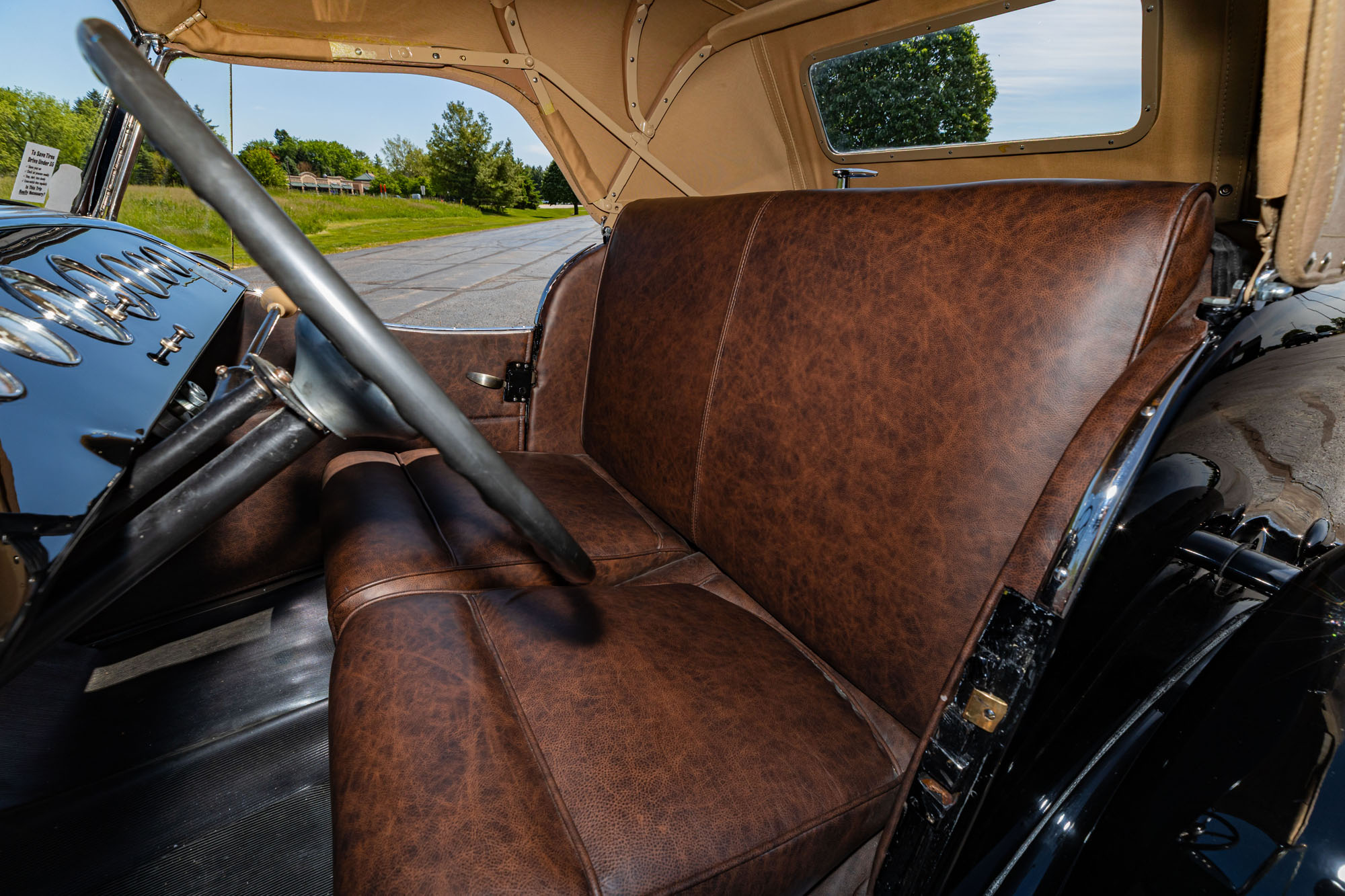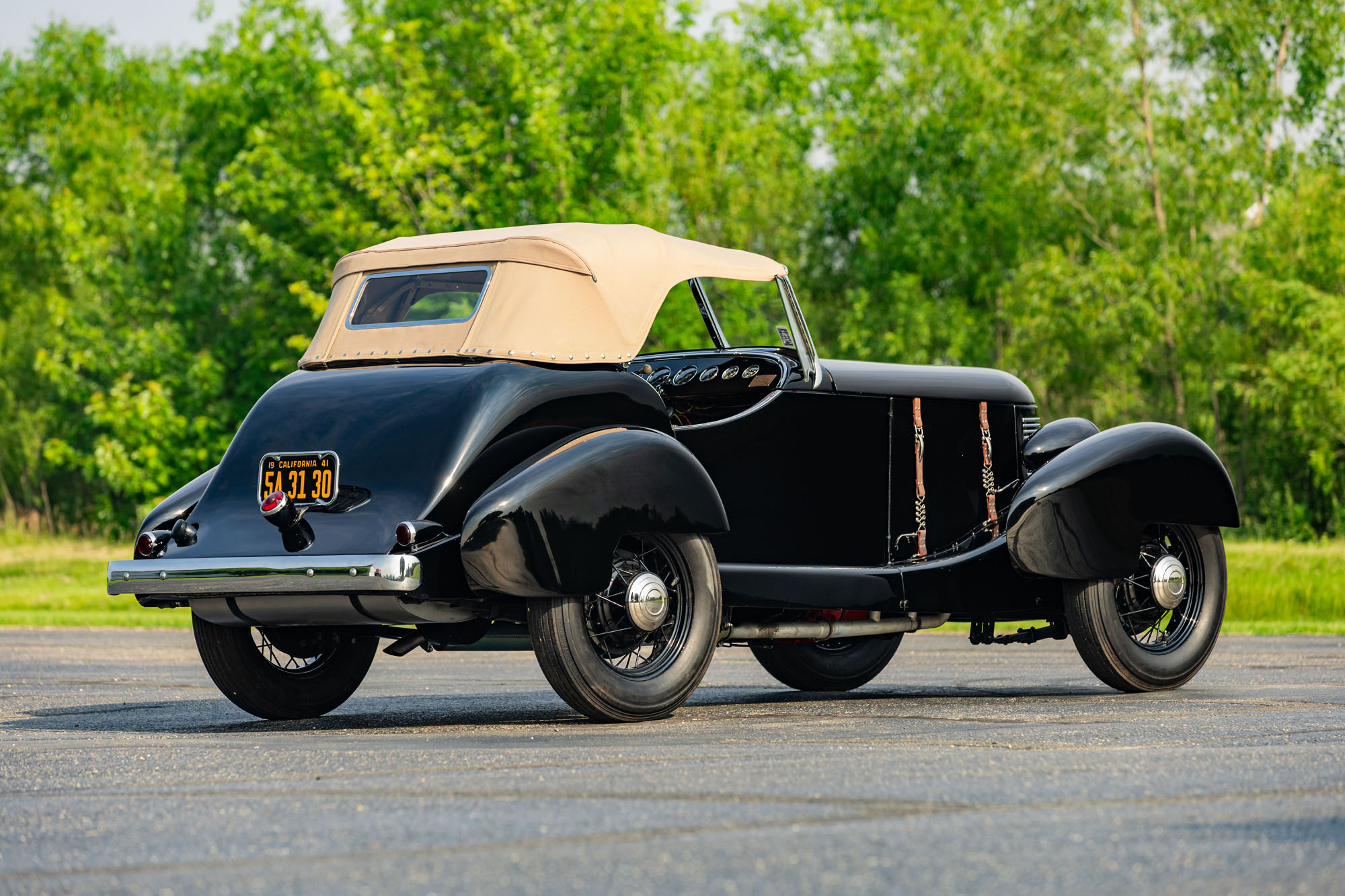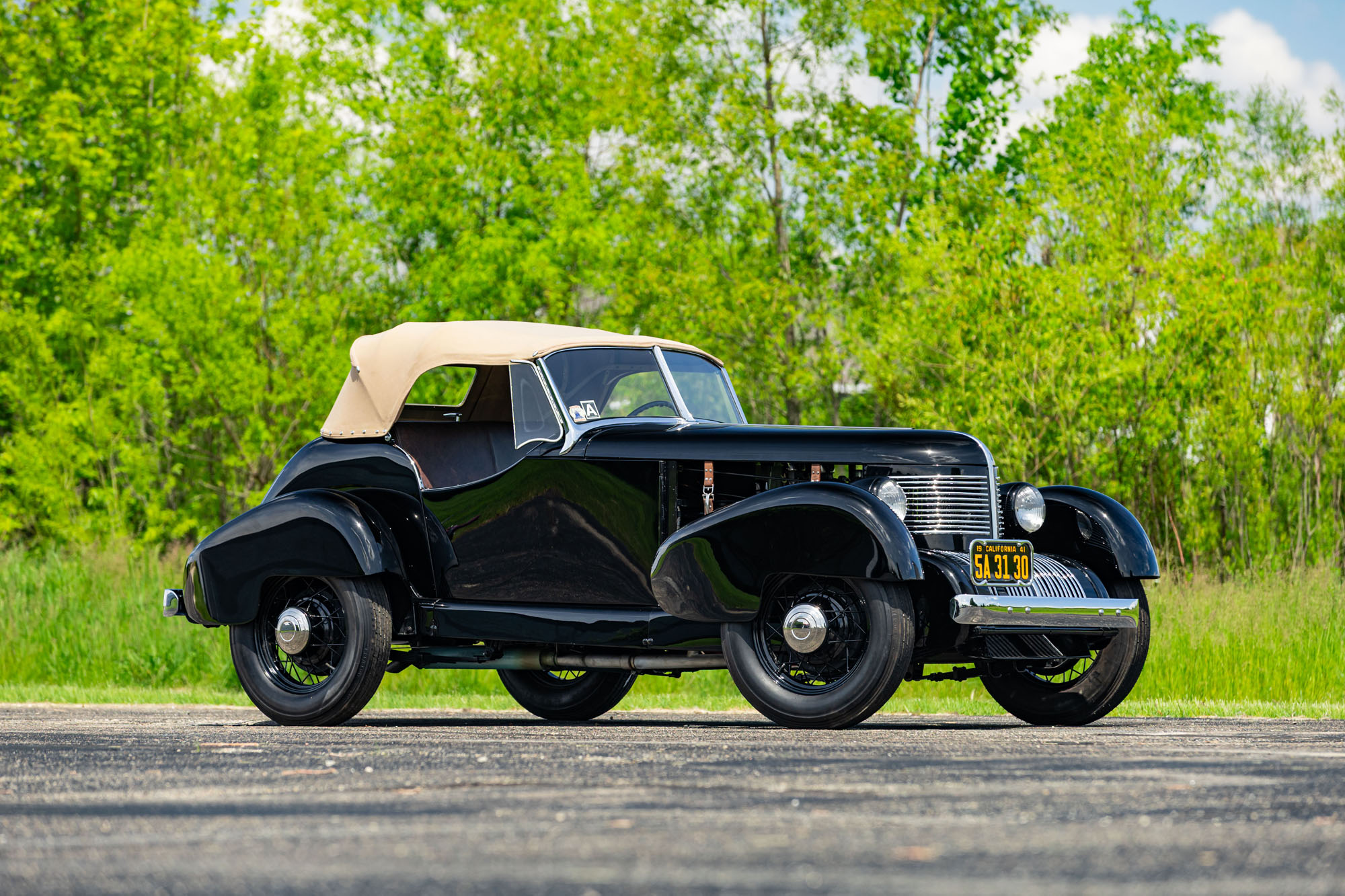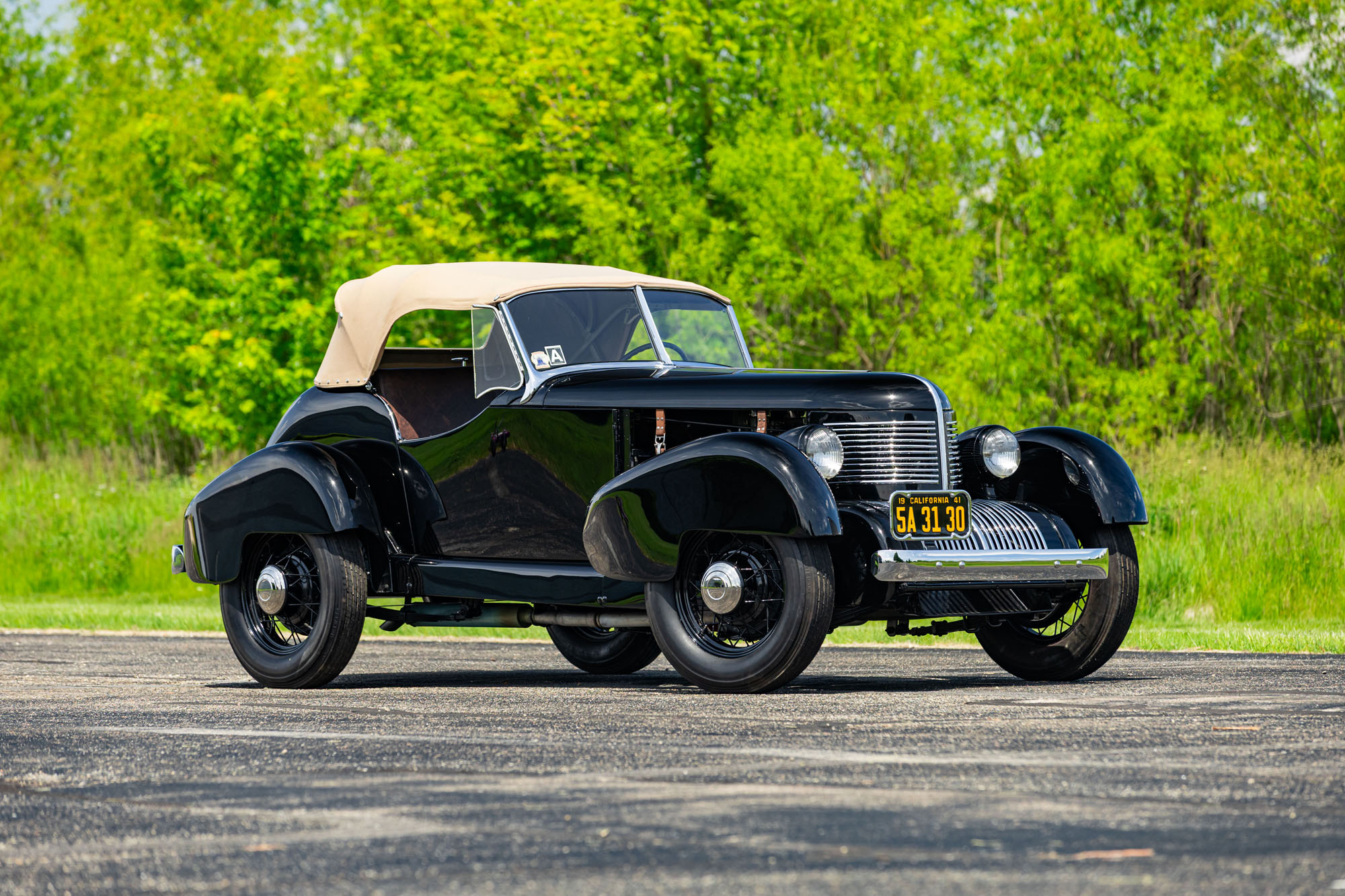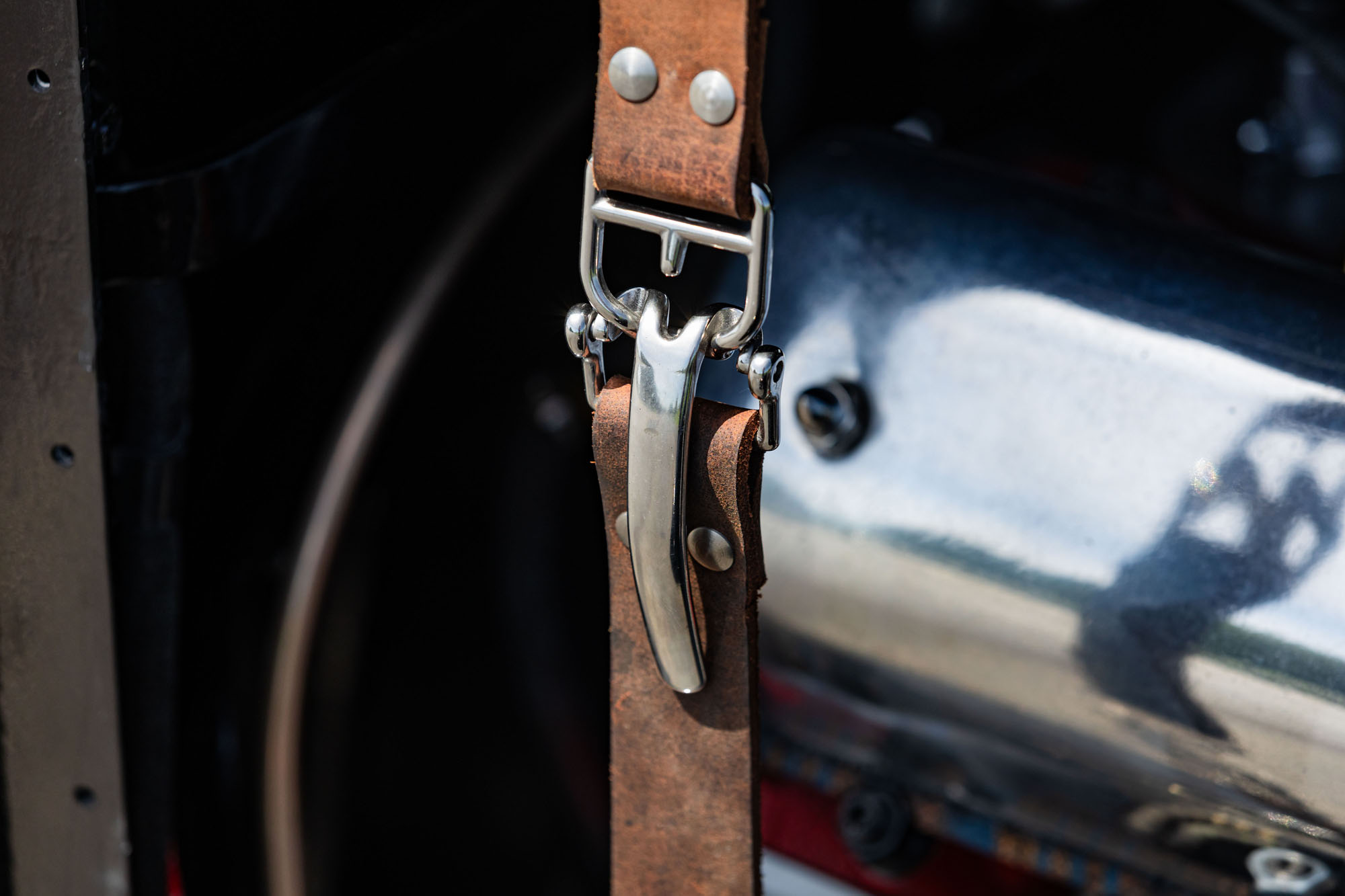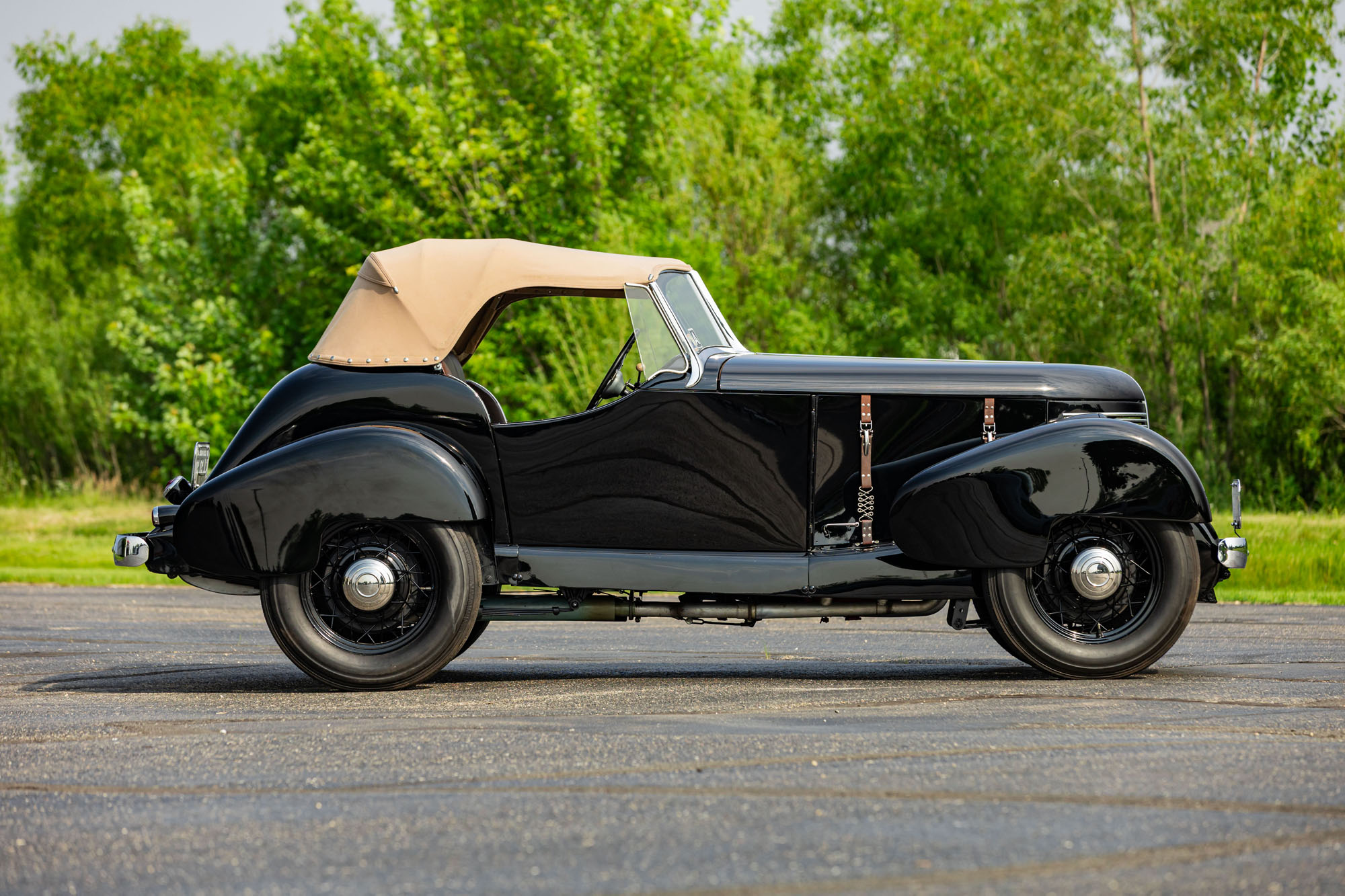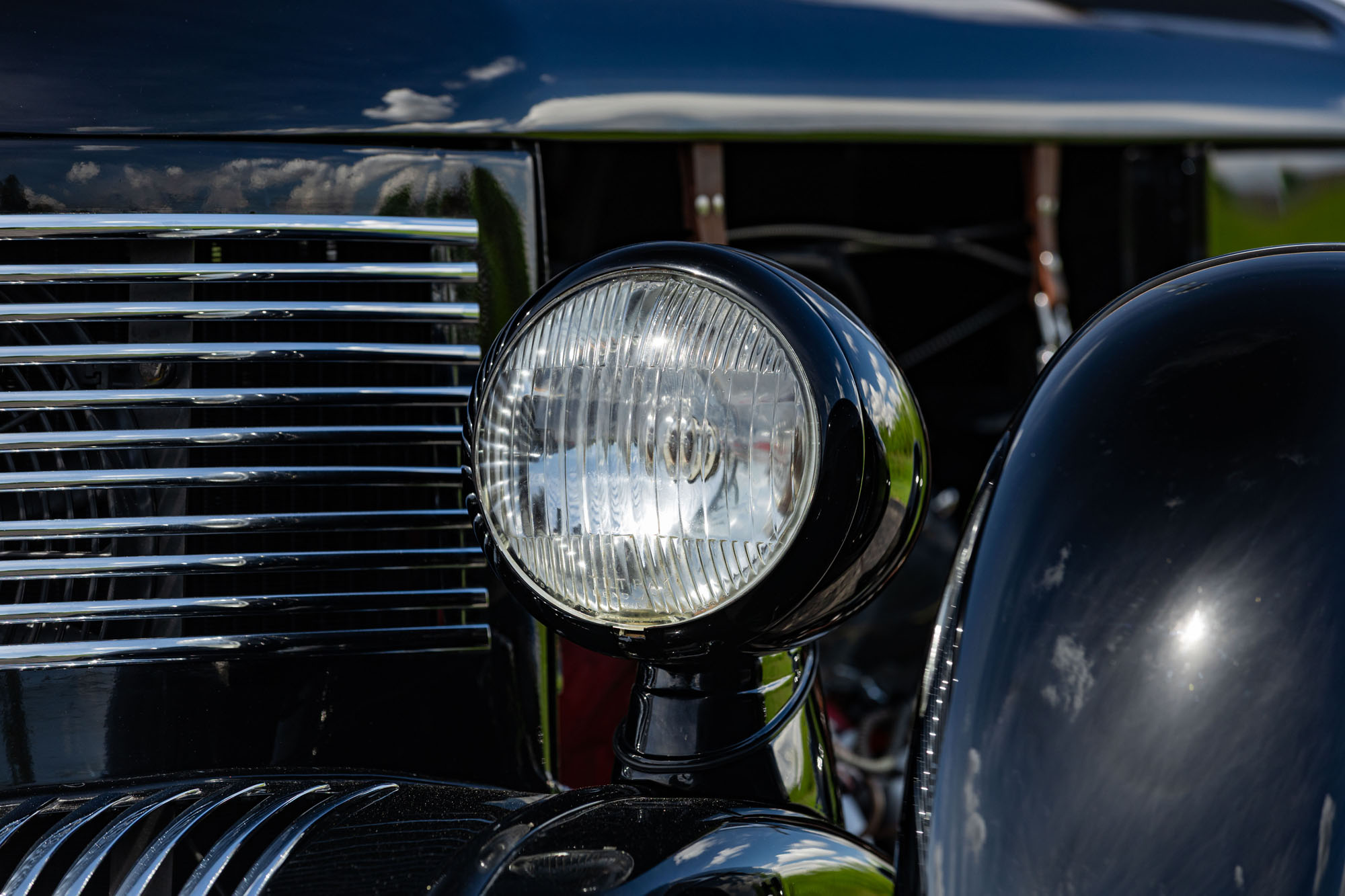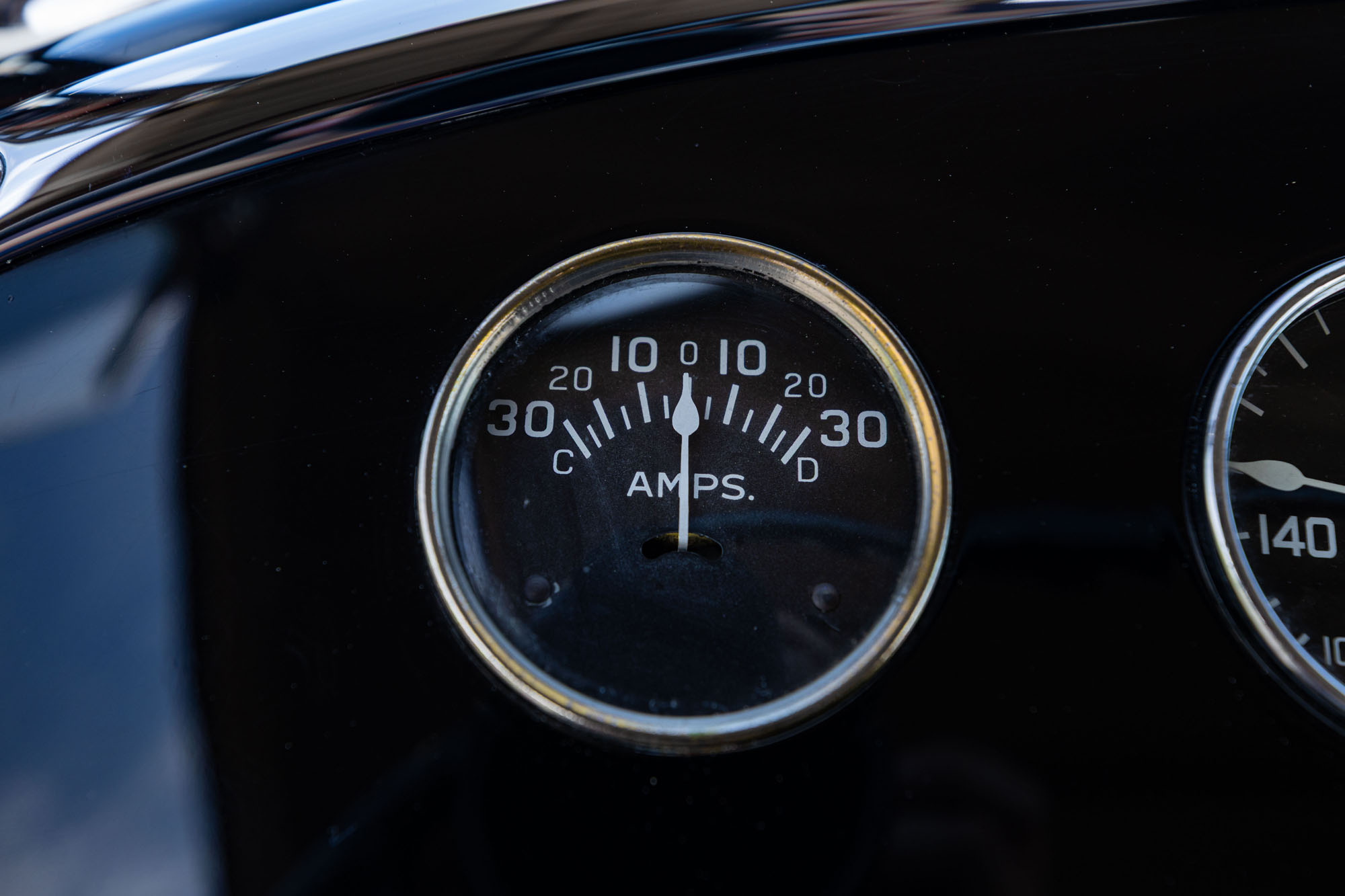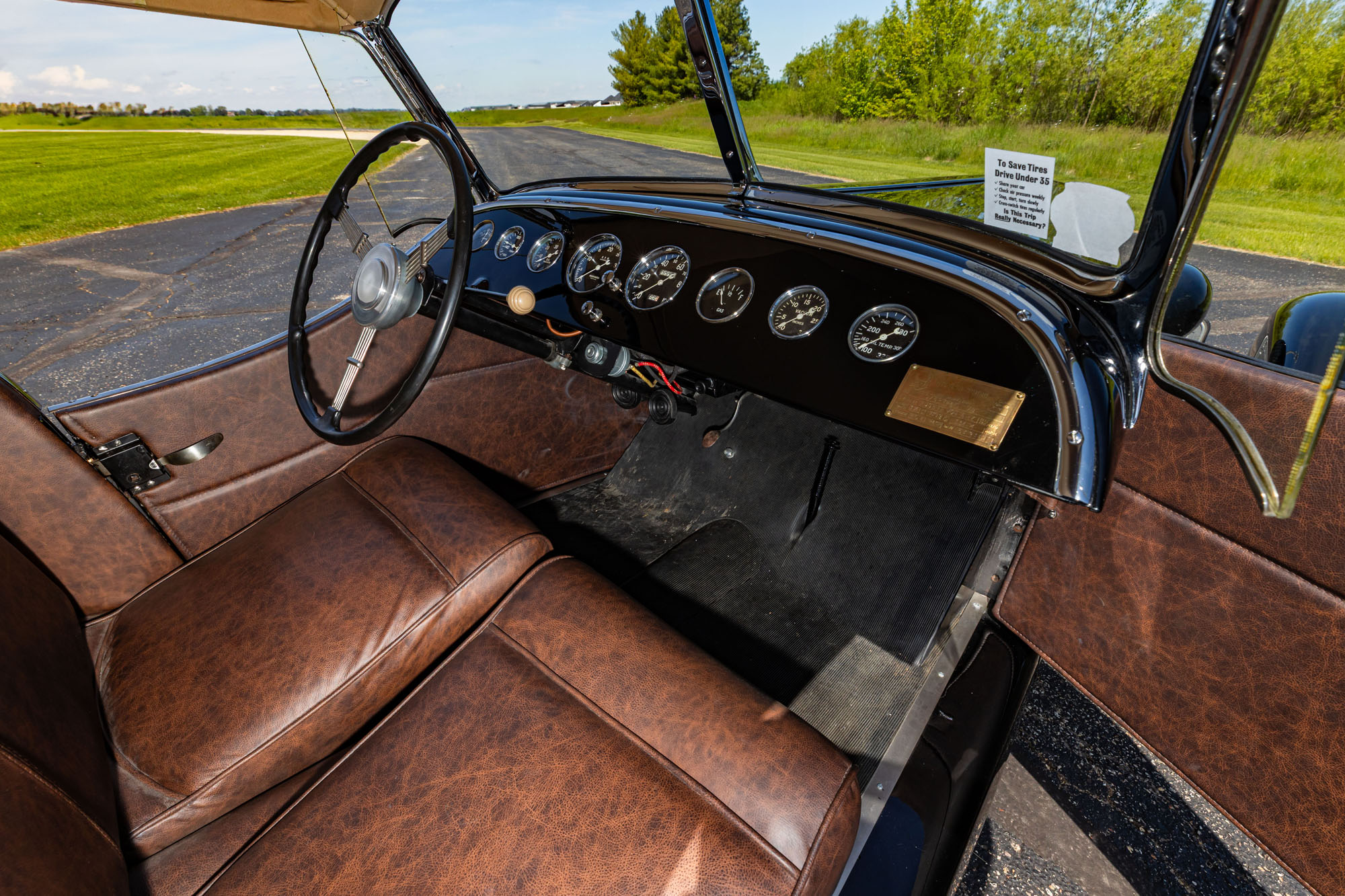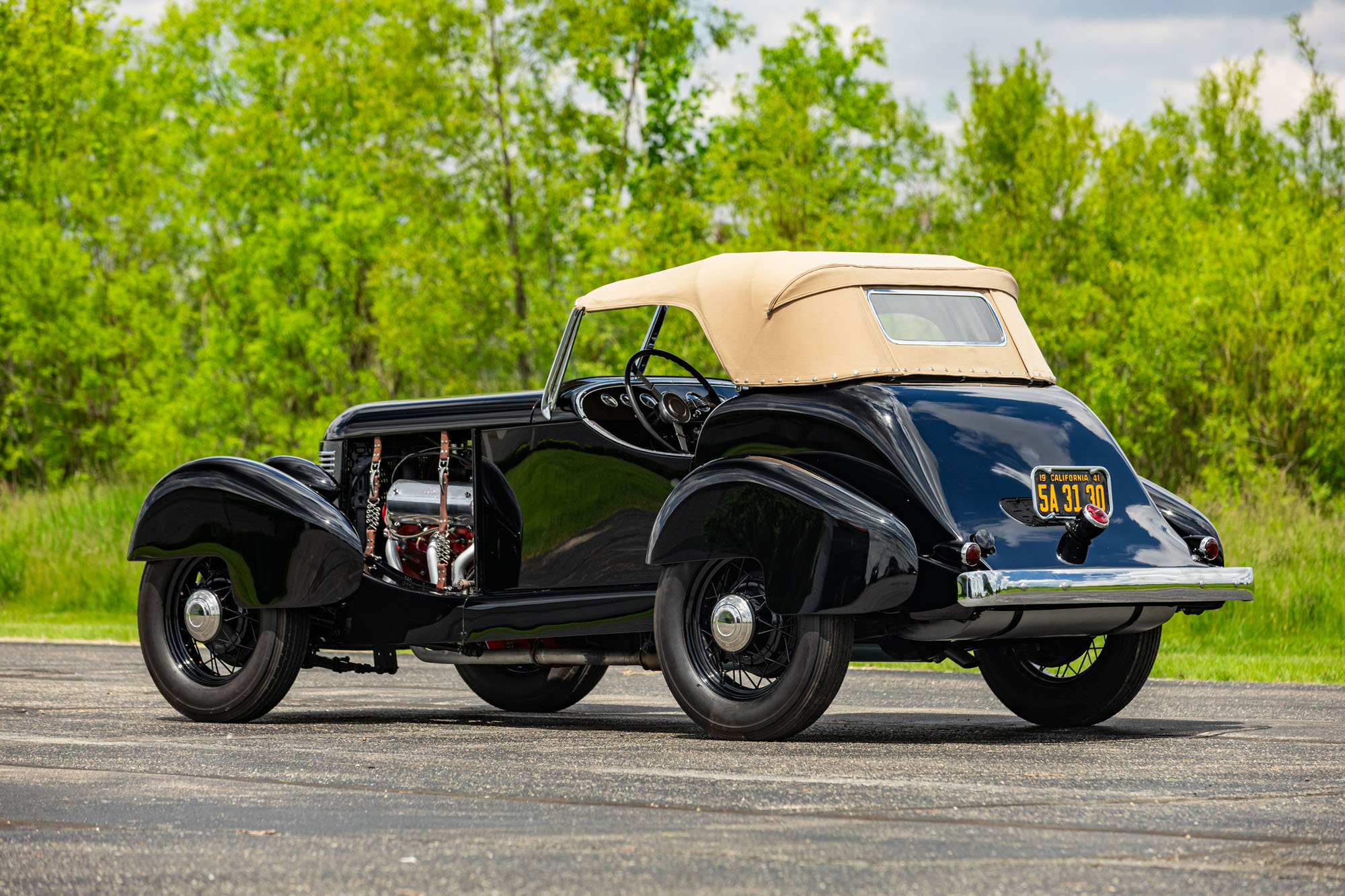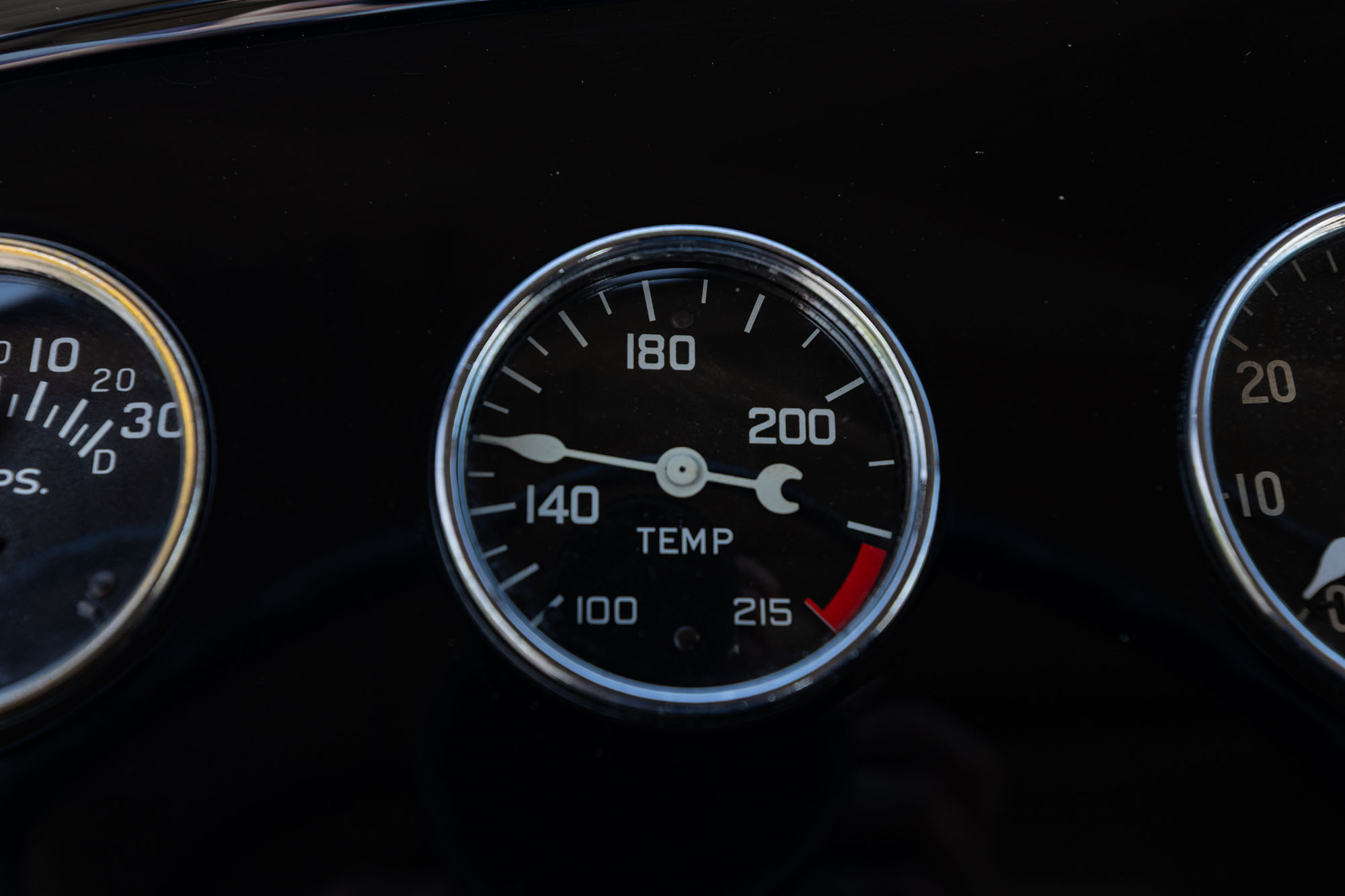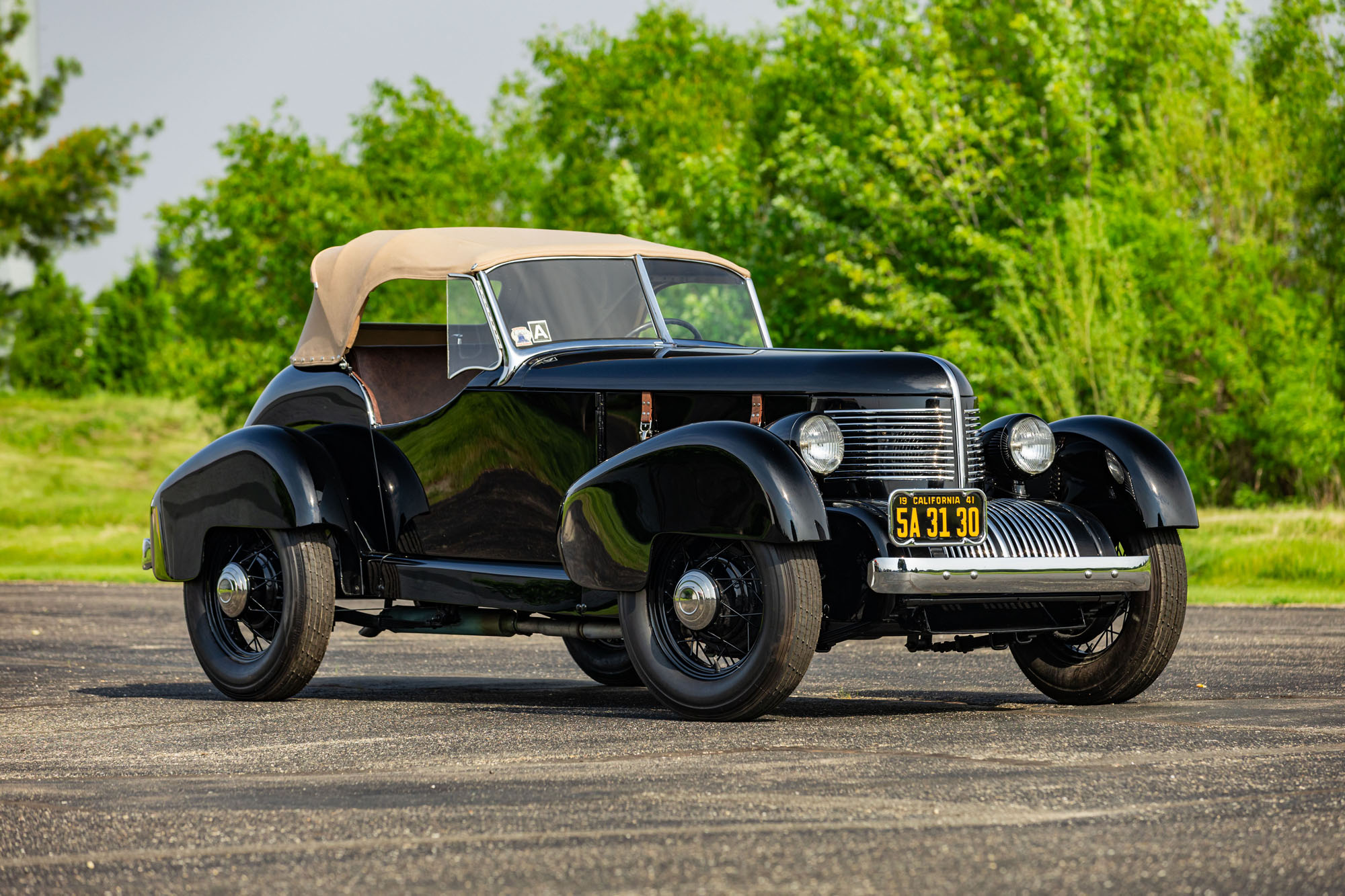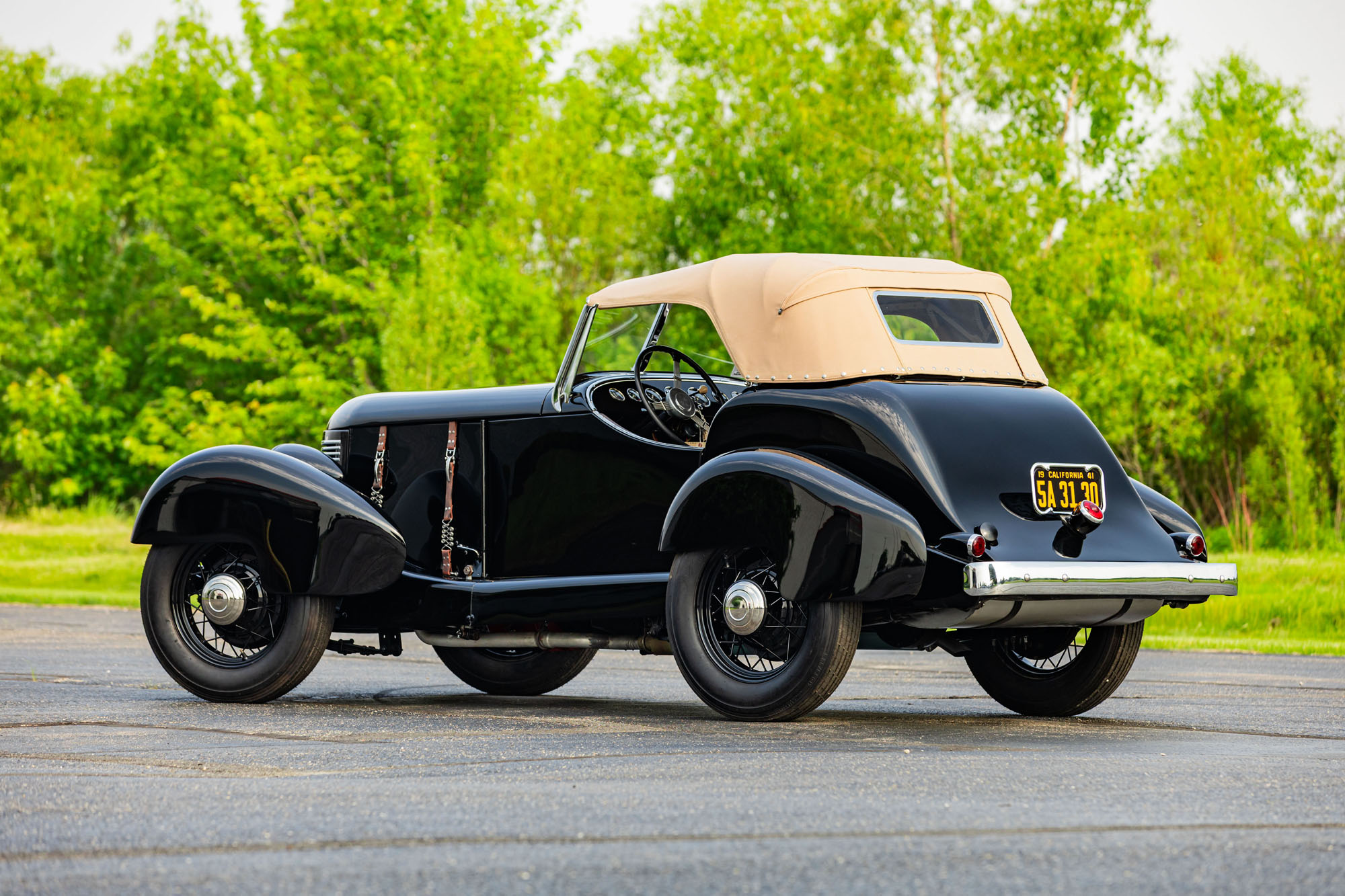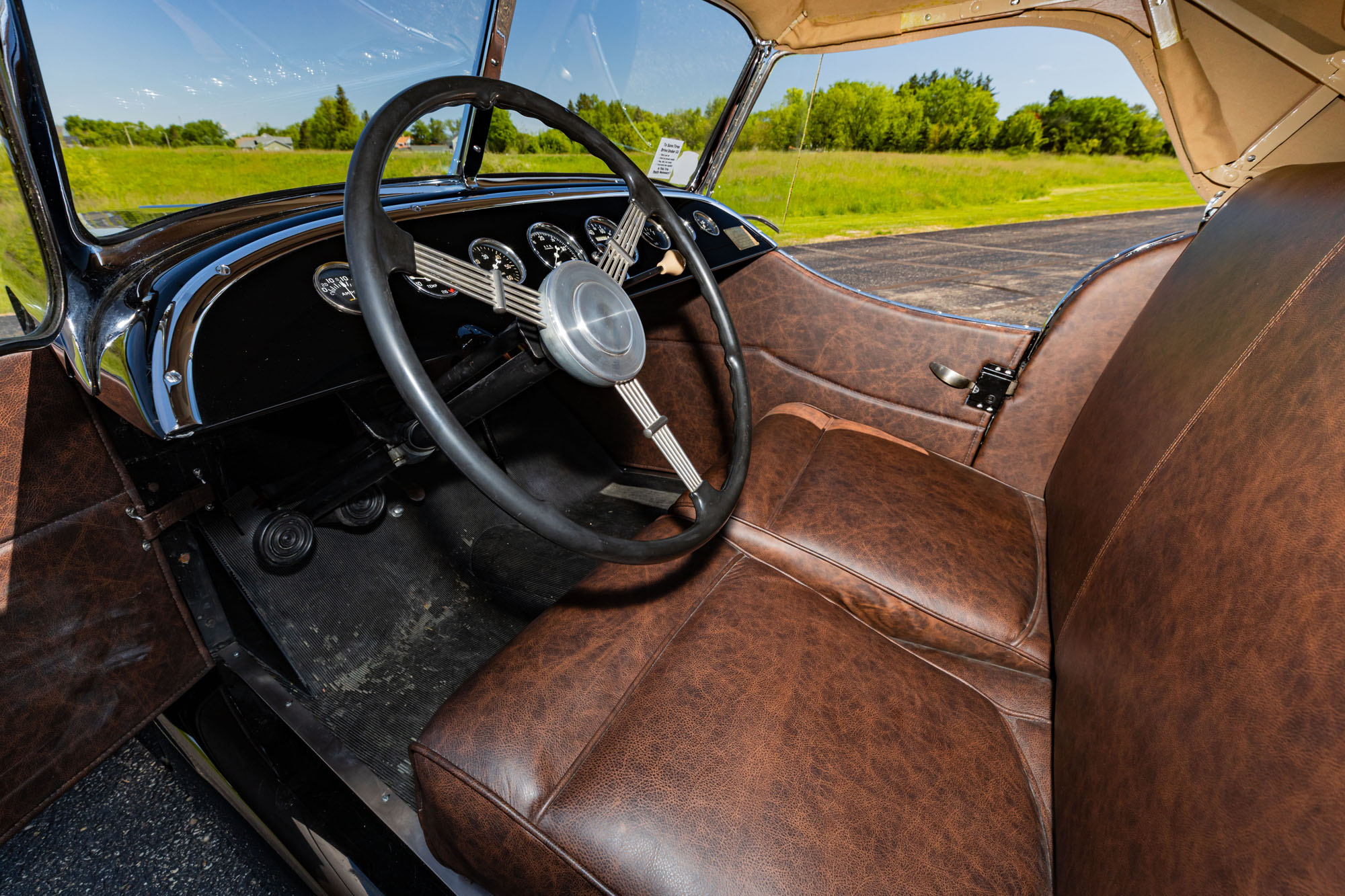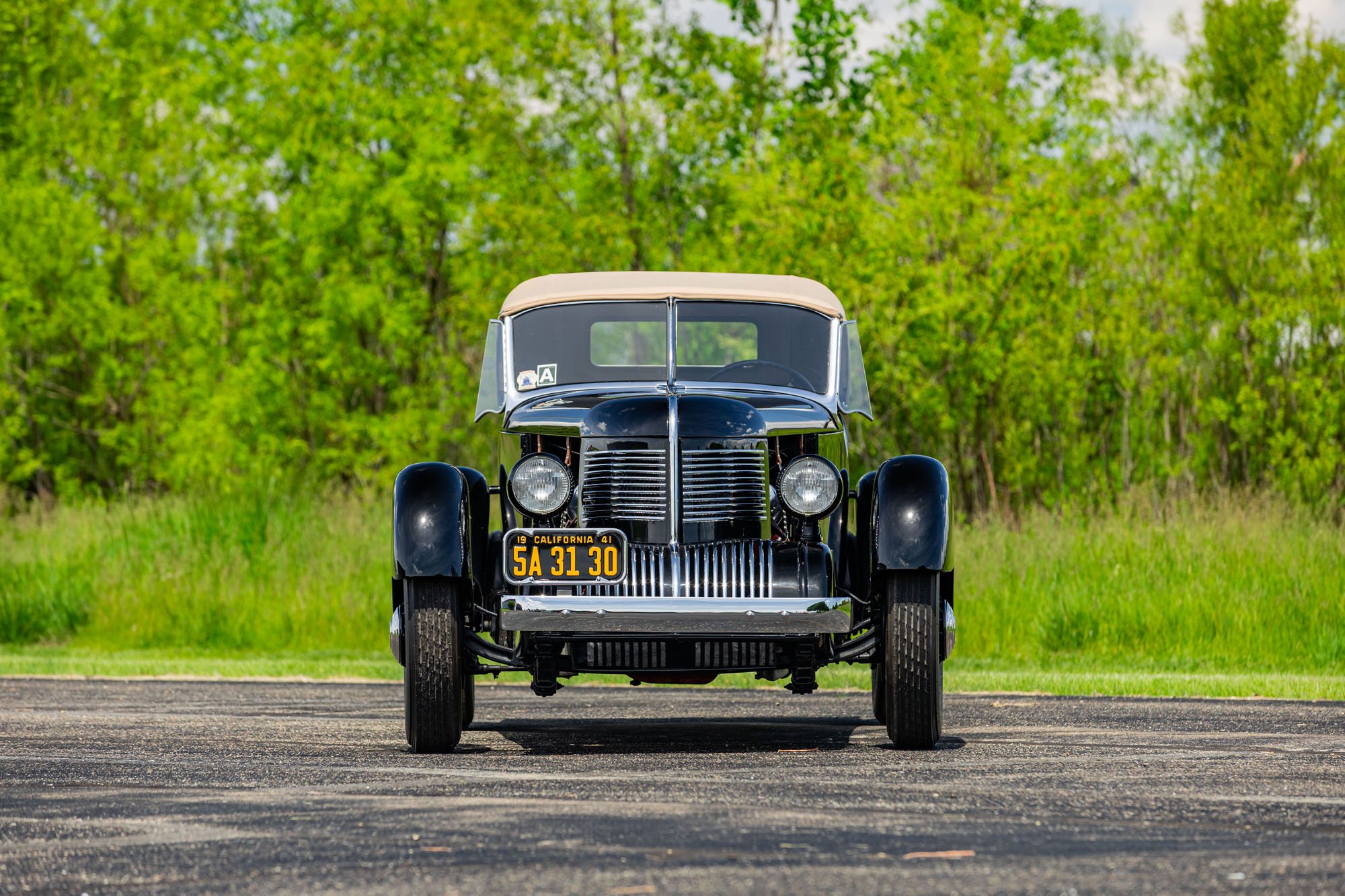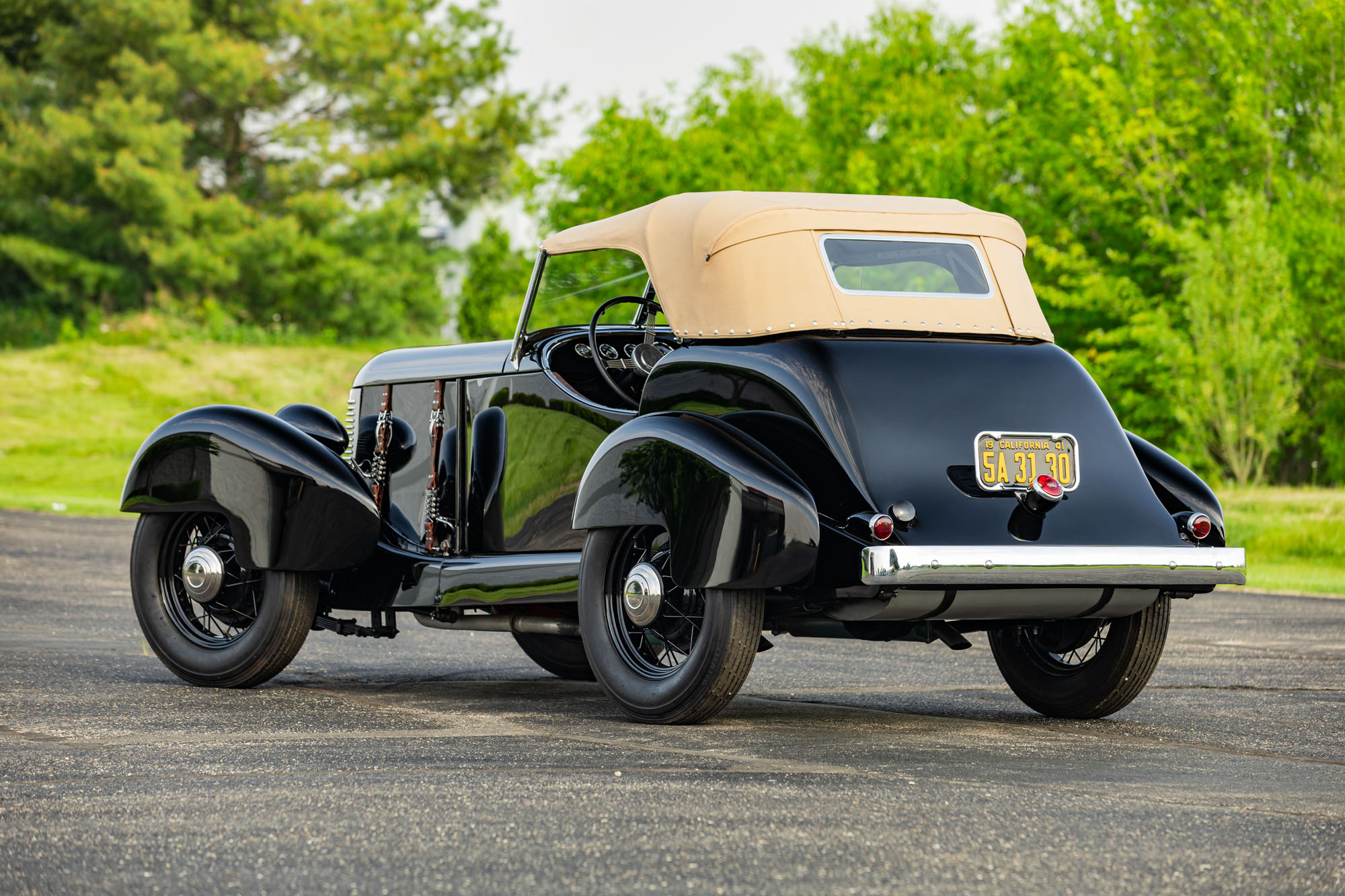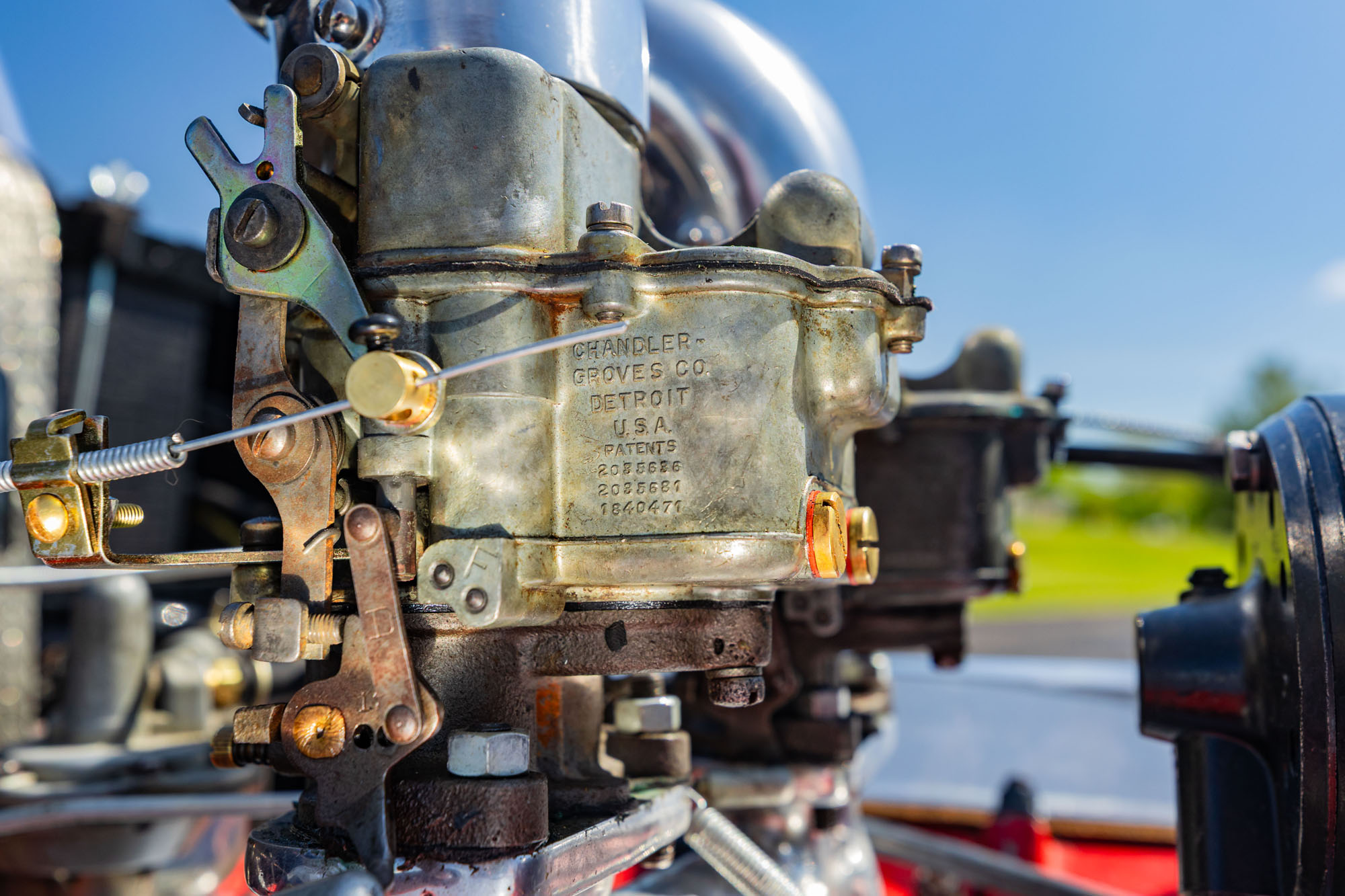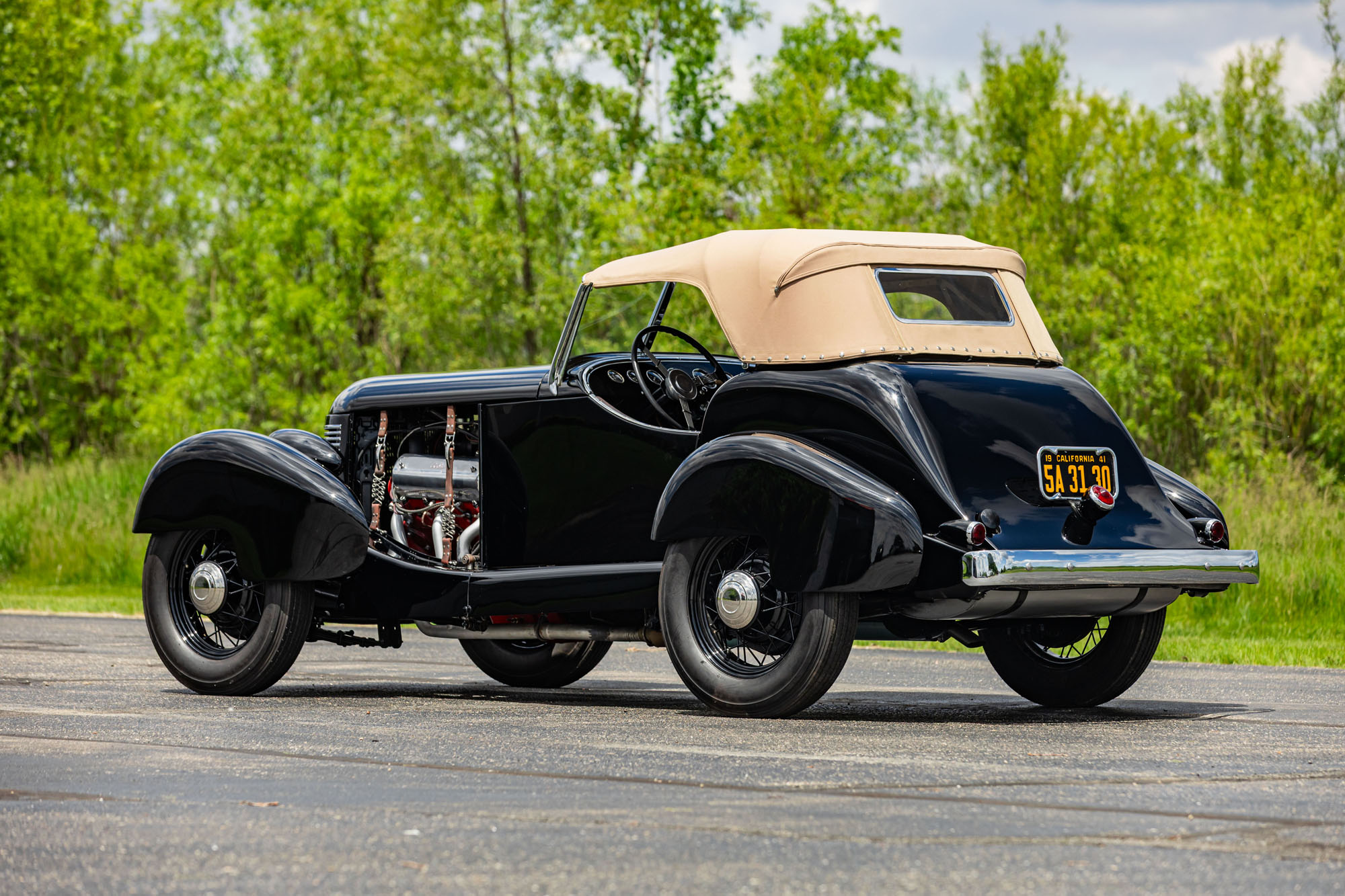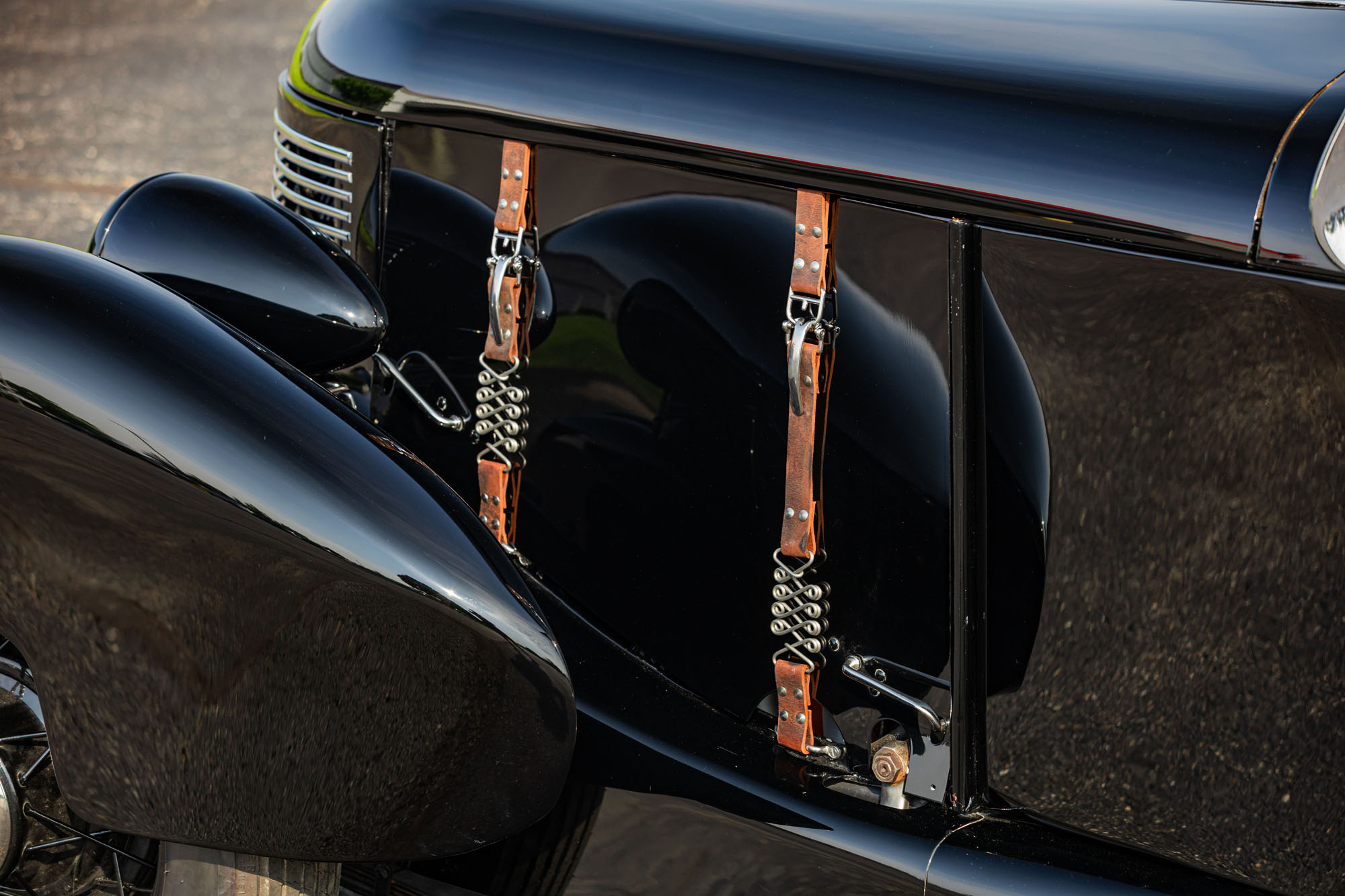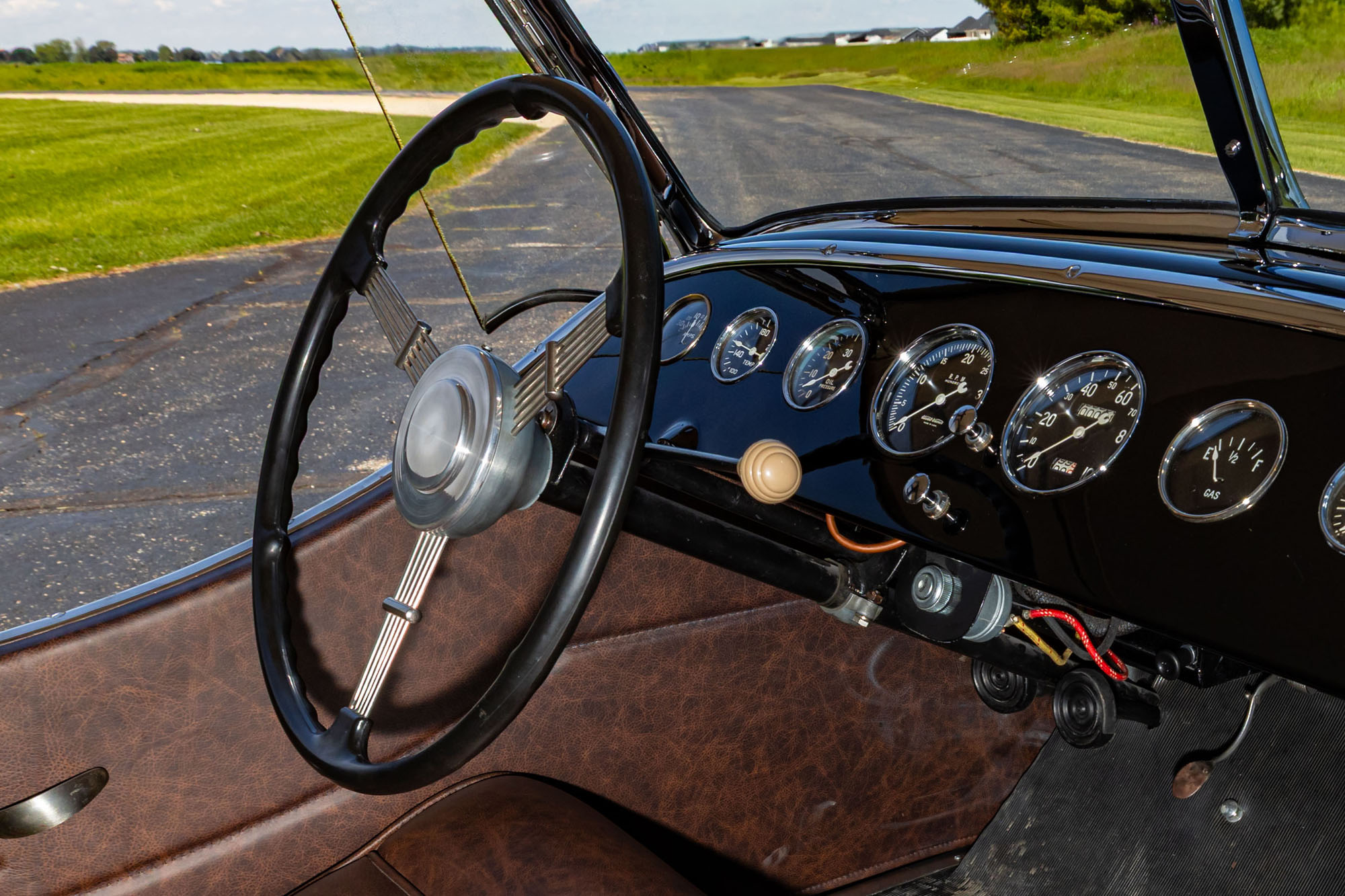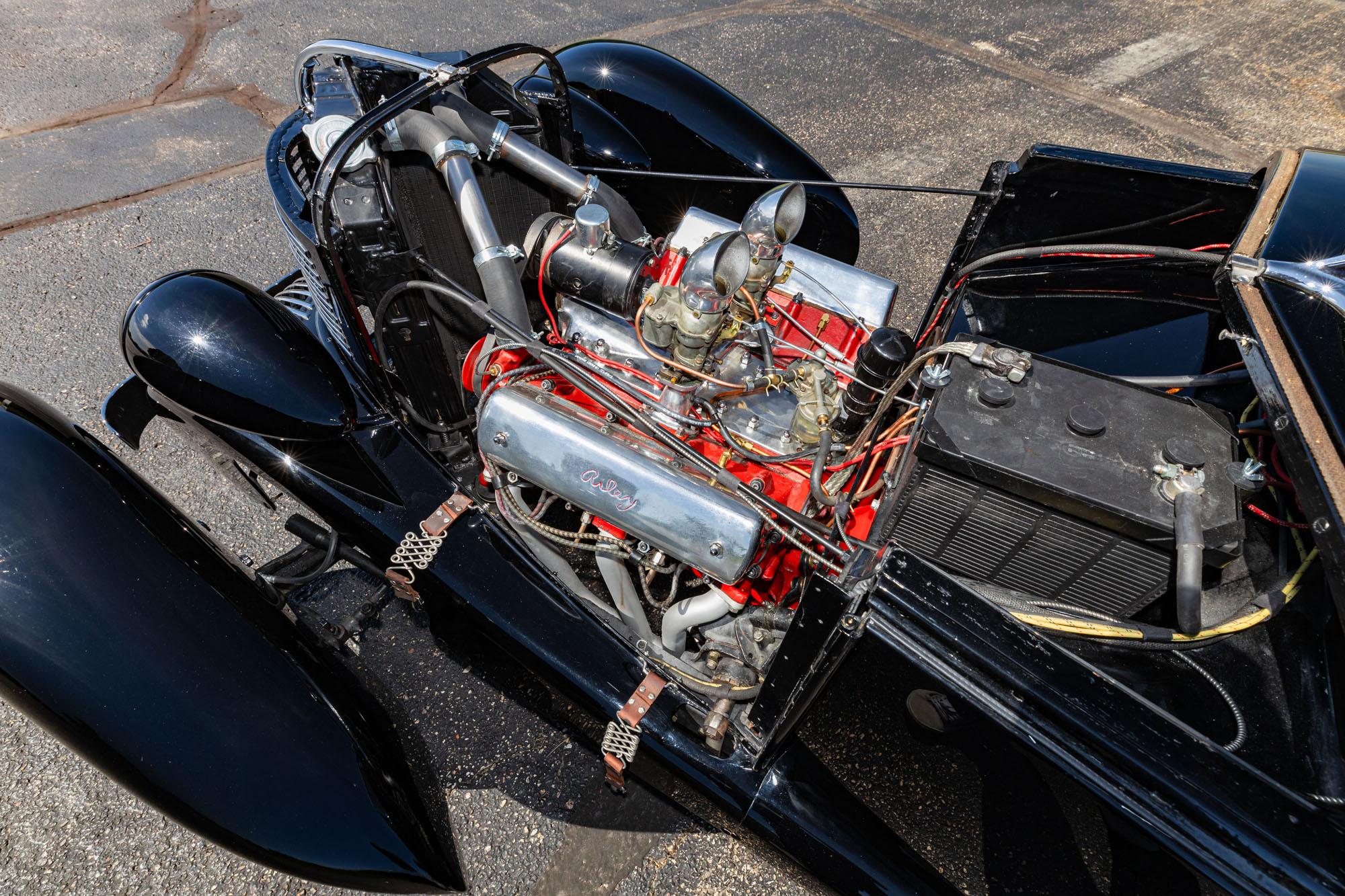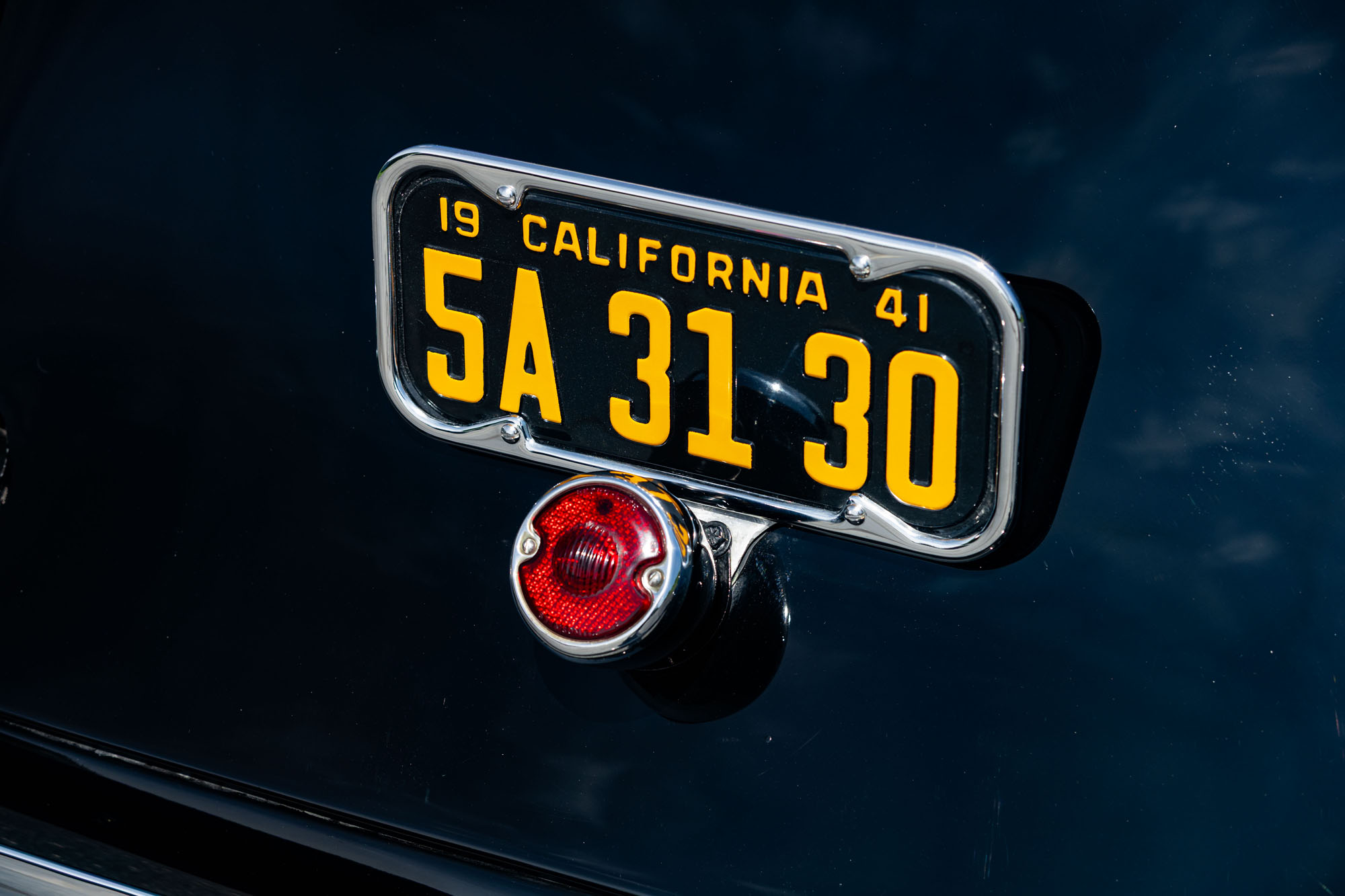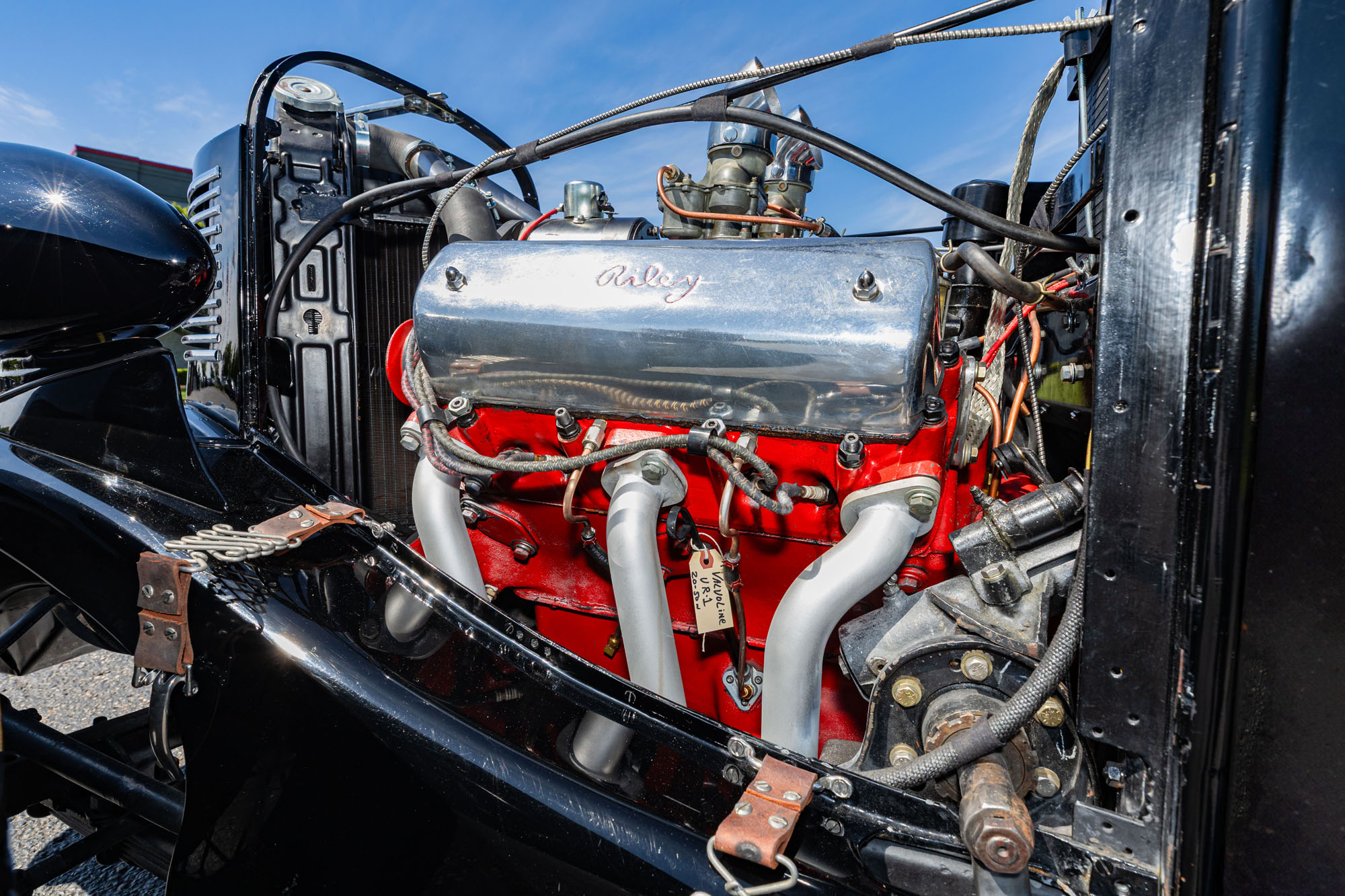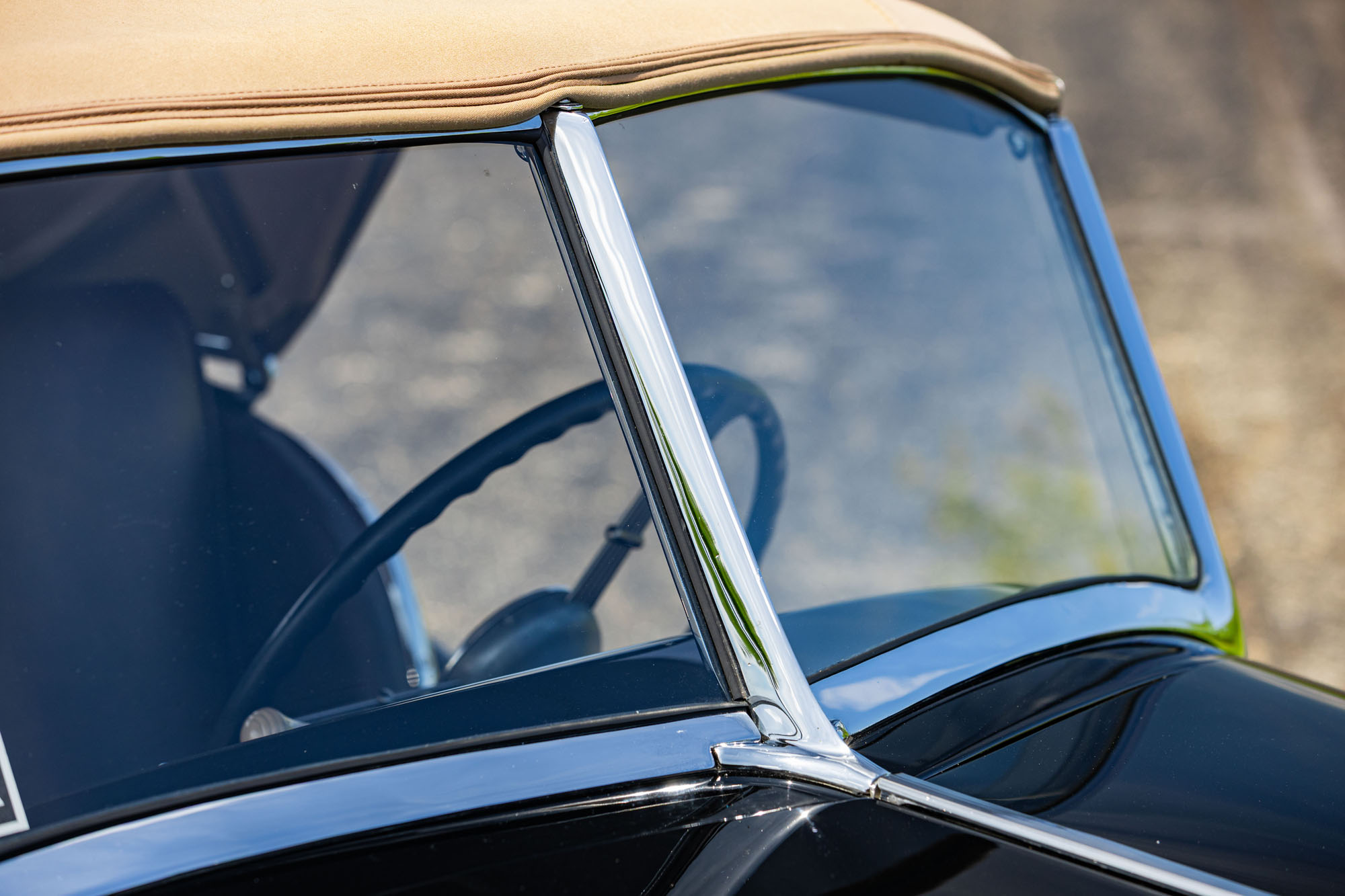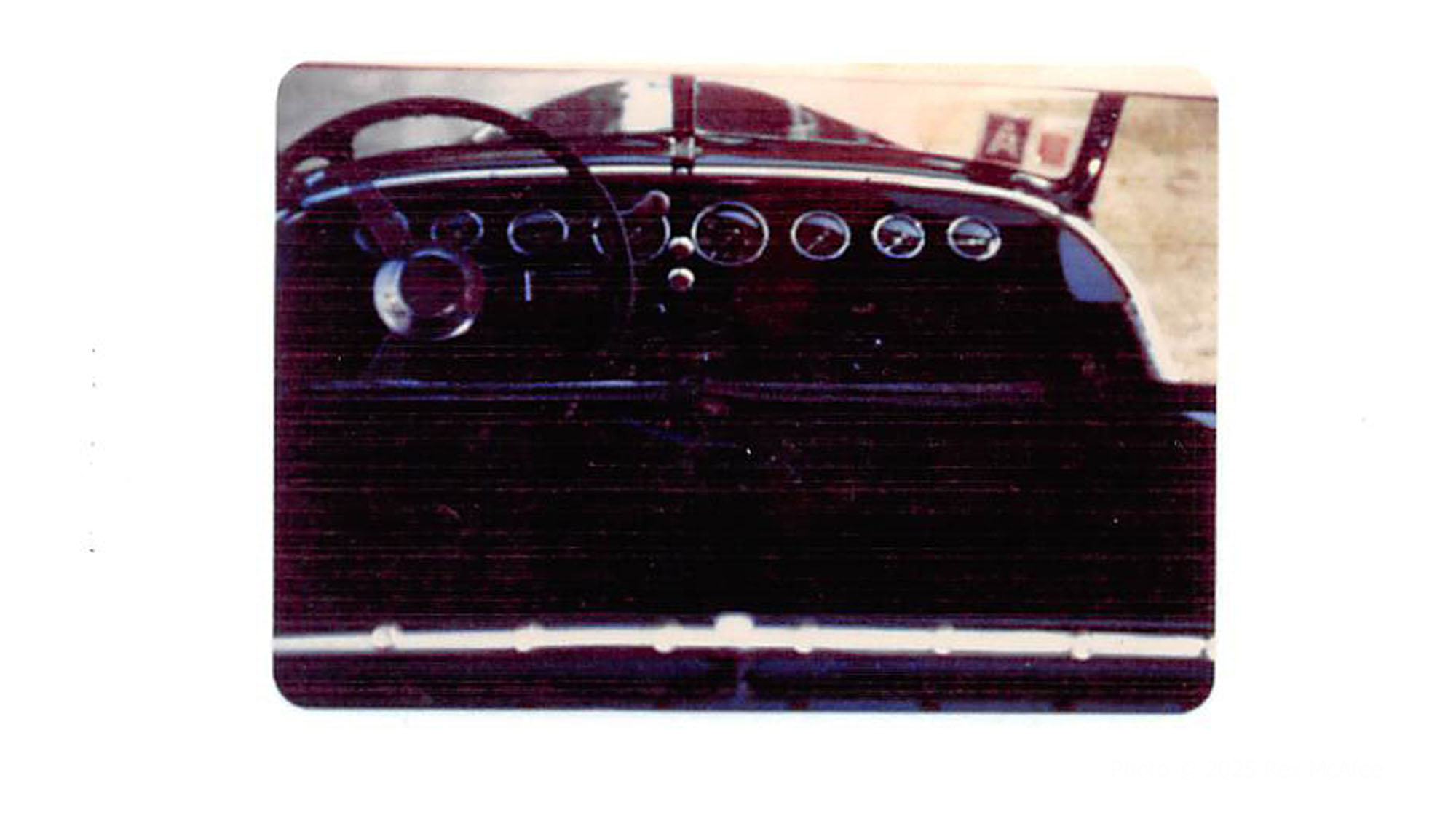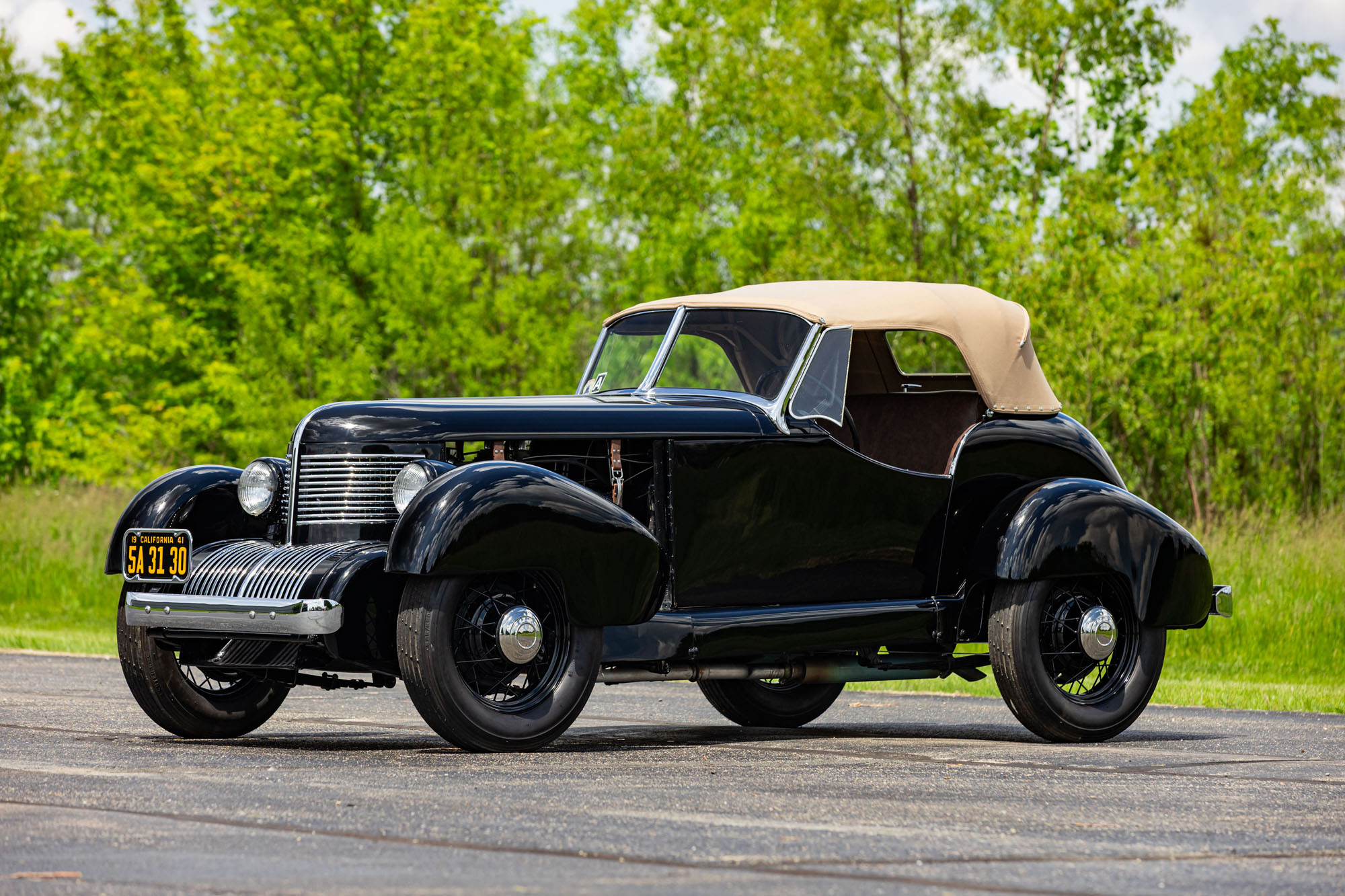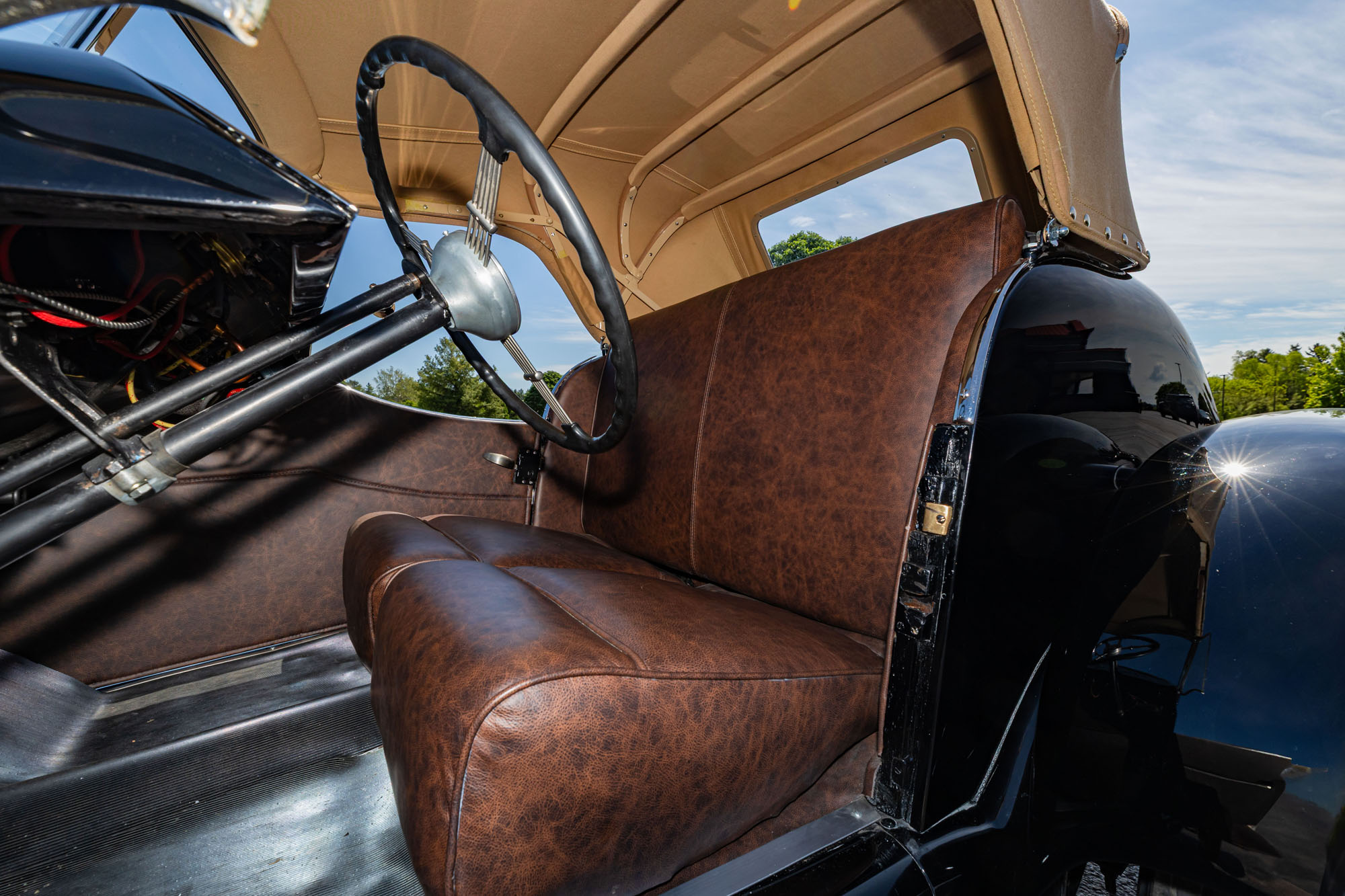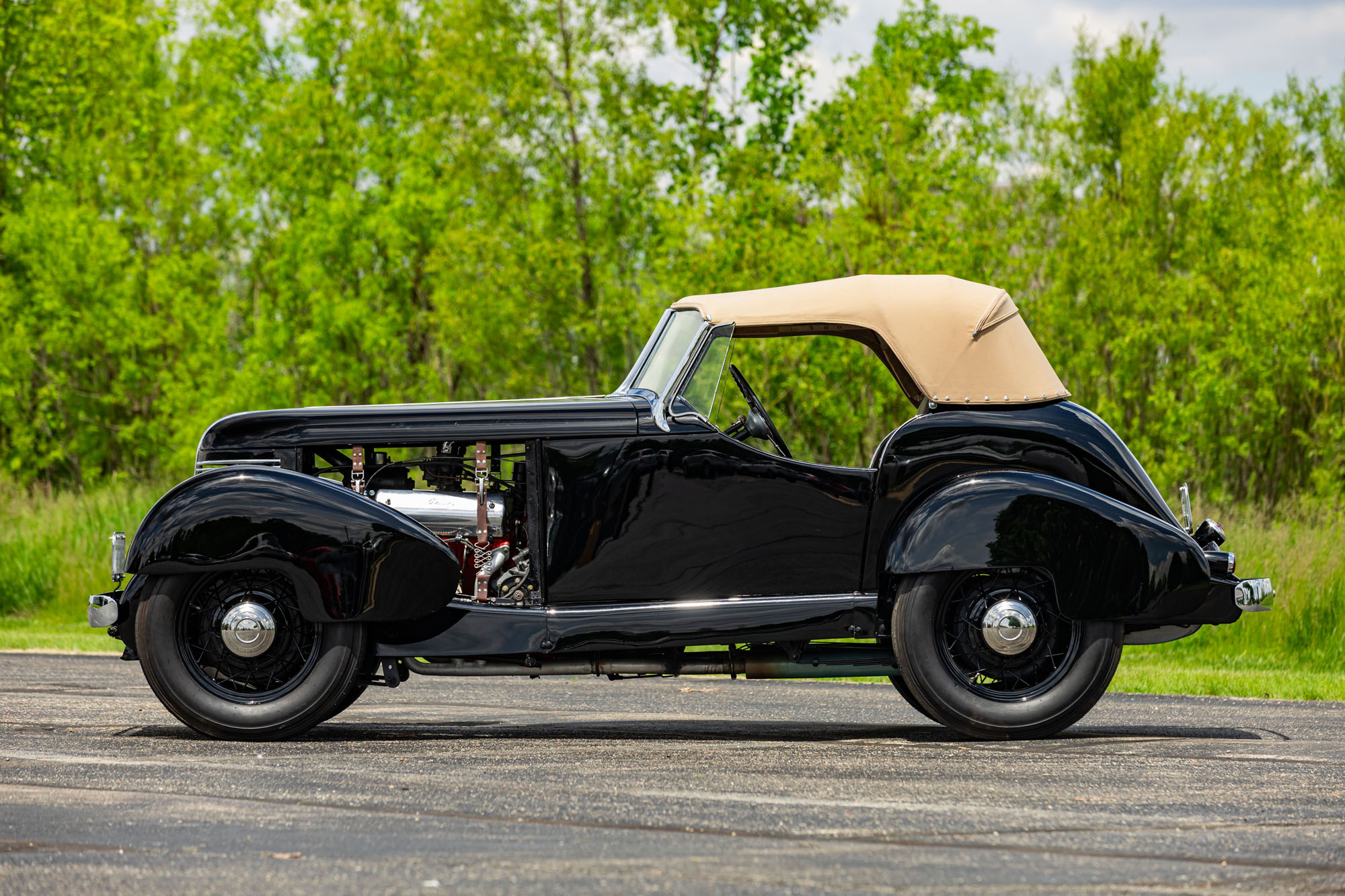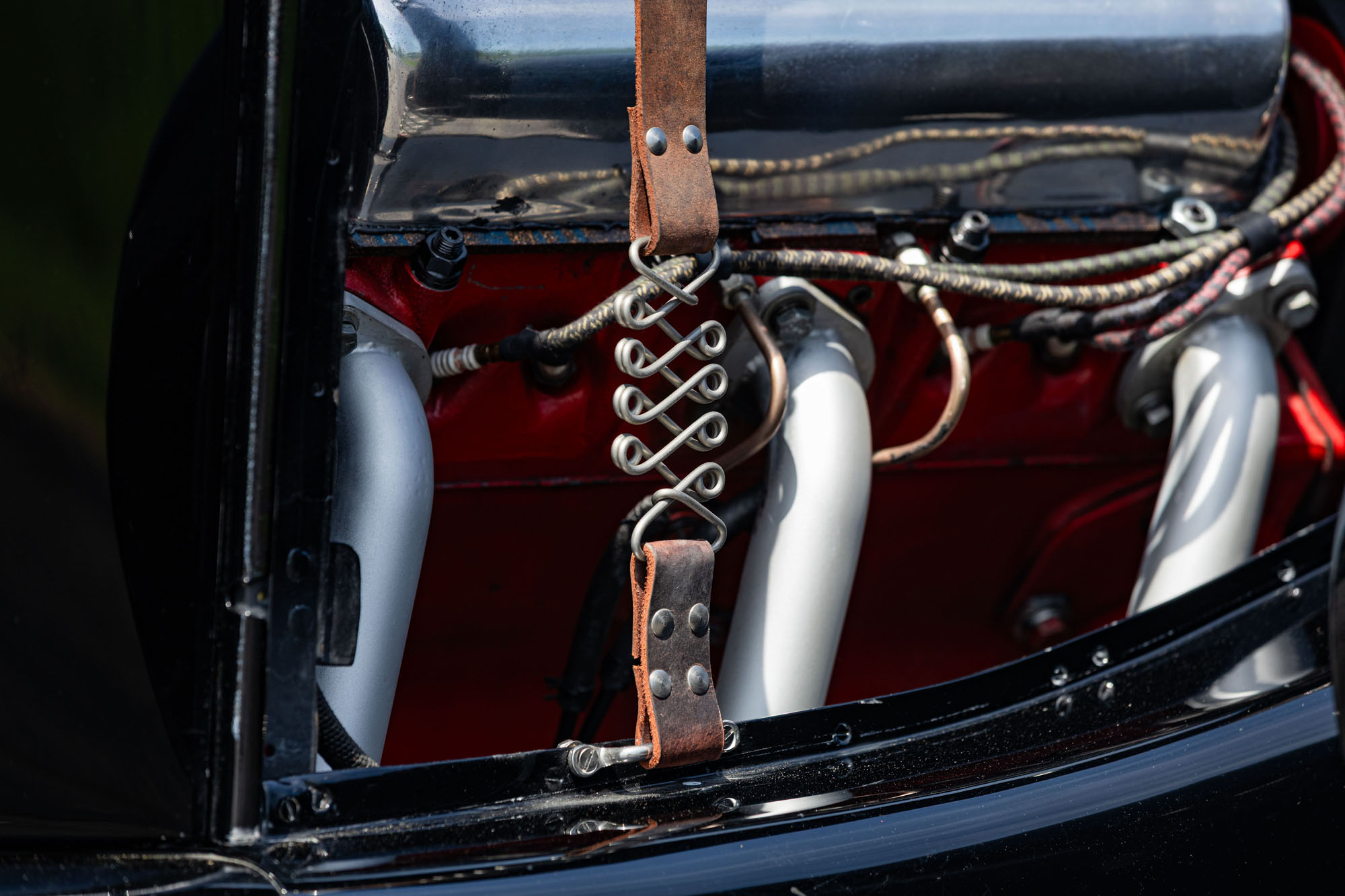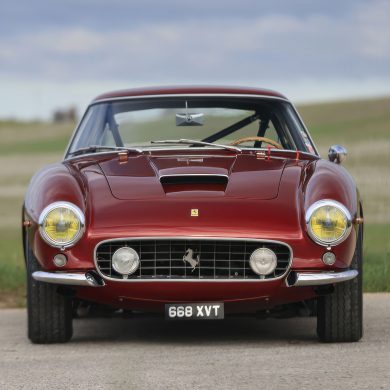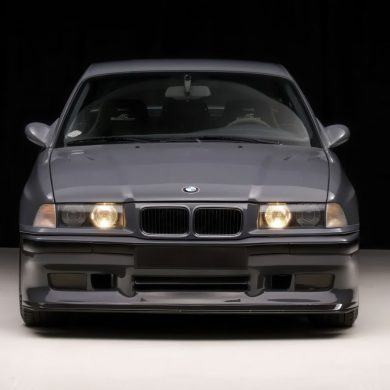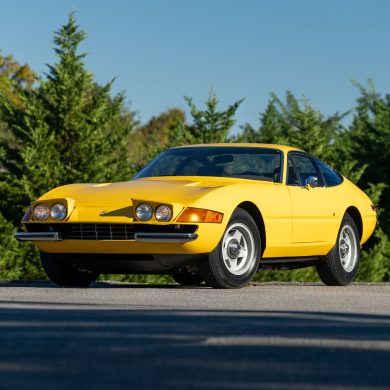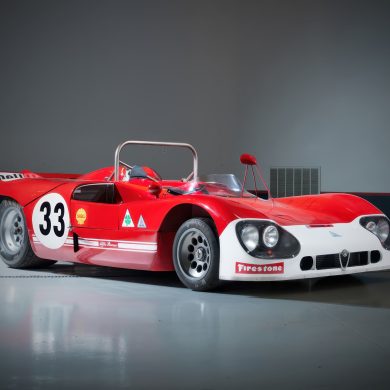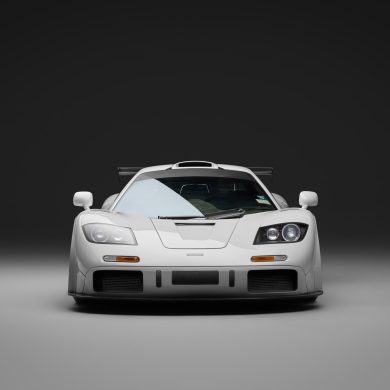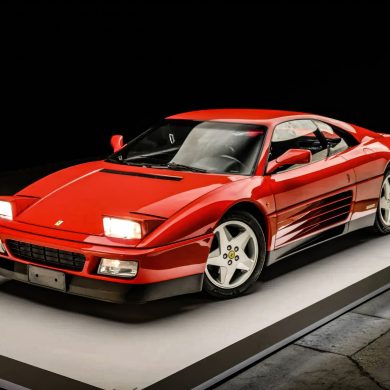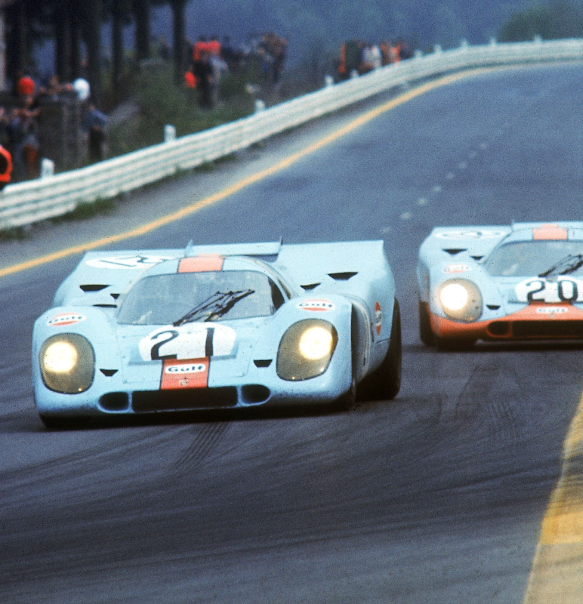Highlights
- Early dry lakes racer built by Eugene Von Arx Sr. for his son
- Eugene Von Arx Sr. learned his craft at the renowned coachbuilder Walter M. Murphy Co. of Pasadena, California and later with Don Lee Cadillac in Los Angeles
- Eugene Von Arx Jr. was a member of the Bungholers Car Club of Hollywood
- Custom steel body
- 221 CI 21 stud Flathead V-8 engine
- Rare George Riley overhead valve heads–1 of 6 produced, with 4 currently known to exist
- Original head gasket
- Two Chandler-Grove carburetors
- 3-speed manual transmission
- Black enamel paint
- Tan soft top
- Lincoln Bronze leather interior
- Duvall windshield
- Wears original brass badge, issued by Western Timing, stating that it ran 114.4 MPH at El Mirage on May 8, 1942
SoCal Dry Lakes
The initial explosion of interest in speed contests beyond established circle track norms in Southern California began back in the late 1920s and ‘30s, when brave (and oftentimes foolhardy) young men would travel by night on dirt roads out into the Mojave Desert. There, above Los Angeles, were a number of ancient dry lake beds, whose smooth though dusty surfaces offered a place to run your car, stock or modified, as hard as you wanted. The 1940 roadster offered here, a one-off creation known as the Von Arx Special, was created for that purpose. Preserved in many aspects and with a known history, the Von Arx Special is a recognized part of that prewar no-holds-barred racing scene.
When this vehicle was completed in 1940, one impetus for its creation had been the formation of a new car club called the Bungholers of Hollywood, California—reportedly so named after the tap hole found in a wooden beer keg (and this after even more colorful club monikers had been rejected). One founding member of this group was Eugene Von Arx Jr. He was the son of a craftsman who earned his living as a true classic car coachbuilder. Indeed, Eugune Von Arx Sr. had learned his craft at the renowned coachbuilder Walter M. Murphy Co. of Pasadena, California, later honing those skills while working for Don Lee in Los Angeles. Lee’s West Coast Cadillac empire included Don Lee Coach & Body Works, a business that absorbed Earl Automobile Works owned by Jacob W. Earl, whose son, Harley Earl, worked for Lee until he left to lead GM’s new Art and Colour Section.
Design Phase
Once underway, Von Arx Sr. carefully planned and fabricated a custom body for his son’s project and turned the chassis and suspension work over to noted professional race car builder Frank Kurtis, who had also worked for Lee. Kurtis, whose name is best recalled from circle track history, pieced together two 1939 Chevrolet frames to create the Von Arx Special’s custom chassis. The suspension featured lateral spring mounting to aid in high-speed stability.
Meanwhile, Von Arx Sr. coachbuilt the car’s completely custom and unique body. This was fitted with a one-off Art Deco-themed streamlined front end that took cues from then-current vehicle stylings, custom-built doors, and separate specially contoured fenders. The exclusive look was further enhanced by adding 1937 Chevrolet headlights and 1937 Oldsmobile taillights, while a group of half-round naval brass extrusions was used to create the chromed grille bars. Adding a split Duvall windshield, the roadster body was covered in black lacquer paint and topped with a diminutive tan soft top. The masterful configuration of this hand-hammered steel body with soft roof and redone fenders shows serious thought coupled with a quality of craftsmanship only someone with Von Arx Sr.’s abilities could have achieved. The usual term “jalopy” that served these cars back in the day might not serve as an accurate working definition here.
Bungholers Car Club
The Bungholers are stated to have been a “wild bunch.” At this time, club membership was part of the SCTA requirements if you wanted to participate in its land speed racing events. As a result, numerous car clubs were formed during the late prewar era. These dry lakes races occurred in expansive salt basins like Muroc and Rosemond (both claimed by the military in 1942 and now part of Edwards Air Force Base) and El Mirage, which is where this car ran a stellar 114.4 MPH on May 8, 1942. This was likely one of the final dry lakes timing events before war efforts took precedence over all such activities.
The Von Arx Special was running in the overhead-valve classes, as the engine used was a specially equipped 221 CI 21-stud flathead V-8 engine that was upgraded with George Riley overhead-valve heads. One of six sets built with just four sets still known to exist, they are immediately identified by the custom script-logo Riley valve coverings. Between them is a polished intake manifold that hosts two Chandler-Grove carburetors and a set of pipe-design head tubes that lead to an underbody exhaust system. A Ford 3-speed manual transmission backs the engine. A set of Chrysler front brakes were used as well.
Skillful effort further shows itself on the interior, where Lincoln bronze leather upholstery covers the seat and special door panels. Among the highlights are the group of original Stewart-Warner gauges in the dash and the aforementioned Western Timing Association dash record tag, plus the large-diameter steering wheel and a vintage column-shift handle with a white knob. Outside, the car retains the sense of this early era, using small-diameter multi-spoke wire wheels and treaded OEM-width tires.
With many race-oriented cars usually stripped down to their raw basics during this time, the Von Arx Special stands alone as testimony to the skill level that was possible during this evolutionary time. Indeed, it could well be considered a forerunner of the high-quality customization efforts that would help make Hot Rodding a serious business after the war ended. Without a comparable equal, it’s fitting this very special vehicle is returning home to California, where so much of Rodding’s heritage was born.
Auction Info
Go HERE
Gallery
Above images and content © 2025 Mecum Auctions, reviewed and edited by Rex McAfee


